Yachting Monthly
- Digital edition


Electric outboard motor: we test 13 options
- Theo Stocker
- July 25, 2023
An electric outboard motor is now a viable option for dinghy propulsion. Emrhys Barrell puts the latest outboards and trolling motors to the test
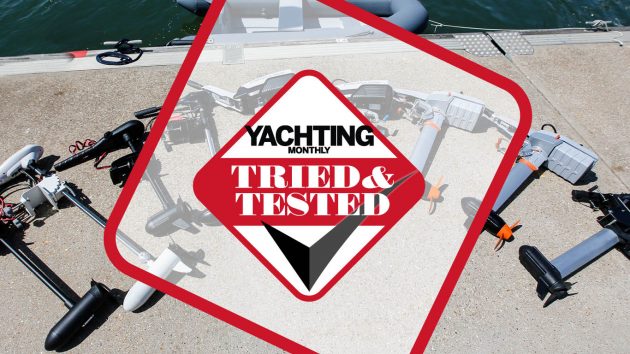
The electric outboard motor has been around for many years, but they have either been too low powered or their lead acid batteries have made them too heavy to lift in and out of a small tender, so petrol outboards have remained the engine of choice.
The development of lightweight lithium batteries has changed all this, making an electric outboard motor a practical alternative to petrol – and making all electric yachts a real possibility too.
With this in mind, we tested 12 models whose all-up weight, or the weight of their individual components, did not exceed the 14-17kg of a 2.5hp petrol outboard.
See how we tested the electric outboards at the end of this article.
Best electric outboard motor

Specifications Outboard weight: 12kg Overall weight with outboard and bracket: 14.5kg Battery capacity: 1085Wh Top speed: 5kts Thrust: 30kg / 66lbs
Designed along the lines of a dinghy rudder, this Remigo outboard is incredibly easy and intuitive to use. No external cables or anything to be snagged, it clips onto a bracket pre-mounted to your tender or dinghy, in a similar way that you’d attach a dinghy rudder.
Flip down the handle, attach the magnetic kill cord and you’re good to go.
On test this outboard gave as much thrust as the ePropulsion below but out performed it in terms of maneuverability. The Remigo can be switched from forward to reverse thrust at the touch of a button.
We like the Remigo for it’s sleek simplicity. If you want a clean smart easy to carry outboard to take you from your mooring to shore or quietly meander from your anchorage to shore then this is definitely worth considering.
We especially liked the rudder effect of this outboard giving us steerage even we had turn the power completely off to coast in alongside our pontoon.
Read Fox Morgan’s review of this outboard – Remigo One Electric Outboard review
Reasons to buy
very easy to stow, innovative rudder design, lightweight, built in battery, easy to mount and dismount
Reasons to avoid
No multiple battery swap options like more conventional electric outboards
Find a dealer at Silent Yachting

Photo: Paul Wyeth
ePropolsion Spirit 1.0 EVO
Yachting Monthly’s best buy
Specifications Motor weight: 10.5kg Battery weight: 9kg Battery capacity: 1276Wh Top speed RIB: 4.5mph Top speed skiff: 6.0mph Thrust: 31kg/68lbs
The Chinese firm ePropulsion has been developing its electric outboard motor range and lithium batteries for some time. We tested the Spirit 1.0 Plus and Evo, both 1kW motors with integral batteries.
Clearly ePropulsion was influenced by Torqeedo, but there are some important differences. From the outset ePropulsion went for a direct drive motor, being quieter and avoiding gearbox problems.
The battery has a greater capacity than the original Torqeedo, and is still 30% higher than the latest version. It also floats – useful if you should drop it overboard.
Fitting the battery is a two-handed job, with the carrying handle being at the back, and latch lock at the front, which requires leaning over the transom to install it. You also cannot see the locating slots underneath, which isn’t quite so easy in a bobbing inflatable. The power cable socket is protected by a rubber cap.
You have a display, but it only shows power being consumed, voltage, and remaining runtime, which means it has larger figures, easier to read on a sunny day, but it lacks GPS speed or range.
It has the same trim settings as the Torqeedo, with a similar fiddly retaining split ring. It also has a magnetic kill cord. Three shaft lengths are available, catering for transom heights up to 61cm. The shaft is streamlined but rotates through 360º for maximum manoeuvrability and reverse.
High battery capacity Quiet 360º rotation
Limited display options
Buy it now from epropulsion

Yachting Monthly’s best in class
Specifications Motor weight: 10.5kg Battery weight: 9kg Battery capacity: 1276Wh Top speed RIB: 4.5mph Top speed skiff: 6.0mph Thrust: 68lbs Regeneration: 4 knots – 40W / 10 knots – 300W
The 1.0 EVO has the same dimensions and performance as the Spirit, but it has the options of a removable tiller, plus remote controls and steering, but the real innovation is that it offers regenerative charging while you are sailing, putting 40W at 4 knots, and 300W at 10 knots back into the battery.
You can even have a wristband remote for steering and throttle.
The ePropulsion Spirit 1.0 EVO is undeniably more expensive than it’s little sister without the regenerative charging and the cost difference is significant. If you are likely to be doing a lot of sailing and using your electric motor from ship-to-shore in relatively remote locations then the regeneration will probably be worth it. For most, though the price differential is probably a little too steep.
Regenerative charging Removable tille Remote controls
Relatively expensive

Torqeedo 1103 and Torqeedo 603
Torqeedo 603 specifications Motor weight: 11kg Battery weight: 4.2kg (floats) Battery capacity: 500Wh Top speed RIB: 4.0 mph Top speed skiff: Not tested Thrust: 44lbs
Torqeedo 1103 specifications Motor weight: 11kg Battery weight: 6kg Battery capacity: 915Wh Top speed RIB: 4.4mph Top speed skiff: 6.0mph Thrust: 68lbs
Torqeedo was the first company to commercially produce an outboard with an integral lithium battery in 2005. The earliest motors used a high-revving geared motor, which produced a characteristic whine. Following the launch of its new larger battery, Torqeedo changed to direct drive at about the same time that ePropulsion arrived on the scene.
The 1103 is 1.1kW and has a removable battery and tiller/throttle. The battery locates in slots in the powerhead and can be dropped in one-handed, with the slots clearly visible from above, which is helpful in a rocking dinghy. It then hinges back and locks in place with a separate plastic pin. The tiller locates in similar slots.
The two are then connected to the motor by a power cable and a data cable, but the latter has an 8mm plug, with five tiny pins that have to be carefully lined up, then secured with a threaded plastic collar. Neither of the sockets have caps to prevent debris or water getting into them when the cables are not connected.
The display on the tiller shows four lines of data at the same time, which makes them small to read (a phone app can be used for a large display). They include volts, battery capacity, range at a given speed, speed in kts, mph or km/h, and power consumption in watts. A magnetic kill-cord cuts the power circuits if you fall overboard.
The motor has four trim positions to allow for angled transoms, but the split ring securing the locking pin is very stiff and fiddly, especially when you have to adjust it hanging over the transom. A side-mounted lever allows the motor to be tilted horizontally. In normal use a catch prevents the motor kicking up in reverse, but this can be released with another side-mounted lever if you are in shallow water.
Long and short shaft versions are available, with the height of the transom to the top of the prop on the long shaft being 62cm. Clamps screws and fittings are stainless steel, making it suitable for salt water use, but an anode is an extra. It has forward and reverse but not 360º rotation.
Established brand with relatively long history Removable battery and tiller Lots of display options
Display hard to read
Buy the Torqeedo 603 now from Torqeedo Buy the Torqeedo 1103 now from Torqeedo
Best Trolling motors
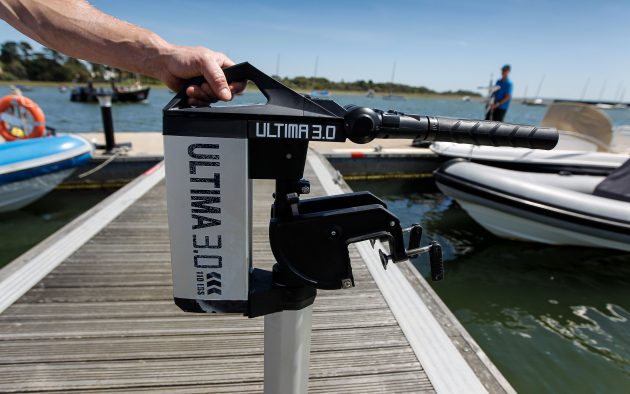
Haswing Ultima 3
Specifications Motor weight: 11kg Battery weight: 5kg Battery capacity: 600Wh Top speed: RIB 4.0mph Top speed skiff: Not tested Thrust: 51lbs
Haswing is a new name to us, but this Chinese manufacturer now has an extensive range of motors, several of which we were able to bring along to our test.
The Ultima 3 has an integral Lithium battery and an output of 1,000W, with the ‘3’ in its name indicating the 3hp petrol outboard its makers claim it is equivalent to. The battery is 600Wh.
The battery was the easiest of all in our test to fit and remove, just sliding down a set of grooves, with contacts in the bottom removing the need for any linking cables or wires, and an easy one-handed operation.
The unit is well engineered, with stainless steel used throughout plus an anode as standard, making this suitable for use in salt water, and a spare anode and shear pin. The tiller/throttle hinges up and down for easy operation and storage. It has a streamlined aluminium leg, but rotates 360º.
A magnetic kill cord is a useful safety feature, and there are 5 LEDs showing battery capacity remaining, but this is the only instrumentation, so there is no way of gauging how much power you are using. It also meant that with no exposed power cables, we could not measure intermediate power settings.
Easy to fit battery Anode as standard for salt water usage High end materials
Limited instrumentation
Buy it now from Amazon

Motorguide Varimax 40
Specifications Motor weight: 9.1kg Battery (Sterling 60Ah) – 8kg Battery capacity: 780Wh Top speed RIB: 3.2mph Top speed skiff: 4.0mph Thrust: 28lbs
Another trolling motor, this has a claimed 40lb thrust and a variable speed electronic control. The throttle pulls forward for ahead, and pushes back for reverse then twists in the same direction for speed. A clever feature once you get used to it. Ten LEDs show the battery state.
The sliding shaft gives transom heights up to 65cm transom to prop, and 360º rotation. It also quickly tilts through 90º, with 5 positions, for shallow or weedy water.
Clamp screws and fittings are mild steel, meaning you should wash it off with freshwater after using it in the sea.
Clever throttle control Variable transom heights accomodated
Quite basic in functionality

Haswing Osapian 55
Yachting Monthly’s best budget buy
Specifications Motor weight: 9kg Battery weight: (Sterling 60Ah) 8kg Battery capacity: 780Wh Top speed RIB: 3.3mph Top speed skiff: 4.4mph Thrust: 35lbs
This is another trolling motor with a claimed 55lb thrust, but with five forward speeds and three reverse on a twist-grip throttle. Again, it is a well-engineered motor, with all fittings and clamp screws made of stainless steel, an anode behind the prop and a spare in the box.
Five LEDs show the battery state. The sliding shaft gives transom heights up to 62cm, and 10 tilt positions.
As with all click-speed throttles you have double the power at Setting 5 compared to Setting 4, and very poor range figures at intermediate speeds compared to motors with electronic throttles.
However it is an excellent value-for- money option for sailors looking for ways to power their tender for short trip
Well engineered Value for money
Poor range at medium speeds

Motorguide SW82
Specifications Motor weight: 13kg Battery weight: 16kg Battery capacity: 1,560Wh Top speed RIB: 4.0mph Top speed skiff: 5.5mph
Motorguide is a well-established US company that is part of the Mercury/Mariner group. The most powerful of the transom mount range, the 82 has a claimed thrust of 82lbs, and is a 24V unit requiring two 12V batteries in series.
It is also designed for saltwater use, with stainless steel clamp screws and fittings, and a large anode on the shaft. It has an extra long shaft, giving up to 93cm transom height to the prop, 360º rotation, and seven tilt positions There are no battery LEDs. An on/off switch under the control head is the nearest it gets to a kill switch.
Well known company Powerful Anode for salt water
No battery LEDs

Haswing Protruar 1
Specifications Motor weight: 9kg Battery weight: 8kg Battery capacity: 780Wh Top speed RIB: 3.4mph Top speed skiff: 4.5mph Thrust: 40lbs
Another Haswing requiring a separate 12V battery, this has a variable speed electronic throttle, and similar features to the Protruar 5, except no kill cord. It claims to be equivalent to a 1hp petrol motor, but in practice delivered 600W.
The sliding shaft only allows transom heights up to 40cm, but a longer shaft version is available. It has 10 tilt positions and 360º rotation.
Another well engineered unit, with stainless steel used throughout plus an anode as standard, and a spare anode and shear pin. The tiller/throttle hinges up and down for easy operation and storage.
Anode for salt water use 360º rotation
No kill chord Limited transom height range
Haswing Protruar 5
Specifications Motor weight: 14kg Battery weight: 16kg Battery capacity: 1,560Wh Top speed RIB: Not tested Top speed skiff: 6.1mph Thrust: 108lbs
Another Haswing, the Protruar 5 is the most powerful model we tested. The unit is extremely well engineered, with stainless steel used throughout for the clamp screws and fittings, plus an anode as standard, making this suitable for use in salt water. A nice touch is the spare anode and shear pin in the kit. The tiller/throttle hinges up and down for easy operation and storage.
Its 5 designation indicates its makers think it is equivalent to a 5hp petrol motor, but in reality it delivers around 2.5kW at 24V so requires two separate batteries. It has a variable electronic throttle, three battery state LEDS and a magnetic kill cord.
The shaft slides up and down, giving a maximum transom height of 62cm and 360º rotation. Ten tilt positions are quickly engaged by a squeeze lever.
The thrust was the highest of the test, making it suitable for heavy boats, but the fine pitch prop significantly reduced its efficiency at speed.
Powerful model Anode for salt water use Battery LEDs and kill chord
Needs two batteries for full power

Motorguide R3 45
Specifications Motor weight: 9.5kg Battery weight: (Sterling 60Ah) 8kg Battery capacity: 780Wh Top speed RIB: not tested Top speed skiff: 4.1mph
This trolling motor has a claimed thrust of 45lbs and five forward speeds. The sliding shaft gives transom heights up to 65cm and 360º rotation, with seven tilt positions. Clamp screws and fittings are mild steel, so should be washed after saltwater use.
The click-speed throttle gives non-linear power gaps, with Speed Setting 5 being double the power of Setting 4. This throttle arrangement results in poor range figures at medium speeds compared to motors with electronic throttles, but it keeps the price down.
360º rotation Plenty of transom height range
Minn Kota Endura Max 55
Specifications Motor weight: 9.5kg Battery weight: (Sterling 60Ah) 8kg Battery capacity: 780Wh Top speed skiff: 4.6mph
Minn Kota is one of the oldest makers of trolling motors. The Max 55 has a claimed 55lb thrust, with a variable speed electronic twist-grip throttle.
Clamp screws and fittings are mild steel, making it best suited for freshwater, though you can use it in the sea if you wash it off afterwards.
It has a fine pitch prop like all trolling motors, which gives a good static thrust, but efficiency, and hence range, falls off at higher speeds, though the electronic Maximiser throttle helps to offset this.
Electronic maximiser throttle helps offset range issues
Big range drop off at high speeds Needs washing after salt water usage
Buy it now from MinnKota
How we tested the electric outboard motors
We took a selection of electric outboard motor units available on the market, and tested them in two situations, firstly on a Frib 275 folding RIB on the Lymington River to reproduce the situation of getting out to your boat in the tender. We then put them on a 4m skiff on the Thames, to see how they perform at higher speeds on a boat with a smoother underwater form and longer waterline on sheltered waters.
Speed: We measured speed using a handheld GPS, and electricity consumed using a clamp ammeter or the motor’s inbuilt power display. We converted these to the range you would achieve, either for a given power, or the full power of the motor’s battery.
Thrust: We measured static thrust using a spring balance. This is a somewhat crude test, as it measures the pulling power of a motor in a static boat, and therefore doesn’t allow the propeller pitch to work at its designed speed.
Function: We checked the stated weights of each of the motors and made a qualitative survey of their main features when used as a dinghy outboard.
We tested the trolling motors with a 60Ah lithium battery from Sterling Power, which cost £360, though you can use a heavier lead acid battery costing around £120 for a good quality AGM or gel. Don’t bother with leisure batteries, which will fail after 4 to 5 trips. You will need a good quality Lithium charger, which will add on £100 or more.
We haven’t included charging in this test, as this is dependent on the charger you are using, whether you are charging from 240V or 12V on board, and whether the power source is mains, a generator, alternator or solar. It’s worth noting that you will rarely be recharging from flat, and will rather be aiming to top up batteries after each use.
Trolling motor or electric outboard motor?
The options today are trolling motors with separate batteries – so called because they were mainly used as auxiliary slow-speed power for anglers, and integral-battery motors built for dinghy propulsion. These are the options a sailor will be looking at when thinking about changing to an electric outboard.
Trolling motors are still popular for low-speed applications, as they are simple and cheap, but they do need a separate 12V battery.
The integral battery motors are sophisticated units designed to give you more speed and greater range for a given power in a small boat, though for any 3-4m boat, the hull speed will limit how fast you can realistically go with any motor unless you start planing.
An electric outboard motor with an integral battery will often include displays showing speed, range at a given speed, and percentage of battery capacity remaining, but these features come with a higher price tag.
The trolling motors and integral battery models in our test were similar in weight and both come in at around the same total weight as a 2.5hp petrol engine.
Enjoyed reading this?
A subscription to Yachting Monthly magazine costs around 40% less than the cover price .
Print and digital editions are available through Magazines Direct – where you can also find the latest deals .
YM is packed with information to help you get the most from your time on the water.
- Take your seamanship to the next level with tips, advice and skills from our experts
- Impartial in-depth reviews of the latest yachts and equipment
- Cruising guides to help you reach those dream destinations
Follow us on Facebook , Twitter and Instagram.
- Motorcycles
- Car of the Month
- Destinations
- Men’s Fashion
- Watch Collector
- Art & Collectibles
- Vacation Homes
- Celebrity Homes
- New Construction
- Home Design
- Electronics
- Fine Dining
- Baja Bay Club
- Costa Palmas
- Fairmont Doha
- Four Seasons Private Residences Dominican Republic at Tropicalia
- Reynolds Lake Oconee
- Scott Dunn Travel
- Wilson Audio
- 672 Wine Club
- Sports & Leisure
- Health & Wellness
- Best of the Best
- The Ultimate Gift Guide
The 10 Most-Exciting Yacht Debuts at the Palm Beach International Boat Show
Besides the debut of smaller vessels, more than 60 yachts over 100 feet will be at palm beach this week. it promises to be a banner event., howard walker, howard walker's most recent stories.
- This 1967 Shelby GT500 Has Been Reimagined to Perfection. Now It’s up for Grabs.
- One of Ferrari’s Earliest Formula 1 Cars Is Now Up for Grabs
- Aston Martin Unveils Its Fastest Vantage Road Car Ever. Here’s What We Know.
- Share This Article

For superyacht shoppers, the Palm Beach International Boat Show, kicking off its four-day run this week, is set to break records with more than 60 yachts over 100 feet long on display. Last year was also a banner year for superyachts at the show.
Headliners will include the likes of the 295-foot Corsair Nero , the 278-foot Victorious by AKYacht, the 230-foot Turquoise-built Talisman C , and 213-foot Benetti Triumph among brokerage yachts, and in new yachts, the 113-foot Ocean Alexander Puro 35 is making its world debut.
There are so many gleaming white vessels over 100 feet, in fact, that the fleet will be split between the Palm Harbor Marina at the main show site on the downtown West Palm Beach waterfront and the Safe Harbor Rybovich Marina two miles north.
Now in its 42nd year, PBIBS will also showcase hundreds of models of dayboats, cruisers, and fishing boats, as well as marine accessories. Running from this Thursday through Sunday, the show coincides with the Palm Beach Modern + Contemporary art show, a fortuitous opportunity for yacht owners wanting to add new art to their collections.
Here are 10 must-see boats at this year’s show.
Corsair Yachts ‘Nero’

The undisputed star of this year’s Palm Beach show? That would be the 295-foot, classically styled superyacht Nero , built in 2007 and inspired by American financier J.P. Morgan’s legendary 1930s steamer Corsair IV . Nero ‘s attendance at PBIBS marks its return to the charter market after an extensive refit in 2021. Now better than new, the boat is being managed by Burgess. With weekly charter rates from $497,000, the vessel offers five-star accommodations for 12 guests in six cabins, with pampering from a crew of 20. Part of the refit included a full interior refresh by Italian interior designer Laura Pomponi, plus a major focus on wellness. That meant the construction of a new, state-of-the-art gym and spa, the assistance of a certified onboard trainer, a masseuse and beautician. After PBIBS, Nero will spend the winter in the Caribbean before returning to the Med for the summer season.
Ocean Alexander Puro 35P

Ocean Alexander is debuting the first of its new Puro superyacht series at PBIBS. The 113-foot Puro 35P comes from the drawing board of Italian designer Giorgio M. Cassetta and is a step back from the polarizing lines of OA’s recent Revolution and Explorer series with their bold, vertical bow designs. Aimed at long-distance cruising, the 35P can carry over 5,000 gallons of fuel and is powered by twin 2,000 hp MAN V12s for a 24-knot top speed. Twin 55kW Kohler generators can also keep the yacht powered at anchor for long periods. Other standout features include extensive glazing in the chiseled fiberglass hull, a forward deck plunge pool, and spacious accommodations for 10 guests.

Think of it as the “starter” Sirena. Aimed at a younger demographic, the Turkish builder’s brand-new Sirena 48 is making its U.S. debut at PBIBS after a global reveal at last fall’s Cannes boat show. Such is its appeal that 27 hulls have already been sold, with 13 of the orders coming from North America. Looking like a scaled-down version of Sirena’s popular 58, its distinctive, trawler-style lines are from Argentinian designer Germán Frers. With more interior space than a typical 48-footer, the yacht offers three staterooms—plus a crew cabin—a spacious, light-filled salon, a large cockpit, an oversized flybridge, and a vast forward social area. Take your pick from twin 550 hp Cummins QSB, or 670 hp Volvo D11 turbo diesels. Or the builder is also offering hybrid power with twin 285 hp electric motors charged up by variable-speed generators that are good for a 30-mile battery-only range.
Feadship ‘Olympus’

Picture purchasing a classic 180-foot Feadship superyacht, and then getting a $10 million bill for a major refit. That was the case with Olympus , built by the Dutch masters at Feadship in 1996 to a design by Britain’s Andrew Winch and the celebrated naval architect Frits De Voogt. Sold in 2022, the new owner sent it to the Monaco Marine refit center in La Ciotat, France for a major makeover. It included overhauling the 2,600 hp Caterpillar engines and generators, repairs to the structure, substantial upgrades to the guest areas and crew quarters, and new paint throughout. With the work completed just last year, the vessel is said to be in mint condition. Offered jointly by brokers Fraser and Edmiston, Olympus has an asking price of $28.5 million. With accommodations for 16 guests in eight cabins, the boat’s highlights include two primary suites, tropical-spec air conditioning, and Palm Beach-chic decor.
Benetti ‘Triumph’

Italian yachting powerhouse Benetti is showing off its superyacht-building skills with the 213-foot Triumph . Delivered in 2021, this Giorgio M. Cassetta-designed steel-and-aluminum world girder features six decks, a 1,400-square-foot primary suite with outdoor terrace and adjoining lounge, a 750-square-foot beach club, and a touch-and-go helipad. What sets Triumph apart, however, is its lavish interior furnishings put together by the owner along with Benetti Interior Style and Monaco-based Green & Mingarelli Design. It includes pieces by French glassmaker Lalique, marble from Marfil, Statuario and Armani, furs, silk and wool carpets, plus a collection of cool black-and-white wildlife photographs by British fine art photographer David Yarrow. The pièce de résistance? That would be the owner’s Triumph Bonneville motorcycle displayed in the salon.
Fjord 39 XP/XL

Germany’s Fjord Yachts, part of the Hanse Group, has a new 39-foot day boat that it’s unveiling at the Palm Beach show. The 39 XP and XL keep all the bold design cues of the bigger Fjord 41 XP and XL, like a big, open cockpit, walkaround center console, vertical bow, mile-high windshield and stretched hardtop. As for the differences between the XP and XL, it’s all about power. The XL comes with a choice of twin 320hp Volvo D4 diesels, or bigger 440 hp D6 versions, both with Volvo stern drives. Likely more appealing to U.S. buyers will be the XP powered by twin 400 hp Mercury Verado V10 outboards giving a 50-knot top speed. Pricing starts at around $500,000.
Turquoise ‘Talisman C’

Chandeliers don’t come more dramatic than this. Cascading down the central spiral staircase of the Turkish-built, 231-foot superyacht Talisman C , this jaw-dropping piece of art comprises an array of multi-colored glass balls threaded on stainless-steel rods and illuminated by hanging fiber-optic strands. It’s the creation of Prague-based Crystal Caviar and is one of a number of glass installations on this sleek, low-profile superyacht. Built in 2011 by the Proteksan Turquoise shipyard, Talisman C was designed inside and out by London-based studio H2 Yacht Design, with naval architecture by Italy’s Hydro Tec. With cabins for 12 guests, one of its highlights is a huge primary suite, which boasts more crystal chandeliers and a private library. Twin 2,447 hp Caterpillar diesels give a top speed of 18 knots and a transatlantic range of 7,000 nautical miles at 12 knots. It’s listed with Burgess for $59.9 million.
Sanlorenzo 44 ‘Kamakasa’

Delivered in 2020 and sold to a new buyer just last August, the 146-foot Sanlorenzo 44 Alloy Kamakasa will be for sale at PBIBS. The asking price, through the Italian Yacht Group, is $23.75 million. Lack of use might also be the issue here; the yacht’s twin 2,600 hp MTU V16 diesels have a mere 289 hours on the clock. Built in aluminum to a design by Rome-based Zuccon International Project, Kamakasa was the second hull in the Sanlorenzo 44 Alloy series. One of the top features is a primary suite that spans three levels and almost 1,600 square feet; it also comes with a private Jacuzzi, separate bathrooms, a walk-in closet, and a private study. The yacht’s lightweight construction and MTU power combine to deliver an impressive 20-knot top speed.
Bahama 41 GT2

As ultimate, reel-’em-in, fishing center consoles go, the Bahama 41 from West Palm Beach-based Bahama Boat Works is as hard-core as they come. But when owners kept asking for a little more comfort for the family, the builder responded. The result is the brand-new flagship 41 GT debuting at PBIBS. While the proven, wave-slicing hull stays the same, the cockpit layout is new. In place of the single bench seat, there are now three-across bucket seats with a second row behind. The wider console now has space for a pair of 22-inch Garmin screens, while the new extended hardtop features sun shades and even a rain shower. Outboard choices stay the same with either twin Mercury V12 600s, or four 400 hp Mercury V10s, good for a 65-knot-plus top speed. Pricing is from around $920,000.
Heesen ‘Book Ends’

Launched in 2022, this 164-foot Heesen is part of the Book Ends collection, owned by an American couple who have had more than 18 yachts with the same name. The exterior design of this Heesen was by Omega Architects, while Dutch studio Van Oossanen did the naval architecture. The yacht is part of Heesen’s fast cruising series, which is more efficient than other vessels its size, and can reach 23 knots at full speed with its MTU 16V 4000 M65L engines. The yacht is listed through Ocean Independence for 42 million Euro, or about $45.7 million.
Read More On:
- Ocean Alexander
More Marine

Meet Spear, an Epic 460-Foot Trimaran Concept That Looks Like It’s From the Year 3000

This New 131-Foot Aluminum Catamaran Concept Can Take on a Transoceanic Expedition

This New 150-Foot Superyacht Can Cruise Through Shallow Waters in Florida and the Bahamas With Ease

Open Space, Eco-Friendly Tech: What a Rising Class of Millennial Superyacht Owners Is Looking For

Culinary Masters 2024
MAY 17 - 19 Join us for extraordinary meals from the nation’s brightest culinary minds.
Give the Gift of Luxury
Latest Galleries in Marine

8 Fascinating Facts About ‘Nero,’ a 295-Foot Superyacht Inspired by a 1930s Classic

Palm Beach Vitruvius in Photos
More from our brands, longevity clinic modern age reveals closure, james madison’s record $53m in student fees tops all public schools, jack black says ‘i’m ready’ for a ‘school of rock’ sequel, but mike white needs to write it and ‘he’s real busy right now’ with ‘the white lotus’, ex-husband of murdered dealer arrested, another backdated hirst sculpture revealed, lawmakers pursue smithsonian jewish history museum, and more: morning links for march 22, 2024, the best yoga blocks to support any practice, according to instructors.

The Best Outboard Motor for a Sailboat

Last Updated by
Daniel Wade
June 15, 2022
The technology of sailing has remained mostly unchanged for centuries. Since learning to harness the power of wind, sailors have been transiting the world’s oceans, expanding trade routes and exploring new cultures. Although nothing more than a renewable natural resource and a single sail is needed to move a sailboat along the water, there are times when it’s important (and in our modern age, convenient) to leverage off a motor to get you where you need to go.
Like any unique piece of equipment in the world of sailing, outboard motors come in a variety of sizes with features and options to fit any owner’s needs. But of course, one size doesn’t fit all. Every boat is different – even those that come off the production line at the same time – and every owner is looking for something specific when it comes to their sailboat. From the purpose of owning the boat (blue water sailing vs. racing) to the location and impact on maintenance (cold weather vs. tropical weather), an outboard motor is just one of the many elements that will define a sailboat’s function and performance.
Whether you’re a new owner, or a veteran sailor, it’s important to know the basic components of any outboard motor . You should also have an idea of what you want your outboard motor to do for your size and model sailboat.
Table of contents
Outboard Motor Size
A larger boat doesn’t necessarily mean a larger motor. Although there are different ratings for different classes of boats, a small power plant can be more effective than a larger one. Conversely, an outboard motor can easily overpower a small boat and create unsafe conditions at high speeds. Guidelines and requirements differ between motorboats and sailboats. And while there is some overlap, these considerations apply directly to sailboats.
Engine power has to do with how much water a boat displaces. For sailboats, smaller is better. If you’re a bit of a math geek, the exact formula is 4 horsepower for every 2200lb of weight. Coupled with a propeller size, which can be determined using a propeller calculator , you’ll get a rough estimate to use as a guideline to start shopping. This is a good first step, since size is essentially a fixed variable. Though it’s worth noting for those who are buying a sailboat directly from the manufacturer, that actual weight will increase after delivery – once all other rigging and outfitting has been completed.
Physical size of your outboard motor is an important consideration and is directly related to the design of your sailboat. An outboard motor is made up of three parts from top to bottom:
- The Powerhead – Houses the engine. The bulbous part of the motor.
- The Midsection – Houses the exhaust system. Varies in length and design.
- The Lower Unit – Propellers attach to the gearbox. Submerged when operational.
Shaft length is an important design element and should be considered when purchasing a motor. A shaft that is too short will obviously prevent the propeller from being submerged in water, while a shaft that is too long will extend the propellers too far. Not only will it decrease the efficiency of your engine, it will create unnecessary drag. Know your transom length when looking at different models.
When an outboard motor is not being used, it should be stowed in its upright position. Some of the larger motors have an automated switch that will raise it out of the water, but some must be secured manually. Make sure everyone who sails with you is capable of lifting and securing the motor out of the water in case of an emergency.
Outboard Motor Power
Any kind of motor installed on a sailboat (inboard or outboard) should be viewed as a tool to help with maneuvering. Although there are some very skilled sailors out there who can sail into their slip without the aid of a motor, many harbors have restrictions that either don’t allow for the use of full sails, or there simply isn’t enough room to maneuver. A motor with both forward and reverse gears helps tremendously with docking.
While there is no exact correlation between boat length and total weight, the following is a rough guideline:
- 1-4 HP for boats up to 20’ (approximately 1000-2000lbs)
- 4-18 HP for boats between 20-30’ (approximately 2,000-10,000lbs)
- 18-34 HP for boats between 30-40’ (10,000lbs or more)
There are some things to consider when deciding how much horsepower you need or want. Location and the type of conditions you expect you’ll be sailing in is one of the biggest factors. Heavy seas and high winds typically associated with open ocean sailing will put more strain on your engine, and in some cases overpower it, whereas an engine that is heavier than needed will add unnecessary weight when racing. If you plan on motoring for long distances, consider purchasing an engine that will stand up to a lot of use.
Less HP is required for:
- Boat Design – Single hull boats made out of fiberglass require less power.
- 2-Stroke Engines – This is due to an overall lighter weight engine and higher torque.
- Diesel Engines – Diesel delivers more torque because the rate of compression is greater.
- Bigger Propellers – More surface area means more water displacement.
- Location – Motoring on lakes and rivers requires less power than open ocean.
- Distance – A smaller engine is suitable for shorter distances.
More HP is required for:
- Boat Design – Catamarans and heavier boats (regardless of size) require more power.
- 4-Stroke Engine – Engine weight and an extra step of compression yields less power.
- Gas Engines – The rate of compression for gas engines is much lower than diesel.
- Smaller Propeller – A smaller propeller displaces less water.
- Location – Open ocean, with tides and currents, will strain a smaller engine.
- Distance – Cover more distance when wind conditions are poor requires a larger engine.
Outboard Motor Cost
There is no way to quantify how much you will pay for any given motor. But there are several costs associated with owning an outboard motor that are definitely worth considering when making your purchase.
Certainly, a lager, more-powerful engine is going to be costlier than a smaller engine with lower horsepower. But as mentioned earlier, size is not necessarily a guarantee of performance and efficiency. At the same time, there’s only so much you can get out of an engine before you exceed its capability. Larger engines tend to help with resale value should you choose to sell your boat at some point, but a boat outfitted with right motor to begin with will always perform better than a motor that’s large just for the sake of it.
Factor in maintenance costs and fuel when looking at models. You want to run your engine at around 90% of its max RPMs to balance proper fuel usage and with wear and tear. Making a few calls to marine mechanics to inquire about an engine you’re interested in will give you a lot of information a sales person won’t be able to give you. The good news about outboard motors is that most of them are portable, which means you won’t have the added cost of either paying a mechanic to come to you, or having to get your boat to the yard, which usually requires help from a very good friend willing to spend all day driving and sailing back and forth.
Owning a boat requires constant care and maintenance, so a little knowledge goes a long way. While an outboard motor is not required for sailing, it’s a convenient addition that can greatly increase your enjoyment out on the water. Being patient and spending time researching engines will not only help you make the correct purchase but will help you take advantage of a great deal when it presents itself. Whether you sail the Caribbean, or race off the coast of California in a catamaran, there is an outboard motor that’s just right for you.
Related Articles
I've personally had thousands of questions about sailing and sailboats over the years. As I learn and experience sailing, and the community, I share the answers that work and make sense to me, here on Life of Sailing.
by this author
Sailboat Upgrades
Most Recent

What Does "Sailing By The Lee" Mean?
October 3, 2023

The Best Sailing Schools And Programs: Reviews & Ratings
September 26, 2023
Important Legal Info
Lifeofsailing.com is a participant in the Amazon Services LLC Associates Program, an affiliate advertising program designed to provide a means for sites to earn advertising fees by advertising and linking to Amazon. This site also participates in other affiliate programs and is compensated for referring traffic and business to these companies.
Similar Posts

How To Choose The Right Sailing Instructor
August 16, 2023

Cost To Sail Around The World
May 16, 2023

Small Sailboat Sizes: A Complete Guide
October 30, 2022
Popular Posts

Best Liveaboard Catamaran Sailboats
December 28, 2023

Can a Novice Sail Around the World?
Elizabeth O'Malley

4 Best Electric Outboard Motors

How Long Did It Take The Vikings To Sail To England?

10 Best Sailboat Brands (And Why)
December 20, 2023

7 Best Places To Liveaboard A Sailboat
Get the best sailing content.
Top Rated Posts
Lifeofsailing.com is a participant in the Amazon Services LLC Associates Program, an affiliate advertising program designed to provide a means for sites to earn advertising fees by advertising and linking to Amazon. This site also participates in other affiliate programs and is compensated for referring traffic and business to these companies. (866) 342-SAIL
© 2024 Life of Sailing Email: [email protected] Address: 11816 Inwood Rd #3024 Dallas, TX 75244 Disclaimer Privacy Policy
- THE PRINCESS PASSPORT
- Email Newsletter
- Yacht Walkthroughs
- Destinations
- Electronics
- Best Marine Electronics & Technology
- Boating Safety

14 Great Pocket Cruisers in 2023
- By Victor Tan
- Updated: July 20, 2023
Pocket cruisers and mini yachts are generally vessels under 50 feet in length overall, and can include express cruiser designs, flybridge yachts as well as either monohull or catamaran hull forms. They are cruising boats easily handled by a small, or even shorthanded, crew. Pocket cruisers generally have wave-taming hull designs and have the ability to take on sporty seas, offer comfortable accommodations belowdecks with one or two staterooms for extended voyages, “homelike amenities,” and the ability to cruise as slowly or as quickly as an owner desires with inboard- and outboard-power options. These pocket-cruising boats have the range for longer voyages , can pull up in skinny water at the sandbar thanks to shallow drafts, and head over the horizon where cruising adventure awaits. Pocket cruisers are true multitasking yachts. When it comes to family and couples cruising, it’s hard to beat a well-built and well-equipped and pocket cruiser.
Best Cruising Boats Under 50-Feet
The following 14 pocket cruisers and mini yachts are all vessels we’ve seen, been aboard, and tested. They are listed in no particular order.
- Hood 35 LM: high-tech, family-friendly pocket cruiser
- Galeon Yachts 375 GTO: mid-size boat with plenty of below-deck space
- Aquila 42: sleek power catamaran ready to entertain
- Azimut Verve 42 : small, yet mighty yacht ready for open water
- Hinckley Yachts 35: luxury picnic cruiser with range
- Beneteau Gran Turismo 45: sleek cruising yacht with all the amenities
- Solaris Power 48 Open: eye-catching power yacht with 360-degree views
- Cruisers Yachts 42 GLS: luxury cruiser yacht with powerful outboard options
- Back Cove 34O: modern outboard power combined with classic Downeast styling
- Picnic Boat 40: speedy and fuel-efficient vessel with great looks
- Aquila 36: comfortably seat up to 20 guests for fun on the salt
- Boston Whaler 350 Realm: multitasker built for fishing and entertaining
- MJM 35z: sporty, aesthetically pleasing, cruising-conscious features and elegant lines
- Greenline 39: sturdy-looking lines and environmentally-friendly power
When Android co-founder, Rich Miner, wanted a new family-friendly pocket cruiser , he turned to a custom-penned C.W. Hood design and a Lyman-Morse-built 35-footer, which has a timeless Down East profile matched to seriously modern technology under the hood.
This yacht looks like a traditional, cold-molded Down East dayboat, but actually, it has everything, from Hamilton HJX Series water-jet drives to a planned Sea Machines autonomous command-and-control system . Top speed: 40-plus knots.
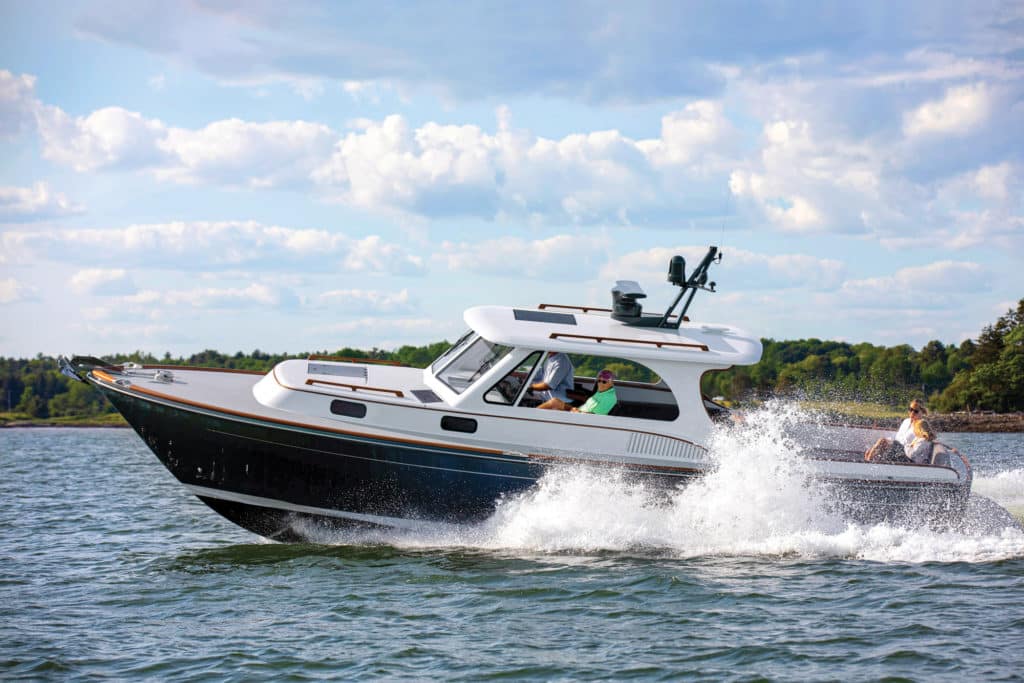
Quick Specifications
Galeon yachts 375 gto.
Even the remnants of Hurricane Ian, couldn’t dissuade the Galeon Yacht 375 GTO from its cruising mission. The small yacht’s wave-splitting hull form is paired to torque-filled 600 hp Mercury Verado outboards , giving this fun-in-the-sun boat a 47-knot top hop.
The 375 GTO is a speedster, to be sure, but it’s also so much more. Just about every aspect of the main deck seating is transformable and multifunction, from the aft seating to the alfresco dining abaft the helm, and beyond. It also has a family-size and eminently cruise-worthy belowdecks space for four guests, all while providing a foredeck entertaining lounge too.
The Galeon Yachts 375 GTO ticks all the boxes for an easy-to-handle and sporty cruiser.
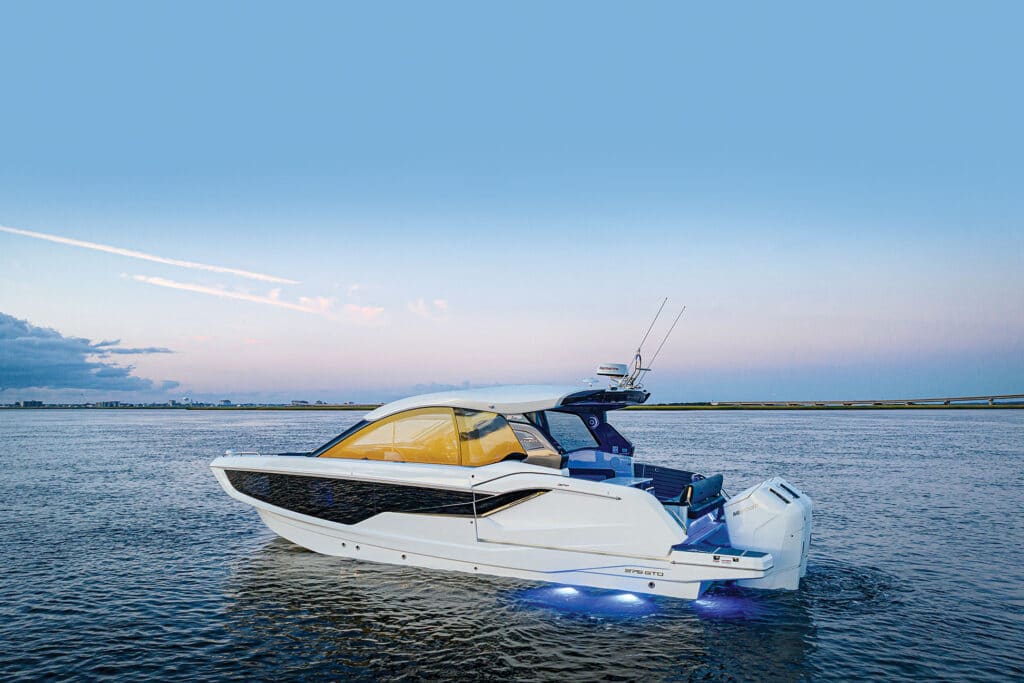
Aquila 42 Yacht Power Catamaran
Following the success of its 44-, 54- and 70-foot power catamaran models, Aquila has launched the stable-as-a-table, owner-operator-ready Aquila 42 Yacht Power Catamaran .
The Aquila 42 is the entry point into the builder’s yacht line and is noteworthy for its ability to accommodate anywhere from a two- to four-stateroom layout, depending on the owner’s cruising requirements. There are alfresco spaces to manage the sunset cruise with friends and family, including a foredeck lounge area that can be accessed via centerline steps from the flybridge. The Aquila 42 is available with several Volvo Penta diesel-engine options .
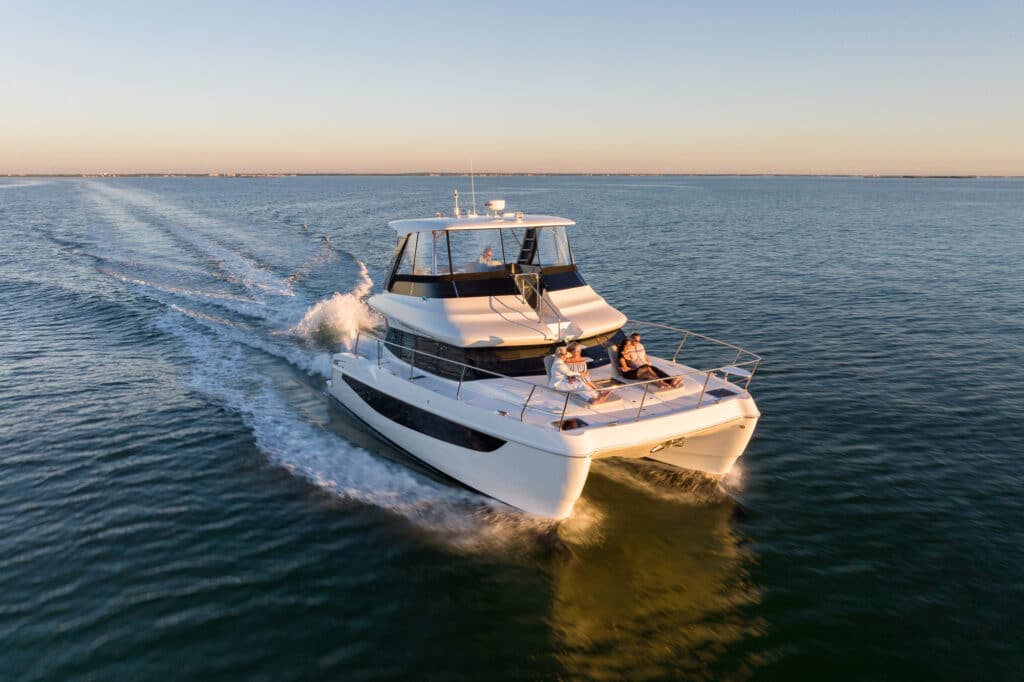
Azimut Verve 42
Want to cruise from Florida to Bimini in about an hour? The Azimut Yachts Verve 42 can do that thanks, in part, to triple 450 hp Mercury Racing outboards and a hull designed to dice-and-slice a seaway. Top hop: 45 knots. The Verve 42 also has style for miles with a fine entry, raked hardtop, and a razorlike sheerline accented by sweeping hull glass from bow to stern. It’s striking.
With accommodation for a family of four, the Verve 42 is also solid under the hull tokeep everyone safe on those passages. The Verve 42’s hull is built of fiberglass and uses vinylester resins for blister protection. The yacht’s deck and hardtop are comprised of carbon fiber for strength without added weight. This all means that the Azimut Verve 42 is built to CE Classification Type A , making it suitable for sea voyages where winds can exceed 45 mph and seas to 13 feet.
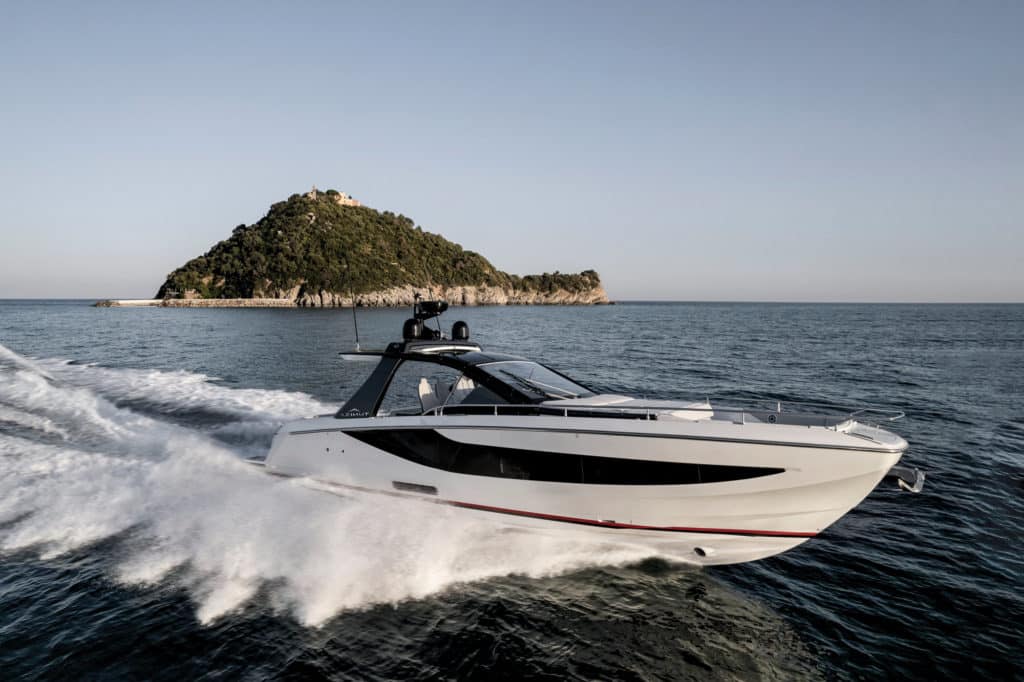
Hinckley Yachts 35
The Hinckley Yachts 35 takes everything that yachtsmen like about this pedigreed-brand’s classic profile and infuses today’s modern outboard power to create 40 knots of sheer fun wrapped in sheer luxury.
This 35-foot Hinckley is built on a Michael-Peters-penned hull form with a fine entry, wider-than-average chines and a moderate deadrise. While the boat is built to sprint when desired, it’s also a relatively economical cruiser. For instance, a comfortable 24-knot cruise the Hinckley Yachts 35 has a 276-nautical-mile range.
It also has a tech-build thanks to vacuum-infused carbon-fiber composites and epoxy resin. An integrated interior structure is infused with the hull adding rigidity. The hull is then post-cured in an 80-foot oven, further strengthening the structure.
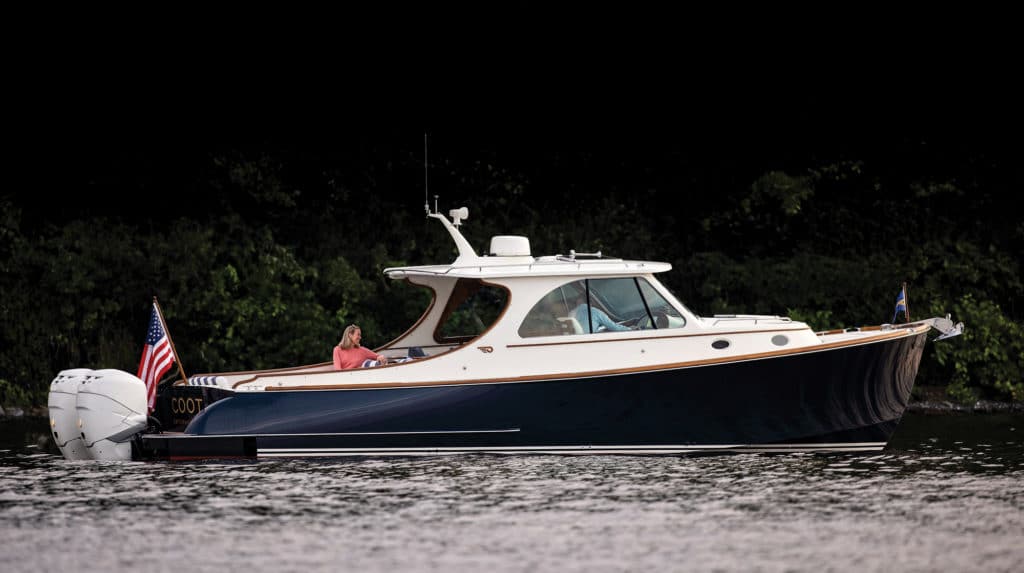
Beneteau Gran Turismo 45
The Beneteau Gran Turismo is the flagship of the builder’s four-model GT series, which also includes 32-, 36- and 41-foot models.
The Gran Turismo 45 ’s cruise-centric layout includes two staterooms and two heads belowdecks, as well as a galley down. There is also a dinette for meals and a settee for rainy-day lounging. Entertaining guests and enjoying the sun is the primary mission of the main deck.
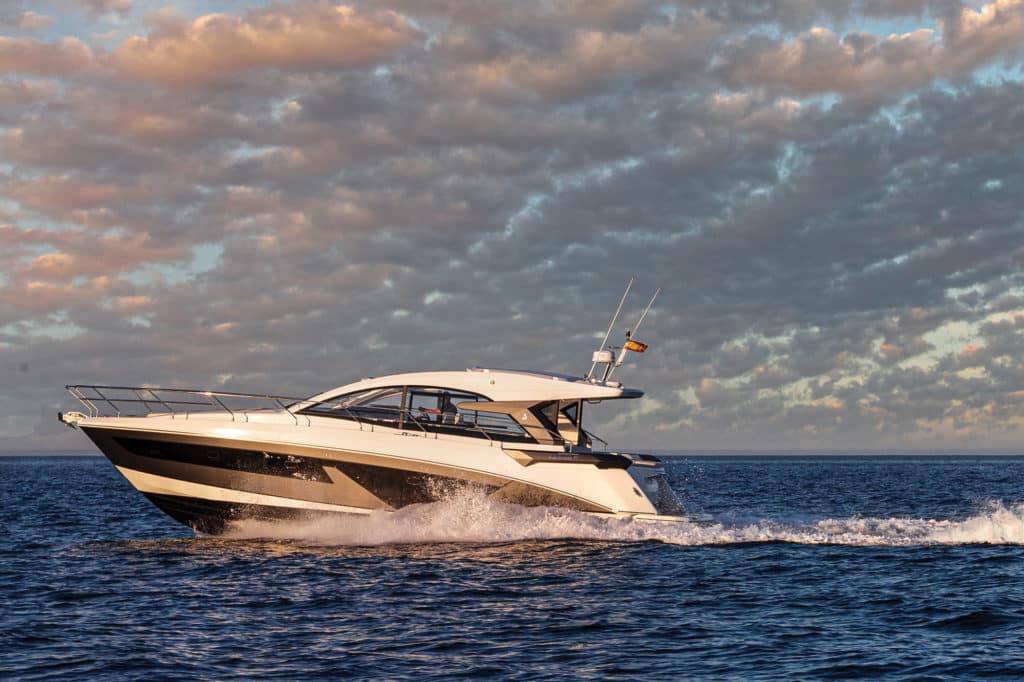
Solaris Power 48 Open
The Solaris Power 48 Open was the first powerboat from this longtime builder known for its sailing yachts, ranging from 40 to 110 feet length overall. The Solaris Power 48 Open is notable for its wave-slicing plumb-bow design, high freeboard forward and 32-knot-plus speed. Power is twin 480 hp Volvo Penta IPS650 diesels.
The high freeboard keeps the deck dry and help creates sizable volume belowdecks with an average 6-foot-6-inch headroom. This enables real estate for either one or two staterooms. With the single-stateroom setup, there is a forepeak master stateroom while an L-shaped settee converts to sleeping accommodations for family or occasional guests. Interior wood options are oak or walnut.
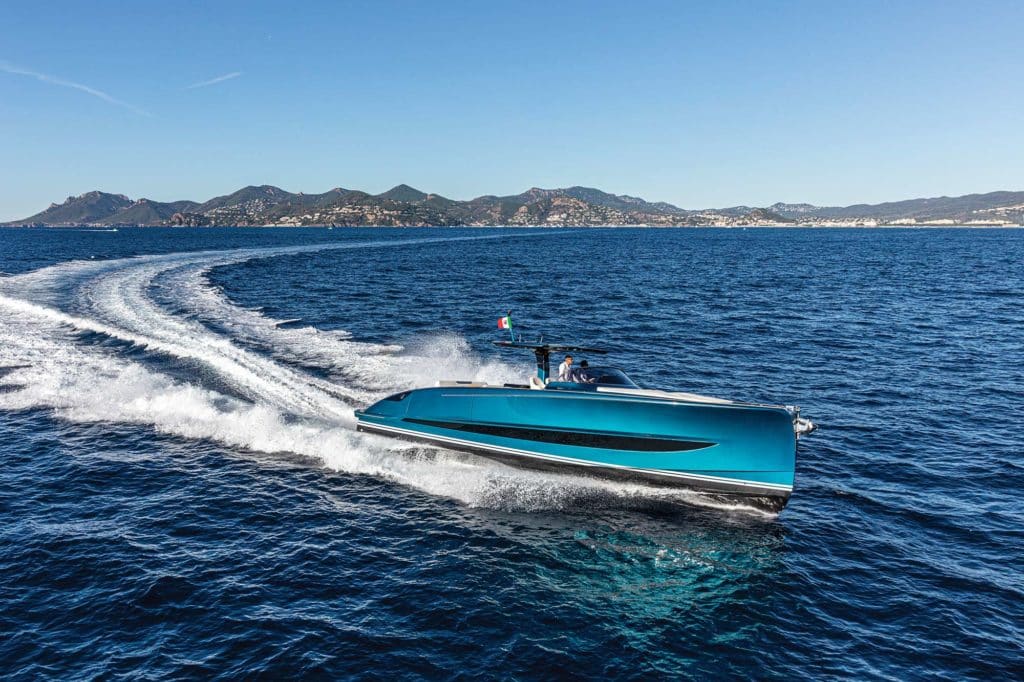
Cruisers Yachts 42 GLS
Outboard-power cruising aficionados will appreciate the triple-engine options for the Cruisers Yachts 42 GLS . The 42 GLS we got aboard had the triple 400 hp Mercury Verados , which produced a top hop of 45 knots, but triple 450 hp Verados are available. Triple 350 hp Mercury Verados are the standard engine option. No matter the power arrangement, this express cruiser can easily be used for wakeboarding and tube towing. The 42 GLS is designed to handle the rough stuff too, with a fine entry and 21-degree transom deadrise.
For cruising enthusiasts, the 42 GLS has a master stateroom with an athwartships and a nearly queen-size berth, and the lower salon’s U-shaped dinette converts to a queen-size berth for the kids.
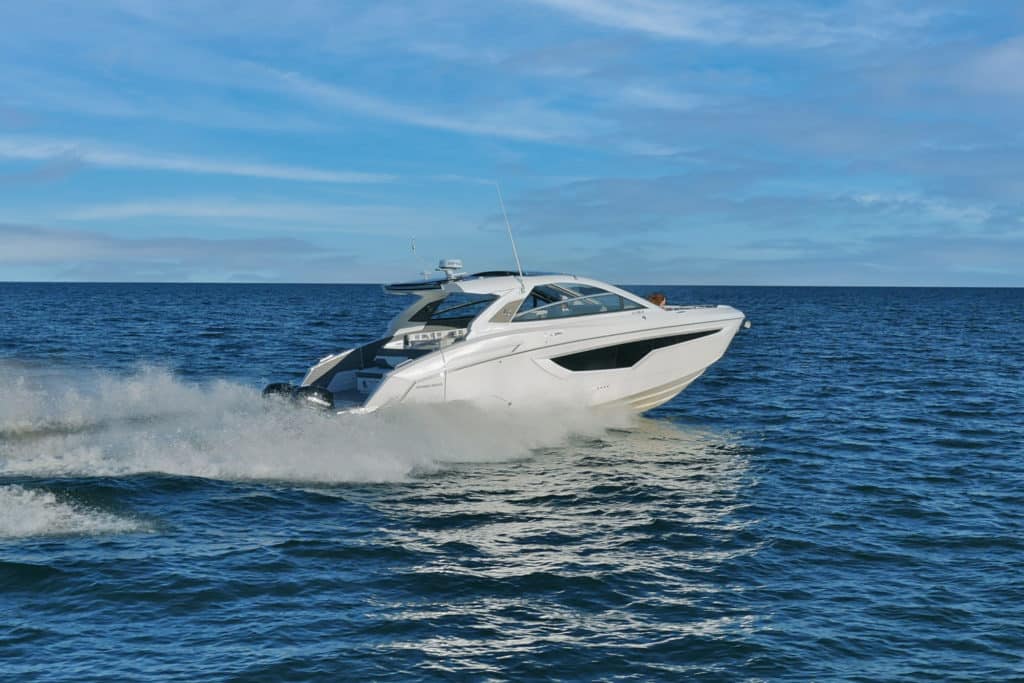
Back Cove 34O
Combining modern outboard power with classic Downeast styling, the Back Cove 34O touts award-winning standards with cruising in mind. The 34O is equipped with twin 300 hp Yamaha outboards, engines that allow the Newport International Boat Show’s 2018 Best Powerboat Under 35 Feet winner to travel up to 214 nautical miles at 24 knots on a 250-gallon fuel tank.
Belowdecks, the 34O has an island double berth and a split-head arrangement with the toilet to port and a separate shower stall to starboard. On the main deck, a U-shape dinette to port accommodates four or more guests on the Back Cove Yachts vessel. The 34O’s galley is equipped with a Cuisinart microwave, a two-burner Kenyon electric cooktop and a Vitrifrigo fridge and freezer.
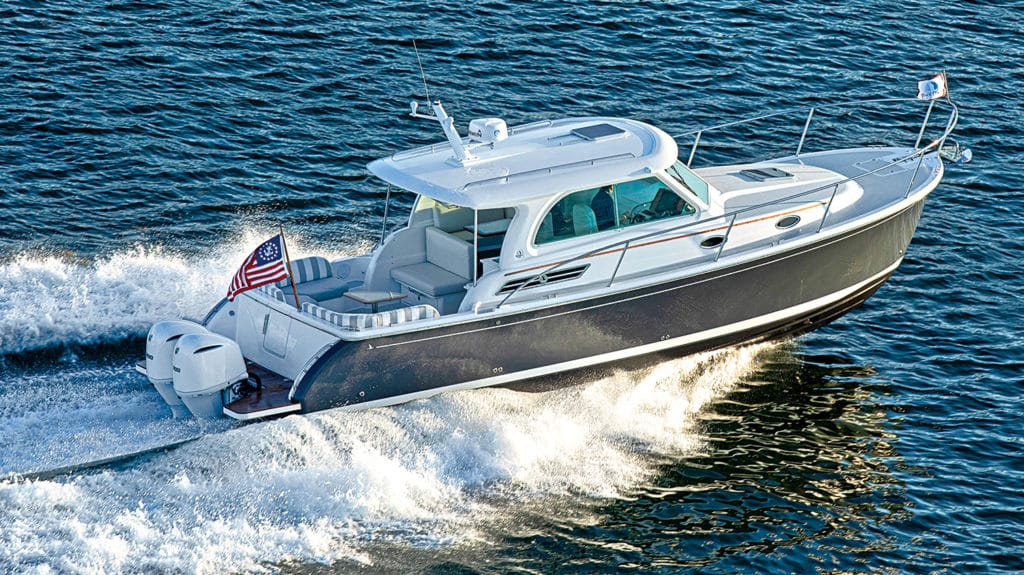
Picnic Boat 40
Hinckley Yachts unveiled its first Picnic Boat more than two decades ago. Now, after two previous, sub-40-foot models, the Maine-based boatbuilder has developed its largest and most advanced model to date: the Picnic Boat 40.
Twin 480 hp Cummins diesel engines paired to twin Hamilton 322 jet drives propel the yacht to a 30-knot cruising speed and 34 knots on the pins. With optional twin 550 hp Cummins diesels, cruise and top-end speeds jump to 35 and 38 knots, respectively.
There is an L-shaped settee with a table and a wet bar on the main deck to port. The helm station is forward and to starboard with a benchseat for two. There is also a companion seat across from the helm. Belowdecks, there is 6-foot-2-inch headroom, and the dinette table drops to form a California-king berth for overnights and weekending.
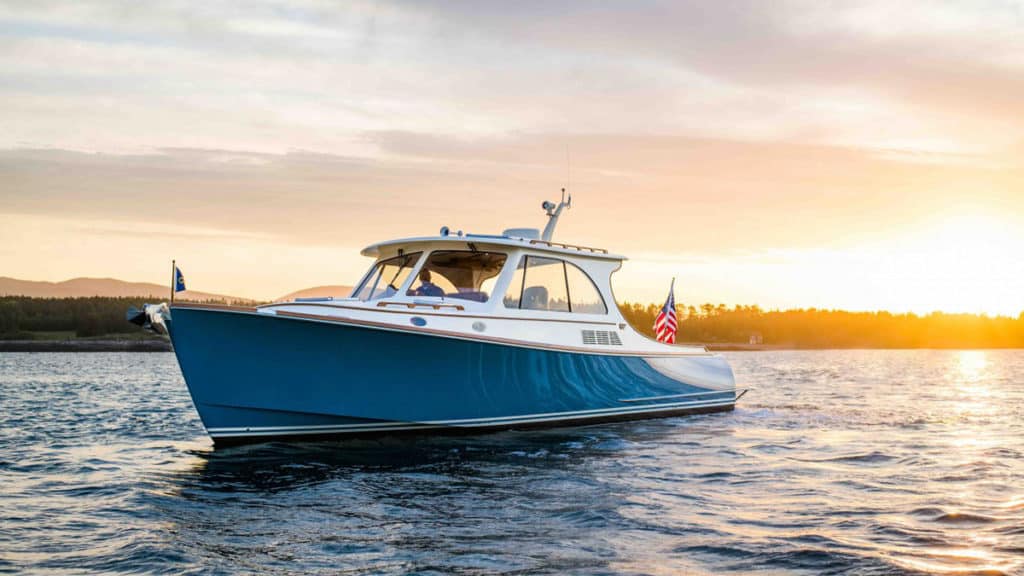
Aquila Power Catamarans started its line with 44- and 48-footers, and now the builder’s Aquila 36 takes the line into the midsize market.
The 36 features a single, main-living area from bow to stern, helped in part by the vessel’s 14-foot, 7-inch beam. The boat can comfortably seat up to 20 guests for fun on the salt. Several Mercury Verado engine options are available for the Aquila 36, including twin 250-, 300- and 350-hp four-strokes. With the 350s, the Aquila has a top-end speed of 37 knots.
Other notable features include a fiberglass hardtop, a dinette, a cooktop, a fridge, a sink and a smokeless grill. Belowdecks, there are two staterooms with nearly queen-size berths, en suite heads and 6-foot-6-inch headroom in each.
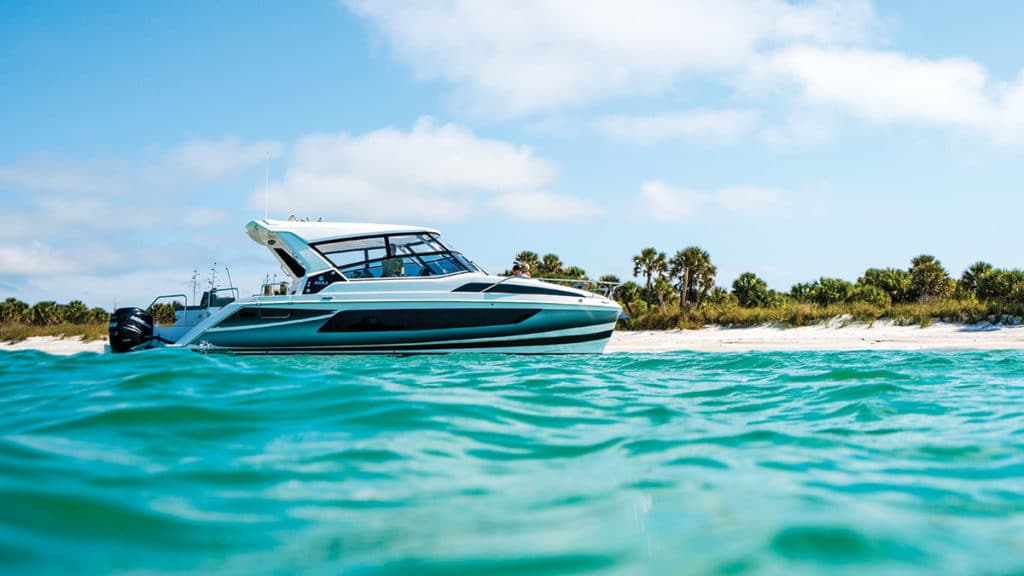
Boston Whaler 350 Realm
From fishing and entertaining guests to diving and overnight cruising, Boston Whaler ‘s 350 Realm is a multitasker. And it’s fast, too. It’s powered with either triple 300 hp or triple 350 hp Mercury Verados. The 350 Realm can reach a top speed of 46 knots.
At the helm, two Raymarine displays provide vital navigation data. The captain can take in the displays’ view from a doublewide helm seat. There’s a flip-down platform for standing when needed and a footrest when desired.
There is a V-shaped berth that converts into a double berth with a filler cushion. The separated head has a VacuFlush MSD and a hot-and-cold shower. Owners also have the option to add a microwave and a flat-screen TV.
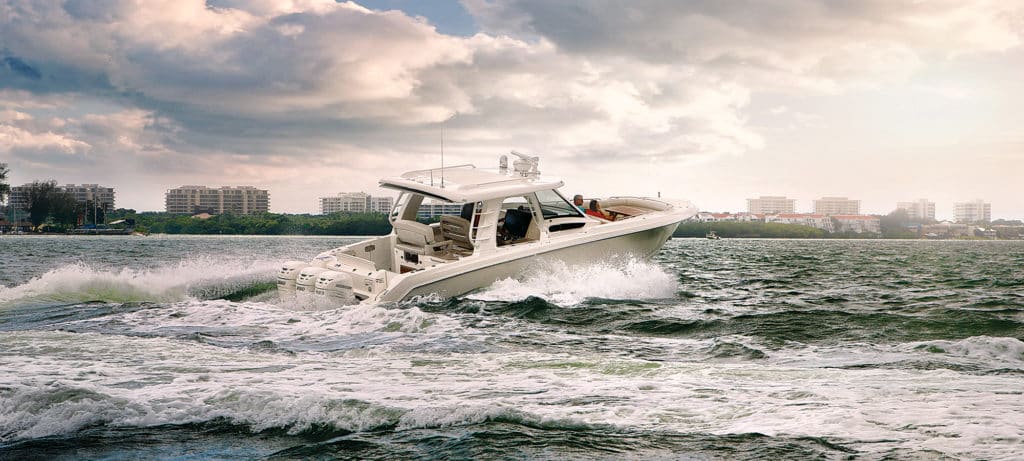
The MJM 35z can reach a top speed of 44 knots and a cruising speed of 33 knots on its optional 350 hp Mercury Verado outboards; twin 300 hp outboards are standard on this MJM Yachts vessel. Additionally, the 35z can travel up to 304 nautical miles on its 250-gallon fuel tank.
The 35z has a flush-deck layout and to port is space for an electric grill, a baitwell, a sink, an ice maker and a fridge. There are two Stidd helm seats—one for the helmsman and the other for a copilot—that rotate to face the rest of the seating aft. In the cabin is V-shaped seating forward that can be converted to a berth.
Owners also have the option of adding a Seakeeper 3 gyrostabilizer and a full-length Bimini top to shade the cockpit.
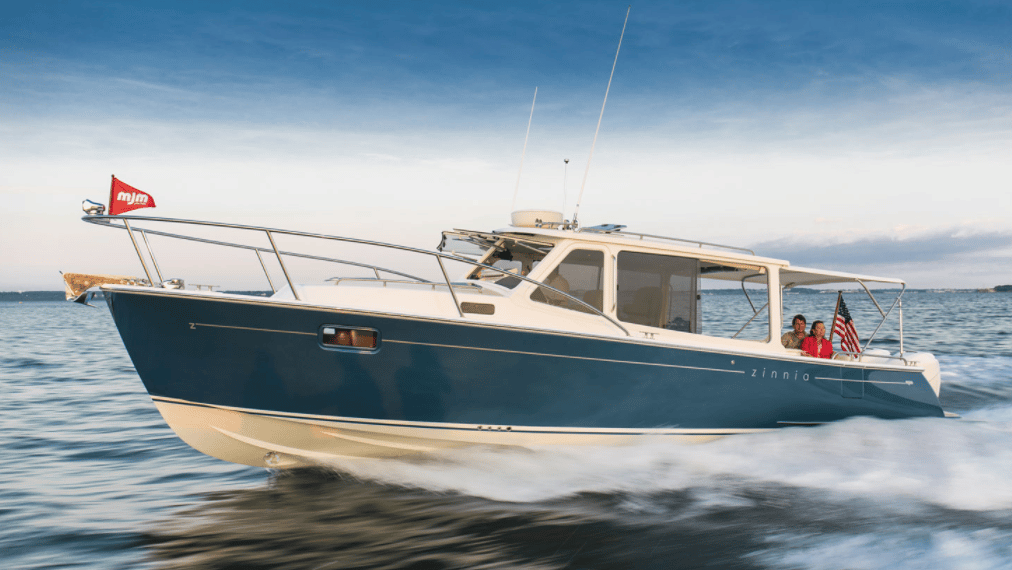
Greenline 39
Greenline Yachts ‘ vessels are aptly named for their environmentally friendly means of moving about; the Greenline 39 is no different. The Slovenian yacht manufacturer produces two types of this model: hybrid and solar.
If owners opt for the latter, the 39’s four solar panels atop the salon power all of the vessel’s systems for three hours. With the power of the sun, the 39 can achieve a max speed of 6.5 knots and a cruising speed of 4 knots. The hybrid type uses those same panels to help power a 220 hp Volvo Penta D3 with a Mahle electric-drive system. Owners have the option of replacing the standard engine with a 370 hp Yanmar 8LV diesel.
Belowdecks, scissor berths provide accommodations for long weekends.
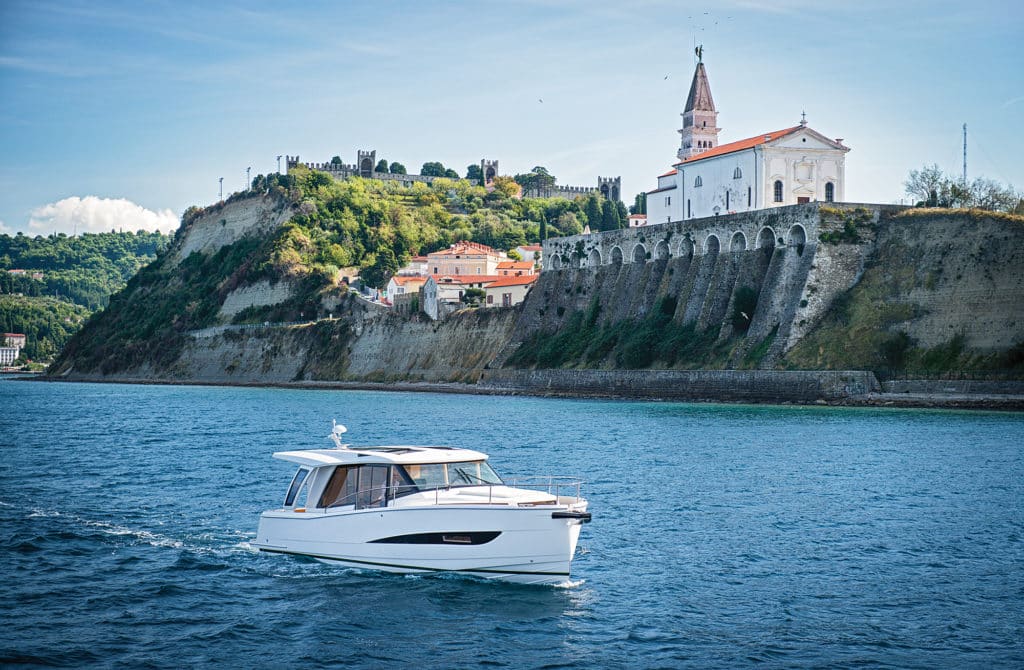
- More: Center Consoles , Express and Flybridge Cruisers , Tenders , Yachts
- More Yachts
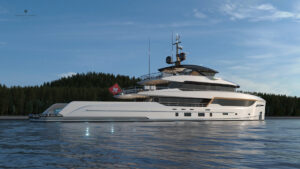
New Flagship for Bering Yachts: The B165
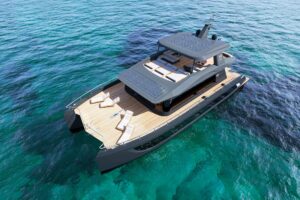
Power Catamaran Popularity Rising
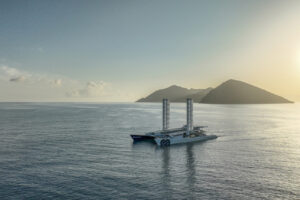
“Energy Observer” Zero-Emission Boat Showcases Sustainability
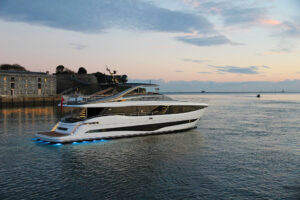
Princess Yachts’ Y95: A Flagship Flybridge
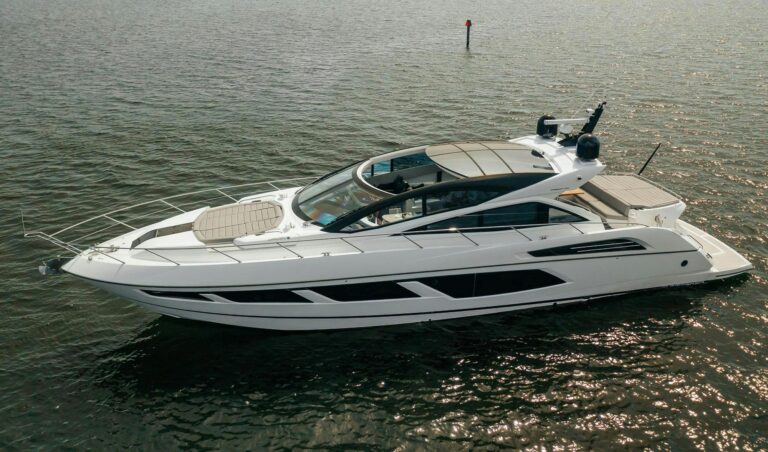
For Sale: Sunseeker Predator 68
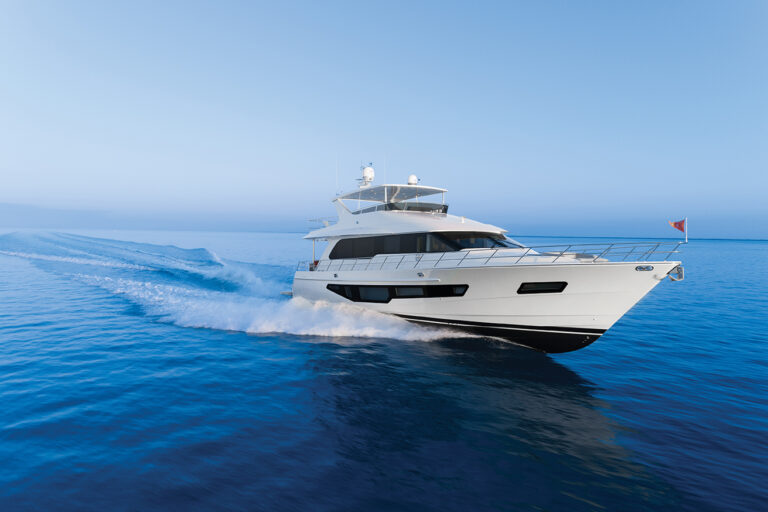
For Sale: CL Yachts CLB 72
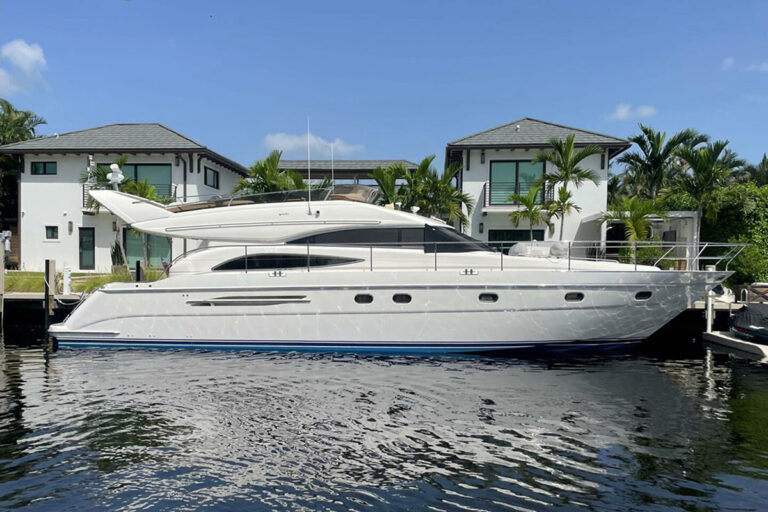
10 Yachts Under $500,000 You Can Have Today
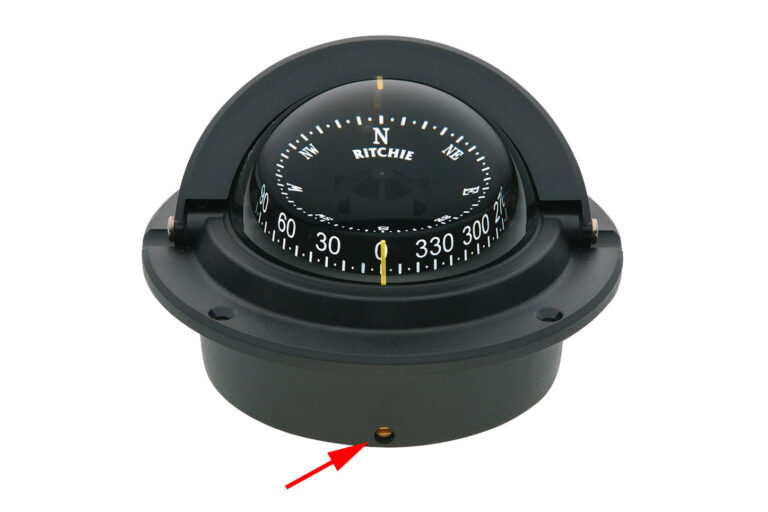
How to Swing a Compass on a Boat

- Digital Edition
- Customer Service
- Privacy Policy
- Email Newsletters
- Cruising World
- Sailing World
- Salt Water Sportsman
- Sport Fishing
- Wakeboarding

- Subscribe Now
- Digital Editions

Best electric outboard motors: 11 top options for zero-emissions propulsion
- Electric boats
- Top stories
Electric outboard motors seem to be springing up all over the place right now. We round up 11 of the best electric outboards on the market…
Electric outboard motors are nothing new, after all the humble electric trolling motor has been around for decades, but in the past couple of years a new breed of more powerful units has emerged.
Capable of powering everything from a tender to a 50-knot sportsboat, this new generation of electric outboard motors will surely play a big role in the growing trend towards all- electric boats .
We’ve rounded up 11 of the best options available on the market right now to help you track down the right one for cutting down your boat’s carbon footprint.
Compact electric outboard motors for your tender

Torqeedo 603 Travel
Weight: 15.5kg Power: 600W / 0.8hp Battery: 500Wh Range: 11nm Price: £1,499
Torqeedo has been making electric outboard motors for quite a while now, and their latest offering slots into the travel range of electric outboards between the 503 (1.5hp) and the 1103C (3hp).
All the usual Torqeedo refinements are present and correct. IP67 rated as totally waterproof, the 603 Travel has a magnetic kill cord and an onboard computer providing instant readouts of operating range at current RPM and battery-charge status displayed on the tiller arm.
You can link it to an Apple or Android app and gain even more information including a map-based range indicator.
Read more about the Torqeedo 603 Travel

Mercury Avator 7.5e
Weight: 27.1kg Power: 750W / 1hp Battery: 1kWh Range: 34nm Price: $1,500
Announced in early 2022 and launched less than a year later, the Mercury Avator 7.5e is the first electric unit from the world’s biggest builder of outboard engines .
The whole top plate hinges up to reveal the battery, which can be quickly removed from your electric boat or replaced for convenient charging.
It’s by no means the lightest electric outboard motor on the market, but its claimed range at 25% throttle is very impressive – we look forward to putting one to the test.
Not resting on its laurels, Mercury launched the Avator 20e and 35e this summer as well. These units are no bigger than the 7.5e, but need wiring in to an on-board battery bank.
Read more about the Mercury Avator 7.5e
Read more about the Mercury Avator 20e and 35e

Weight: 14.5kg (inc. bracket) Power: 1kW / 3hp Battery: 1,085 Wh Range: 14nm Price: £2,185
The idea behind the Remigo One electric outboard makes perfect sense; rather than mounting the battery on top of the shaft, like the engine on an old-school petrol outboard, the Slovenian company has integrated it into the shaft and shaped it like a rudder to minimise drag and maximise steering effect.
It is backed by a 2-year warranty and has a magnetic key/kill cord. There are some other neat ideas too. The rudder casing is waterproof to IP67 above the water and IP69 below the water so it will survive a dunking, and it’s held in place by a clamp mechanism that allows you to adjust the shaft length to suit your boat with the aid of an allen key.
The transom bracket is separate to the motor so you can leave the bracket attached to the boat and simply slot the motor on and off. The tiller also folds and locks parallel to the blade so you can use it as a perfectly balanced carry handle.
Watch our test drive video of the Remigo One electric outboard

The Kicker is exceptionally light and surprisingly powerful
Thrustme Kicker
Weight: 4.4kg Power: 1kW / 3hp Battery: 259kWh Range: 5nm Price: £1,250
If it’s light weight and value that you prioritise over cruising range, then this Norwegian option is hard to beat.
Launched in 2021, the Kicker boasts enough range and grunt to get one person from ship to shore and back again in calm conditions, as editor Hugo proved in a week-long test.
The only downside is that the battery isn’t removable, which can make charging a little more difficult.
Read more about the Thrustme Kicker

Weight: 15kg Power: 1kW / 3hp Battery: 740Wh Range: Up to 1hr Price: €2,850
A brand new option from France, the TEMO-1000 doesn’t look anything like a traditional outboard motor.
The design doesn’t have any rectangular box on top, just a rudder-shaped shaft with an electric motor at the bottom and a long slim battery that simply slides down into it, connecting automatically to your electric boat without having to plug wires into it.
The tiller arm does the same, meaning it disappears completely when not in use and yet it is never detached and therefore never mislaid.
Read more about the TEMO-1000

Haswing Ultima 3
Weight: 16kg Power: 1kW / 3hp Battery: 1.03kWh Range: 18nm Price: £1,570
A top-of-the-range option from trolling motor stalwarts Haswing, the Ultimate 3 is suitable for boats up to 7m long.
The brushless DC motor produces 3hp (claimed to be equivalent to a 4hp petrol outboard motor), and it’s available in short and long shaft versions as well as the standard length.
Not only is the detachable battery unusually light at 5kg (lightest in class, according to the manufacturer), it also connects to the engine in a single simple operation without the need for connecting cables or other fiddly parts – no bad thing when you’re bobbing about in a tender!
Read more about the Haswing Ultima 3

ePropulsion Spirit 1.0 Plus
Weight: 19.3kg Power: 1kW / 3hp Battery: 1,276Wh Range: 22nm Price: £1,600
The original Spirit 1.0 has actually been in production for six years with over 10,000 units built. Featuring a 1,000W brushless motor, this electric outboard motor is claimed to be equivalent to a 3hp petrol engine, ideal for tender duties or small to medium sized dinghies.
This Plus version, launched in 2020, is the same weight, size and power – the big gain is where it’s needed most, run time. It has been achieved by upgrading the battery from 1,018Wh to 1,276Wh.
At the same time, the power cord has been upgraded for durability and reliability, and the voltage has been changed from 40.7V to 48V, making it compatible with an external 48V battery. The battery will even float if dropped overboard!
Read more about the ePropulsion Spirit 1.0 Plus
Most powerful electric outboard motors for day boats

Yamaha Harmo
Weight: 55kg Power: 3.7kW / 9.9hp Battery: Sold separately Range: Depends on battery Price: £TBC
Announced in 2022 and tested on a 12m Venmar water taxi, the Yamaha Harmo electric boat drivetrain may be a rather modestly powered 3.7kW motor, equivalent to a 9.9hp petrol engine, but it is being seen as a major statement of intent from the Japanese brand synonymous with big, powerful four-stroke outboards.
Intriguingly, the Harmo is neither an outboard engine nor a sterndrive but a new propulsion package that borrows ideas from both camps.
It is mounted on the transom just above the waterline much like a sterndrive leg, but in keeping with the outboard engine ethos it’s an entirely self-contained unit that includes the motor and steering mechanism.
Read more about the Yamaha Harmo electric rim drive

RAD Propulsion RAD40
Weight: 100kg Power: 40kW / 55hp Battery: 20-60kWh Range: 100nm Price: £28,000 (ex. battery)
The RAD40 drive from British start-up RAD Propulsion appears to be far more than just a conventional outboard leg with an electric motor bolted on top.
Every single element of it has been designed from the ground up to maximise the benefits of electric power. The result is a brand new drive system that is not only much cleaner, quieter and more efficient than a petrol outboard engine but also smaller, lighter, cheaper to maintain and even more manoeuvrable.
In its current 40kW guise (equivalent to around 55hp) it’s powerful enough to propel everything from a 25-knot planing RIB to a 10-knot displacement craft but with a larger 160hp RAD120 as well as a portable tiller steered RAD2 already in development, it’s clear that RAD Propulsion has its eyes set on a much wider market.
Read more about the RAD Propulsion RAD40 electric outboard

E-Motion 180E
Weight: 580kg Power: 110kW / 180hp Battery: 70kWh Range: 70nm Price: $78,990
Launched in 2021 by Canadian firm Vision Marine Technologies, the E-Motion 180E looks like a genuine alternative to the 150-200hp petrol outboard motors that power the vast majority of 18-25ft sportsboats and RIBs.
The outboard engine itself weighs around 180kg, compared to 216kg for a 200hp V6 Mercury Verado, but that relatively modest saving pales into comparison next to the 400kg weight of the 70kWh battery pack.
Admittedly, a fair chunk of that will be offset by the lack of fuel tank and starter batteries, but unlike a petrol boat, the battery pack’s weight stays constant whether full or close to empty.
Read more about the E-Motion 180E

The Evoy Storm looks, feels and goes like a well-matched petrol outboard engine
Weight: 350kg Power: 222kW / 300hp Battery: 2x 63kWh Range: 25nm Price: €144,700
Although currently still in development, the Evoy Storm is a working prototype that has already been fitted to a number of partner brands’ boats, including an Iguana amphibious craft and an Axopar 25 that we tested at last year’s Cannes Yachting Festival .
Despite a 450kg weight penalty over a fully fuelled petrol boat, and five passengers, we still recorded a top speed of over 50 knots – vastly quicker than any other electric boat we’ve tested and not far off the world speed record for a production electric boat of 57.7 knots (held by a Goldfish X9 powered by a 400hp Evoy inboard).
The anticipated price for this electric Axopar 25 is €185,000 (ex tax), which looks pretty good value given that the price of the motor alone is €74,900 plus another €69,800 for the batteries. Whether Axopar can maintain, or even reduce, that price once the Evoy Storm enters production in 2024 remains to be seen.
Read more about the Evoy Storm
Tip of the iceberg
If this seems like a lot of choice, there are even more options coming down the pipeline in 2024. MBY understands that several major outboard manufacturers are planning on entering the electric outboard market, so watch this space…
If you enjoyed this…
Be first to all the latest boats, gadgets, cruising ideas, buying advice and readers’ adventures with a subscription to Motor Boat & Yachting . Available in both print and digital formats, our monthly magazine will be sent directly to your home or device at a substantial discount to the usual cover price. See our latest offers and save at least 30% off the cover price.
New Fjord F480 first look: 40 knot capable 47 footer
Navan s30 & c30 tour: exceptional new axopar rival, axopar 29 yacht tour: exclusive tour by the man behind it, latest videos, galeon 440 fly sea trial: you won’t believe how much they’ve packed in, parker sorrento yacht tour: 50-knot cruiser with a killer aft cabin, yamarin 80 dc tour: a new direction for the nordic day cruiser.
Best Outboard Motor Brands
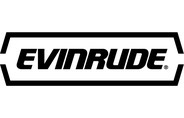
Outboard motors are mounted over the rear of the boat and use submerged propellers to drive it. Use our guide to research the best outboard motor brand for you. These motors are capable of anywhere between 2 and 350 horsepower. The three most popular types are two-stroke engines, four-stroke engines and electric engines.
- Our recommendations are based on what reviewers say.
- 4,409,027 reviews on ConsumerAffairs are verified.
- We require contact information to ensure our reviewers are real.
- We use intelligent software that helps us maintain the integrity of reviews.
- Our moderators read all reviews to verify quality and helpfulness.
What features matter most on an outboard motor?
Environmental impact.
Traditional outboard motors are not very kind to the environment, but fortunately, newer motors are more environmentally friendly, with fewer gas emissions and improved fuel efficiency.
- Two-stroke motors: If you have an older motor, chances are it’s a two-stroke motor. This type of motor delivers a huge variety of pollutants into the water, thanks to the oil and fuel combination that’s required to run them.
- Four-stroke motors: Four-stroke motors were developed as a cleaner alternative to two-stroke motors. These engines do not release oil directly into the water, and they can be up to 90 percent cleaner than two-stroke motors.
- Electric versus gas: Gas motors are increasingly becoming more fuel efficient, but newer electric motors are even more environmentally friendly than their contemporary gas counterparts. An electric motor may be more expensive upfront, but it doesn’t need fuel to operate, and it doesn’t pollute water with emissions or run-off.
New outboard motors all come with warranties, but their terms can vary from brand to brand. Warranty terms can also vary depending on your purpose for buying the motor.
- Commercial warranty: Generally, commercial warranties on outboard motors are shorter than recreational warranties. The industry standard seems to be around one-year limited warranty on motors purchased for commercial, rental or governmental use.
- Recreational warranty: Consumers buying a motor for recreational boating will find a small variation in coverage. Generally, warranties on outboard motors for recreational use range from 2-5 years limited. Make sure you understand everything that is covered by your warranty.
- Transferrable warranty: If you think you may end up selling your boat and/or motor before your warranty has expired, make sure the warranty is transferrable to the next owner.
Service and maintenance
Every outboard motor will need to be serviced somewhat regularly, so it’s important to buy from a brand that can provide service when you need it, where you are.
- DIY maintenance kits: Some outboard motors have DIY maintenance kits available, which can simplify the process of servicing and maintaining your motor. These are a great option for boat owners who understand the ins and outs of the motor and are confident in their abilities to maintain their motors on their own.
- Routine service: It’s a good idea to have your outboard motor tuned up at the beginning of every season to make sure things are working properly. You can usually have this scheduled through a local boat mechanic or through your outboard motor’s company.
- Regular maintenance: Some simple but important routine maintenance can go a long way toward keeping your outboard motor in good shape. Flushing your engine after every outing (whether in fresh or salt water) is key and only takes about 10 to 15 minutes. Make sure to disconnect the fuel line after the engine is flushed, and never use fuel that has been sitting around for months on end.
Horsepower and speed go hand in hand, but not every boat needs a motor with high horsepower. Outboard motors generally range from 2.5 to 350 horsepower. When buying a motor, think about all the additional stuff you will have with you when you’re on the water, such as coolers, extra people and equipment, and err on the side of a higher horsepower.
- Manual boats: Boats like kayaks and canoes don’t even need an engine, and adding an outboard motor with a low horsepower (two to four) can give them just the boost they need without taking the control away from the steerer. These types of boats do not tend to have a lot of people or extra equipment, so they will still move with a low horsepower motor.
- Small fishing boats: Small fishing boats also don’t need to go very fast, but they may be bogged down with coolers and equipment. A good range for these boats is a motor with 10-18 horsepower.
- Small to medium fishing boats: Small to medium fishing boats will want a motor with 20-35 horsepower, as this will allow them to go five to 30 miles per hour.
- Large pontoons and deck boats: These larger boats will want a motor with 90 to 140 horsepower.
- Bass, offshore and cabin boats: These large boats are what motors in the 150 to 300 horsepower range are meant for. Motors with this horsepower will push bass fishing boats up to 60 miles per hour.
Additional features
Some outboard motors come with additional features that can make your boating experience simpler and/or more enjoyable.
- GPS: An outboard motor with built-in GPS technology can be useful, particularly for new boat owners and anyone boating in unfamiliar waters.
- Smart help: Some outboard motors include a convenient QR code on their maintenance label that can easily be scanned by a smartphone to direct users to a website, maintenance videos and/or customer service. This is a useful safety feature.
- Easy starting: Many newer motors feature one-hand starting, which makes it a breeze for even novices to get on the water.
Accessories
You’ll likely need to buy some additional tools and accessories to complement your new outboard motor. These are generally available from the same company that manufactures your outboard motor and can be purchased online or at dealers.
- Charging kits: Any electric motor will need a charging kit to make sure the battery of the motor is charged and ready to set sail whenever you are.
- Propellers: You may need to order a replacement propeller for your outboard motor. Make sure you know which one you need, and buy this from the same manufacturer as your motor.
- Flush kit: A good flush kit will help you flush your motor and keep it in good shape by performing routine regular maintenance.
- Engine cover: Buy an engine cover that specifically fits your engine to keep it safe from the elements when it’s not in use.
What are different types of outboard motors?
Two-stroke engines.
Two-stroke engines were the norm up until a few years ago, so if you have an older boat, your engine is likely two-strokes. These engines require a mixture of oil and fuel to run and emits pollutants, which means they are terrible for the environment.
Four-stroke engines
Four-stroke engines are becoming more commonplace, and most new motors are four-stroke. These gas engines run quieter, burn cleaner and have more fuel efficiency than two-stroke engines.
Electric engines operate using a battery rather than fuel, so they don’t emit pollutants into the water. Make sure to get a charger kit so you don’t risk having a dead battery when you’re ready to rev up your motor and go for a spin.
Who uses outboard motors?
Commercial users.
Companies that run boats commercially, including ferries and water taxis, may need an outboard motor. They should expect their warranty time to be shorter than it would be for recreational users, since the motors are being used more frequently.
Recreational users
Recreational boat owners of all types may want an outboard motor. Talk to a specialist to make sure you are buying a motor with the right capacity and horsepower for your needs.
Used boat owners
Used boat owners may want to revamp their boats by purchasing a new outboard motor. Used boats are more likely to have motors that don’t work and/or that are harmful to the environment, and buying a new motor costs less than buying a brand new boat.
Kayaks and canoes
Kayaks and canoes can have a small outboard motor attached that won’t restrict performance but instead act as a safety device if the rower’s arms become too tired and/or they need to paddle against the current.
Outboard motors FAQ
Choose a two-stroke or four-stroke motor based on your preferences:
- Two-stroke motors are louder, less fuel-efficient and higher-maintenance, but they offer higher performance.
- Four-stroke motors are quieter, more reliable and easier on the gas tank, but they are heavier and slower.
Prices are similar between the two options, depending on the make and model of the motor.
Purchasing a new outboard motor costs a minimum of $3,500, depending on the make, model and dealer. However, the price range is fairly broad, with used, low-horsepower motors available for just a couple hundred dollars and top-of-the-line, high-displacement models costing tens of thousands of dollars.
If you don’t have the cash on hand to buy the outboard motor you want, consider taking out a personal loan to help you pay for it.
Brands like Evinrude, Mercury, Seven Marine and Yamaha have been competing to make the fastest commercial outboard motor for years. However, maximum speed is a function of both your total horsepower and the weight and shape of your boat. Many boats have multiple outboard motors for increased performance.
If you have the need for speed, investing in boat insurance is probably smart.
The average outboard motor runs for 1,500 to 3,000 hours across seven to eight years, depending on conditions and maintenance. To help your outboard motor last longer:
- Flush out the motor after every use.
- Clean and inspect the engine regularly.
- Don’t leave unspent fuel in the carburetor.
- Cover the motor when not in use.
Low-horsepower motors are the lightest option on the market, with 2.5 horsepower models weighing around 30 to 40 pounds.
Outboard motors are fairly simple:
- When you start your outboard motor, the vertical drive shaft begins to spin.
- Once you put the boat in gear, the drive shaft spins the propellers, moving the boat forward or backward.
- As the engine runs, it cycles cooling water through itself and expels it under the propellers along with any exhaust.
The skeg on your motor lets you accurately steer the craft and protects your propeller if you run aground.
Not sure how to choose?
Get buying tips about Outboard Motors delivered to your inbox.
Thanks for subscribing.
You have successfully subscribed to our newsletter! Enjoy reading our tips and recommendations.
Author reviews for outboard motor companies

Mercury Marine has been powering boats for over 75 years. Founded in 1939, the company now has locations around the world. Mercury’s focus has always been innovation, great engineering and speed.

Evinrude, a brand of the company BRP (Bombardier Recreational Products, Inc.), was officially launched in 2003. The company’s history dates back to 1937, when Joseph-Armand Bombardier had his snowmobile patented. Evinrude specializes in outboard motors.

Torqeedo was founded in 2005 and was a pioneer in the electromobility industry. They operate in over 50 countries on five continents and have set many standards for other electric engine companies to follow since their founding. Torqeedo’s motors range from one to 80 horsepower.
- Commitment to sustainability : Torqeedo has been committed to sustainability since their founding, and they are at the forefront of developing clean electric drives in the outboard motor marketplace to protect lakes around the world.
- Clean energy : Their drives do not discharge exhaust into the water, and their lightweight construction means the company conserves resources and protects the environment during production.
- Quiet : Torqeedo’s engines are not completely silent, but they are significantly quieter than comparable combustion motors.
- Integrated computers : All Torqeedo engines come pre-equipped with integrated on-board computers.
- Commercial availability : Torqeedo engines are available for recreational and commercial boats. Interested owners of water taxis or ferries can contact the company directly to find out more about how they can benefit from an electric Torqeedo motor.

Suzuki Marine created their first outboard motor in 1965, and they sell both two- and four-stroke motors. Find complete product brochures on Suzuki Marine’s website.
- Maintenance kits : Suzuki Marine’s maintenance kits give consumers an alternative to buying individual parts for their motor. These kits contain everything you need perform routine maintenance on your motor, and they are available for each engine category.
- Vimeo channel : Keep up with the latest video boat tests on Suzuki Marine’s Vimeo channel. Subscribe to make sure you don’t miss anything.
- Quick quotes : Get a quick quote for your Suzuki Marine outboard motor by filling out an online form. A sales associate will contact you shortly after you submit your form and will help you find the best motor for your boat and budget.
- Keep up with Suzuki’s pro team : Suzuki’s pro bass fishing team is featured on their Facebook page. Like Suzuki Marine’s Facebook page to make sure you don’t miss out on the latest news and updates.
- Accessories : Find all the accessories you need for your boat and motor, straight from Suzuki Marine’s website. Enjoy free shipping on all orders of $49 or more.

Yamaha Outboards has been operating in the US market for over 30 years. Their outboards are known for their reliability and innovation, and consumers can find them online or at dealers nationwide.

Honda introduced the four-stroke outboard engine to the U.S. over 40 years ago. They are innovators in the industry, including innovative technology that improves fuel efficiency and reduces emissions.
Information in this guide is general in nature and is intended for informational purposes only; it is not legal, health, investment or tax advice. ConsumerAffairs.com makes no representation as to the accuracy of the information provided and assumes no liability for any damages or loss arising from its use.
Want your company to be on this guide?
Get the news you need delivered to you.
Sign up to receive our free weekly newsletter. We value your privacy. Unsubscribe easily.
You’re signed up
We’ll start sending you the news you need delivered straight to you. We value your privacy. Unsubscribe easily.
The 5 Best Outboard Motors for Powering Your Aquatic Adventures
From a 3-horsepower electric to Mercury Racing's new 450R, there's a lot happening with outboards.
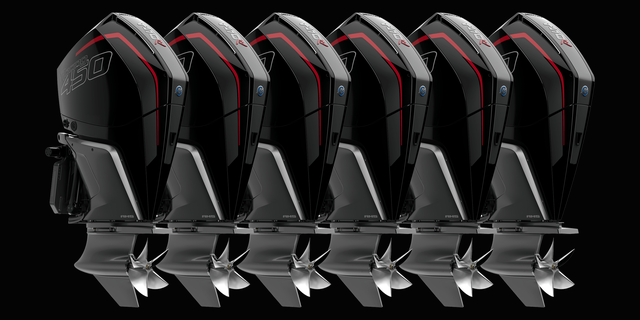
Outboard motors tend to evolve at the pace of the Nile crocodile, which dates to the early Pleistocene and has minimal updates for the 2019 model year. But lately, there's been a lot of action from every major manufacturer—Mercury, Yamaha, Evinrude and Suzuki.
And, particularly for low-horsepower outboards, electric power is becoming not only viable but preferable. If you don't need to do 40 mph or push a 30-footer, a small electric model like the Torqueedo Travel 1103C can make a lot of sense—self-contained, quiet and portable.
Here are five outboards that might well give you a reason to repower your boat with something quiet, clean, and new.
Mercury Racing 450R
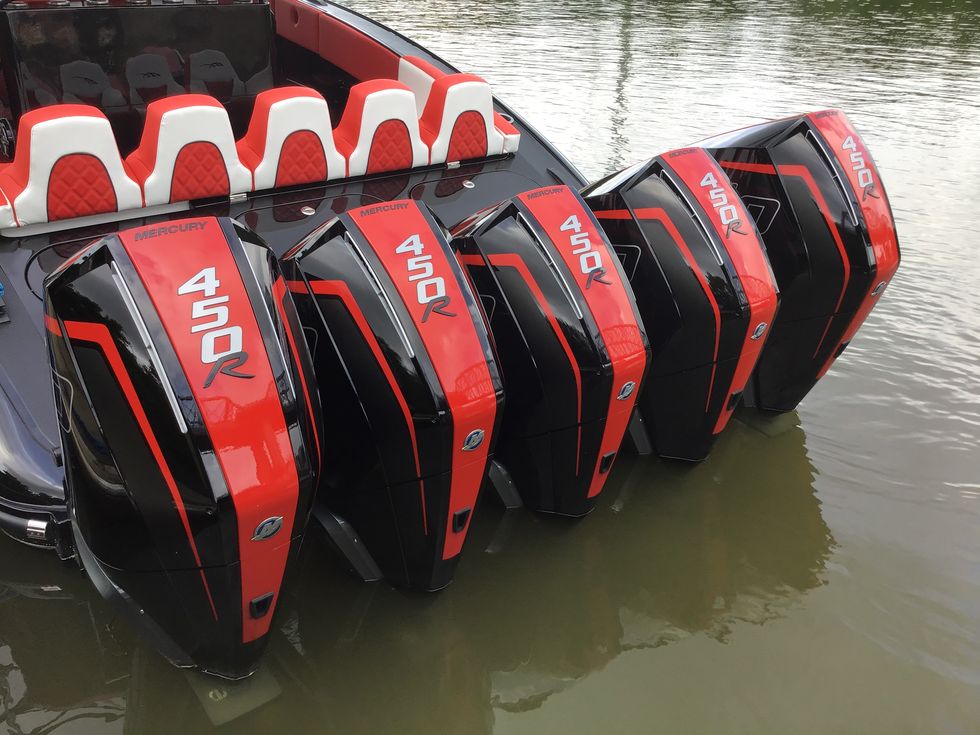
When Mercury introduced its new 4.6-liter V8 Verado last year, we knew it was only a matter of time before they upped the horsepower in a big way. Which they’ve now done with the 450R, which brings a 2.4-liter twin-screw supercharger and an available Sport Master gearcase to the party. The 450R is lightweight—with a 25-inch shaft, the 450R weighs 702 pounds. It’s also available in a 20-inch shaft, which has hilarious high-speed connotations for bass boats.
A three-year warranty indicates that Mercury Racing is confident that the 450R isn’t unduly stressed, despite its top-of-the-food-chain power rating. And that horsepower number is achieved on 89-octane pump gas, so it’s not like you have to trailer your boat over to the local drag strip to fill up on 100-octane race gas. With outboards, total horsepower is limited by what you can physically fit on the back of the boat—if you have a boat with quad 350s and repower with 450Rs, it’s like adding a whole extra engine.
Evinrude E-TEC G2 150
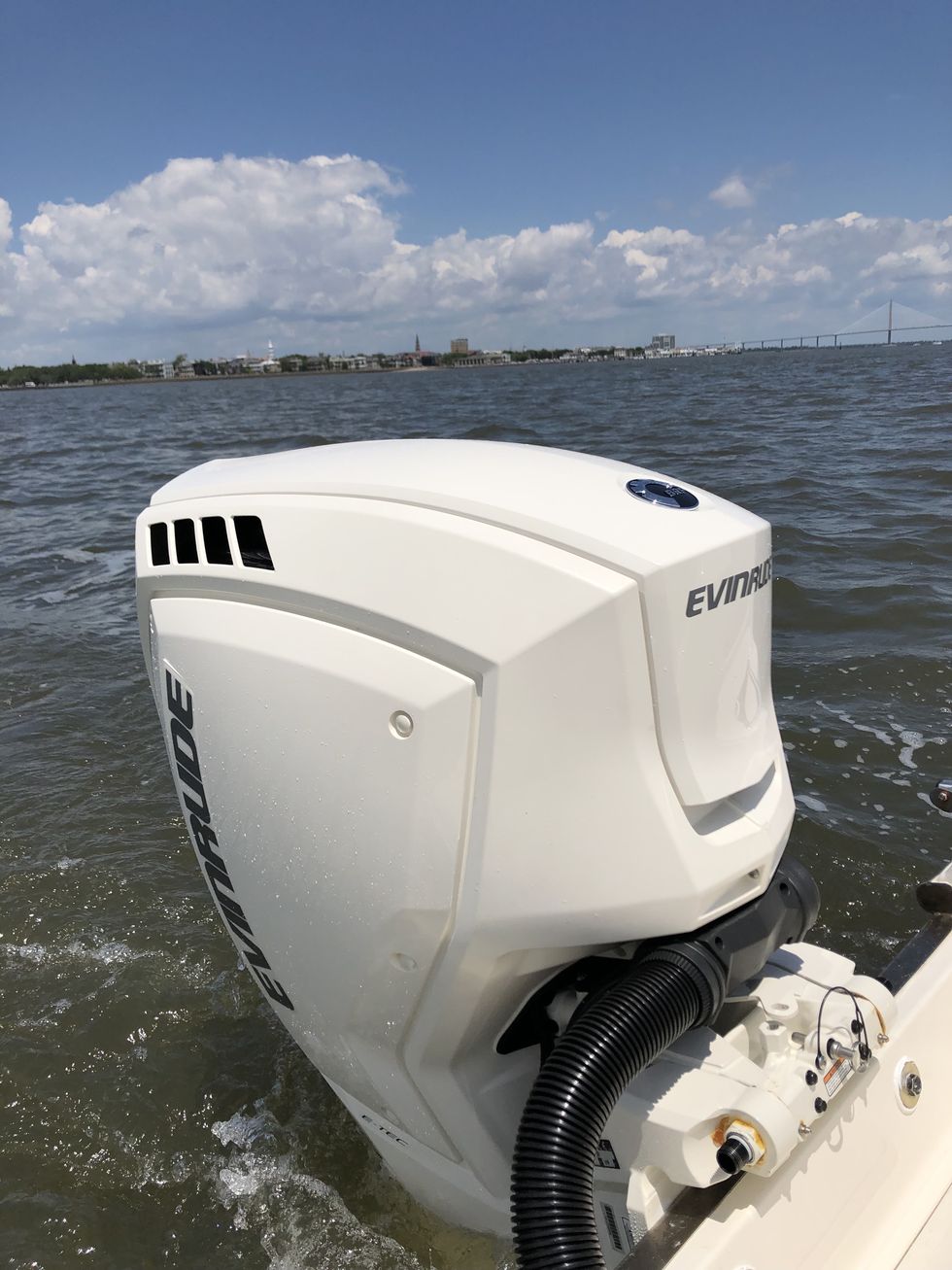
Four-cylinder four-strokes are basically the industry standard in this power category, but Evinrude goes in a decidedly different direction with its new 150 horsepower E-TEC . A 1.9-liter three-cylinder direct-injected two-stroke, the G2 E-TEC foregoes the G1’s V6 architecture (though they still sell that one, too, as well as the V6 G2 150 H.O.) in the name of efficiency. Which it delivers, to the tune of 12 mpg at a fast trolling speed on a 20-foot boat.
A 150 horsepower outboard can be deployed on a wide variety of boats, to the G2 can be controlled via a mechanical steering cable, external hydraulic, integrated power steering and even a tiller. Evinrude estimates that the onboard oil tank under the cowling should be good for 50 to 60 hours of use (a normal boating season for most people) and the maintenance interval is as close to zero-maintence as it gets—every five years or 500 hours.
Torqueedo Travel 1103C
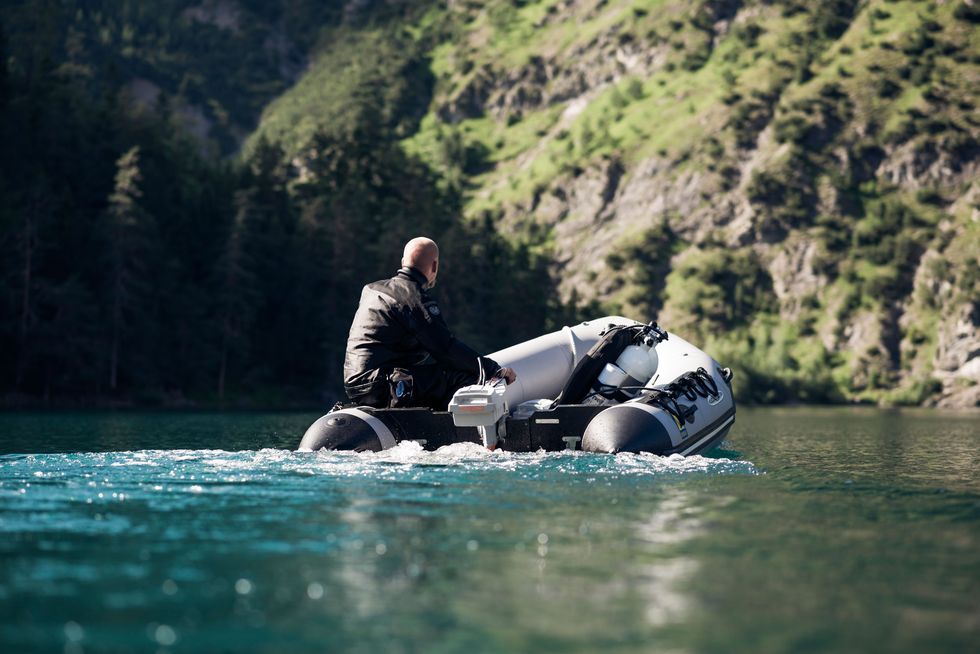
While Torqueedo makes big outboards (up to 80-horsepower equivalent), those Deep Blue motors are aimed strictly at billionaires for their yacht tenders and possibly deep-pocketed folks in the import business who might have a use for a silent Zodiac. So while one of those 80-horse motors and its BMW-developed battery pack will run you more than $50,000, the new Travel 1103C starts at $2,699 and could find a home on any boat that weighs less than about 3,300 pounds.
With an onboard 915 Wh lithium battery, the 1103C can run for six hours at half-throttle, which could mean 18 miles of range (it depends on your boat). Besides dingies and sailboats, the Torqueedo would make an intriguing trolling motor or kicker on a small powerboat—it only makes 33 dB of noise and weighs less than 40 pounds. You can even extend your range by charging it with a solar panel while under way.
Yamaha XTO Offshore

Recent years have seen center consoles stretching beyond 50 feet and battle-wagon express boats moving from diesel power to outboards. So Yamaha built an engine designed for 50-plus foot boats, the 425 horsepower XTO Offshore. A 5.6-liter V8 with direct fuel injection, the XTO is a big fella—with its integrated power steering, it can weigh as much as 999 pounds. But that doesn’t stop some builders from hanging five of them on the stern, a setup that was on display on a Scout at the most recent Miami show.
According to Yamaha’s performance report, quad XTOs will push a 41-foot Regulator center console to 63.7 mph. You could also run a single one of these instead of, say, 200-hp twins—a single XTO on a 25-foot Sportsman topped out at 55 mph and got 2.83 mpg at a 29-mph cruise.
Suzuki DF350A
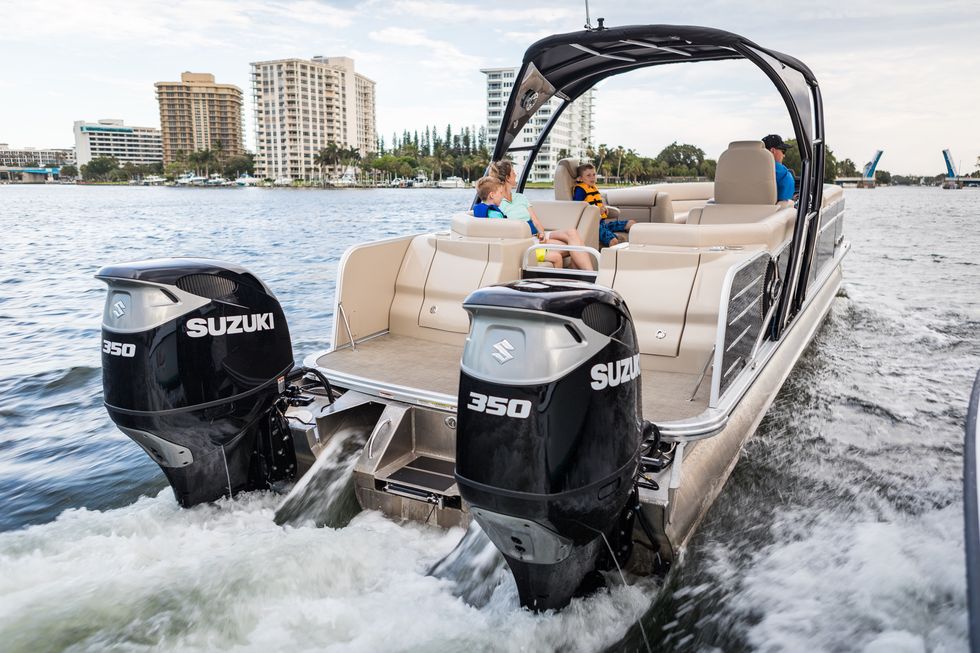
Suzuki is known primarily as a mainstream value brand, but the DF350A shows they’re intent on competing in the high-horsepower game. A big 4.4-liter naturally aspirated V6, the DF350A uses a pair of counter-rotating propellers to increase hookup and negate torque effects. That latter point is extra relevant for single-engine boats, where a DF350A could be an economical choice (both fiscally and in terms of efficiency).
On a Sea Pro 239, the DFA350A pushed the boat to 54.2 mph and got 3.35 mpg at a cruise speed in the high 20s. Quad 350s pushed an aluminum Gaudet 38 to 65.8 mph. Per Suzuki MO, the DF350A offers a lot of horsepower for the money. While MSRP is $31,565, we’ve seen new DF350As advertised for about $24,000.
Ezra Dyer is a Car and Driver senior editor and columnist. He's now based in North Carolina but still remembers how to turn right. He owns a 2009 GEM e4 and once drove 206 mph. Those facts are mutually exclusive.

.css-cuqpxl:before{padding-right:0.3125rem;content:'//';display:inline;} Outdoors .css-xtujxj:before{padding-left:0.3125rem;content:'//';display:inline;}
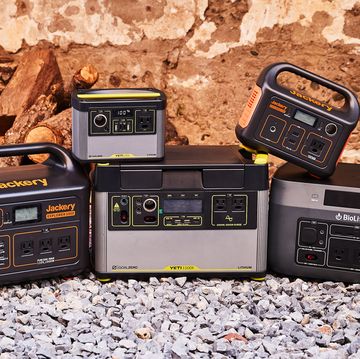
The 7 Best Camping Lanterns to Light Up the Night
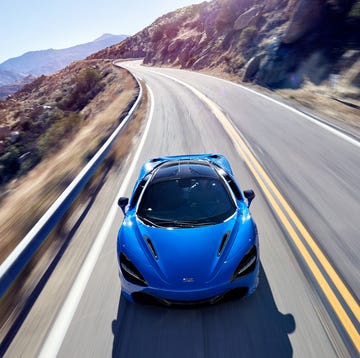
15 Countries Worth Visiting for an Epic Drive

These Insulated Yeti Products are On Sale

The Best Emergency Kits for Help in Any Situation
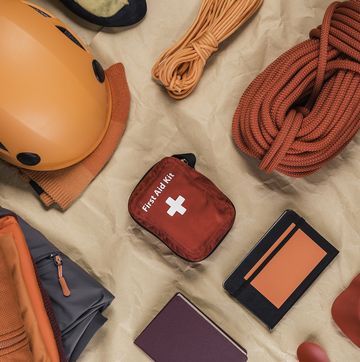
The 8 Best First Aid Kits for Emergencies
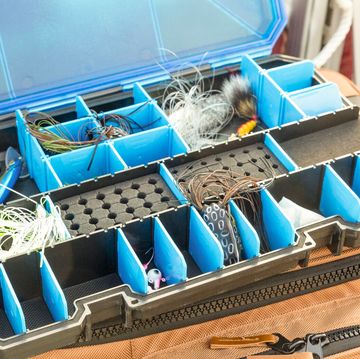
10 Best Tackle Boxes and Bags
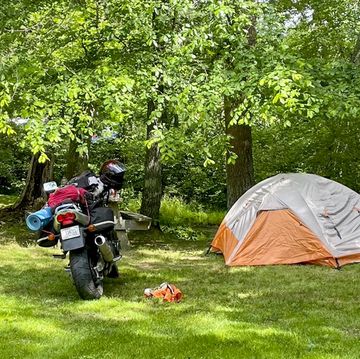
Best Motorcycle Camping Gear

The New Jackery Explorer 2000 Plus Is 22% Off
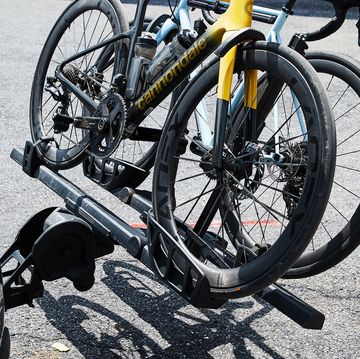
10 Best Bike Racks for Your Car or Truck

Wakesurfing 101: A Beginner’s Guide

- 2024 BOAT BUYERS GUIDE
- Email Newsletters
- Boat of the Year
- 2024 Freshwater Boat and Gear Buyers Guide
- 2024 Boat Buyers Guide
- 2024 Water Sports Boat Buyers Guide
- 2023 Pontoon Boat Buyers Guide
- Cruising Boats
- Pontoon Boats
- Fishing Boats
- Personal Watercraft
- Water Sports
- Boat Walkthroughs
- What To Look For
- Best Marine Electronics & Technology
- Watersports Favorites Spring 2022
- Boating Lab
- Boating Safety

2022 Cruisers 42GLS Outboard
- By Capt. Chris Caswell
- February 26, 2022
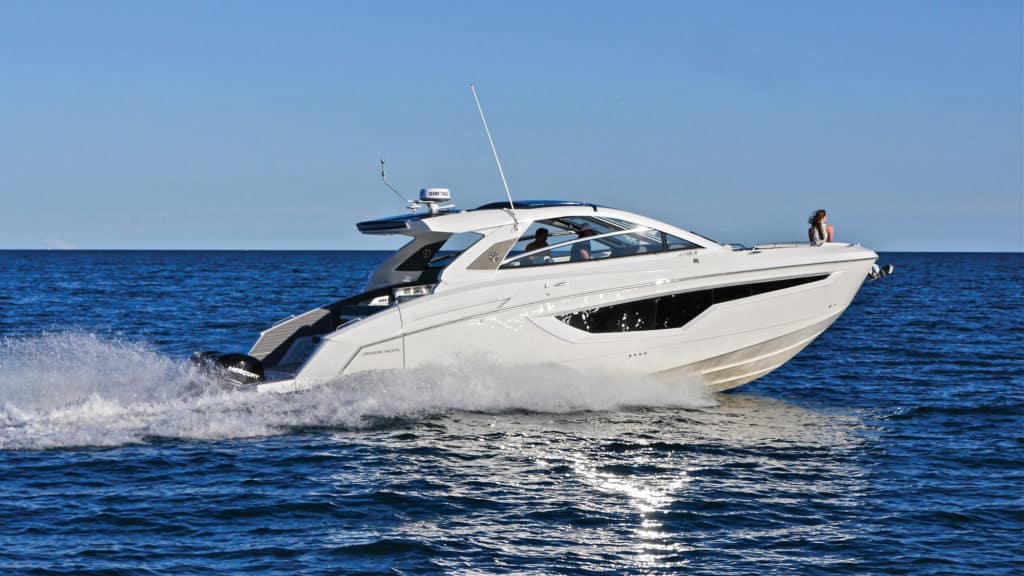
Some builders enter the outboard market timidly, with one toe in the water at a time. Cruisers, however, jumped into the deep end with a full cannonball, first with its 38GLS and now with the triple-engine 42GLS. If you don’t fall in love with this fun boat at first glance, well, check your pulse.
For starters, Cruisers decided that if one foldout beach on the 38 was good, then two on the 42 would be more than twice as good. And the builder is right. Having hullsides that morph into extended deck areas doesn’t just recapture space lost to outboards on the transom platform, but it also creates an entirely new fun area to explore. Suddenly, you don’t just have a boat with 13-foot beam, but one with nearly 19 feet of deck for entertaining and playing in the water.
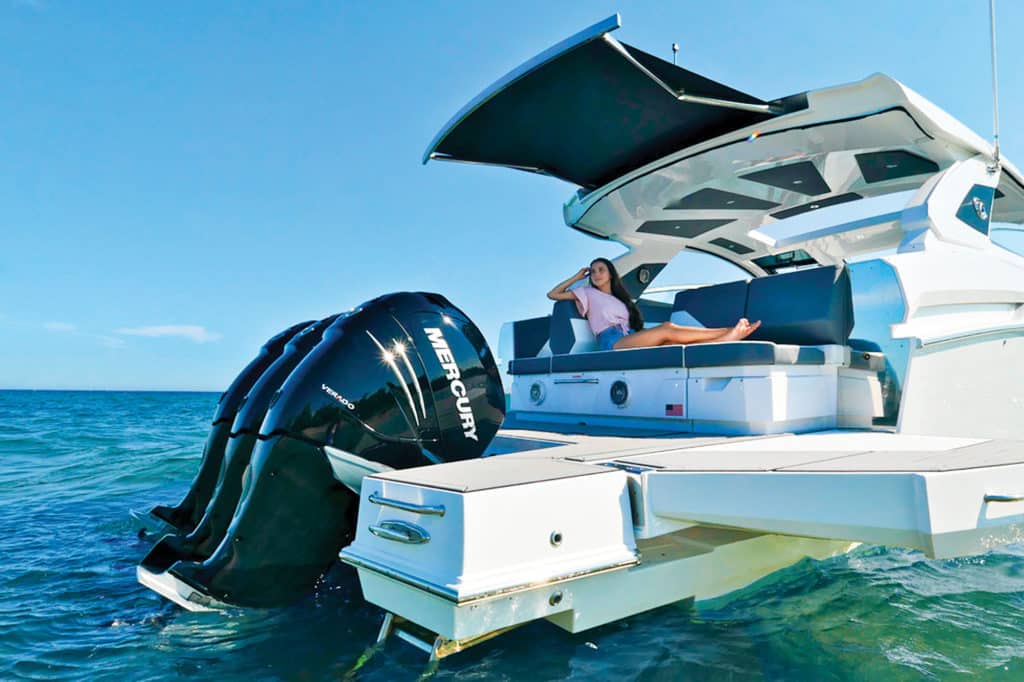
Aside from the 4 feet in length and two beaches, why opt for the 42? There’s a lot of reasons. The 42GLS is a true express cruiser with a full hardtop running far enough aft from the windshield to give sun protection to the wraparound dinette, and it has a big electric sunroof (standard) for when you want some breeze. The 38GLS had a T-top but is really a big bowrider, while the 42GLS has not only the hardtop but also a full glass enclosure on the sides, an express-cruiser feature we appreciated in a lumpy inlet leading to the Gulf Stream.
Interior and Accessories
That 4 feet also translates into a civilized cabin (6 feet, 7 inches of headroom) that would encourage overnighting, with a full queen berth tucked in a private playpen aft, a dinette that converts to a tapered queen for kids (or in-laws), and a mini galley with a fridge and microwave to heat the coffee when you don’t want to tiptoe out to the cockpit galley in your jammies.
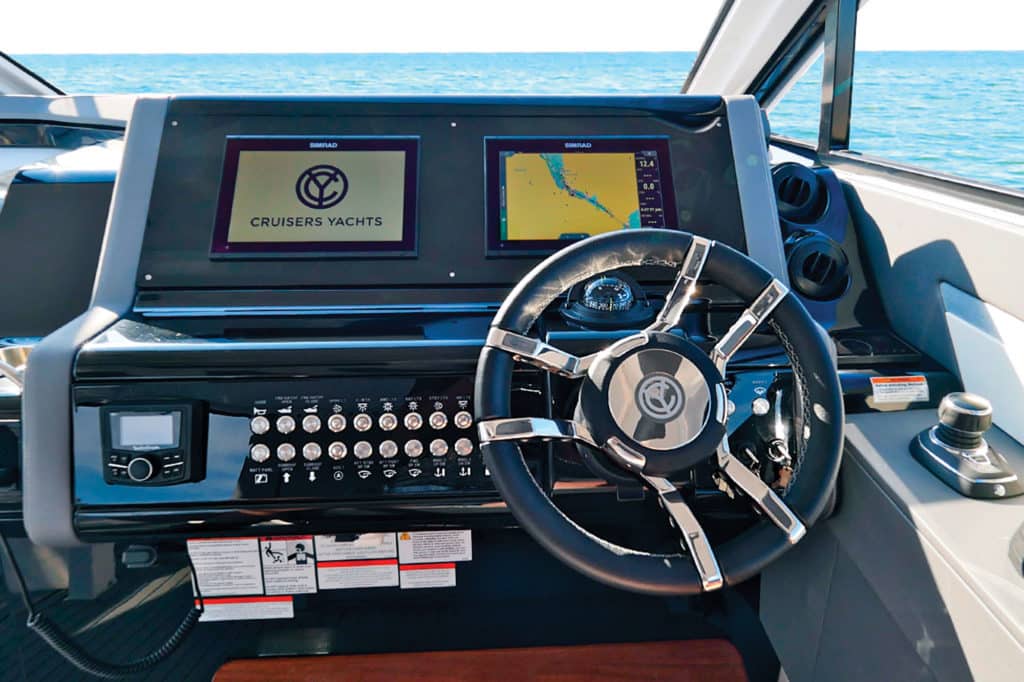
There’s a rinse-off shower on the transom, but the big enclosed head in the cabin has a stand-up shower to get you squeaky clean, plus a vanity with toiletry stowage.
The cockpit galley is impressive, with the available Kenyon grill, and even a TV (think alfresco movie nights) that moves from the salon to the cockpit. Stools turn the raised galley counter into a bar, and I settled in there quite comfortably for our outing.
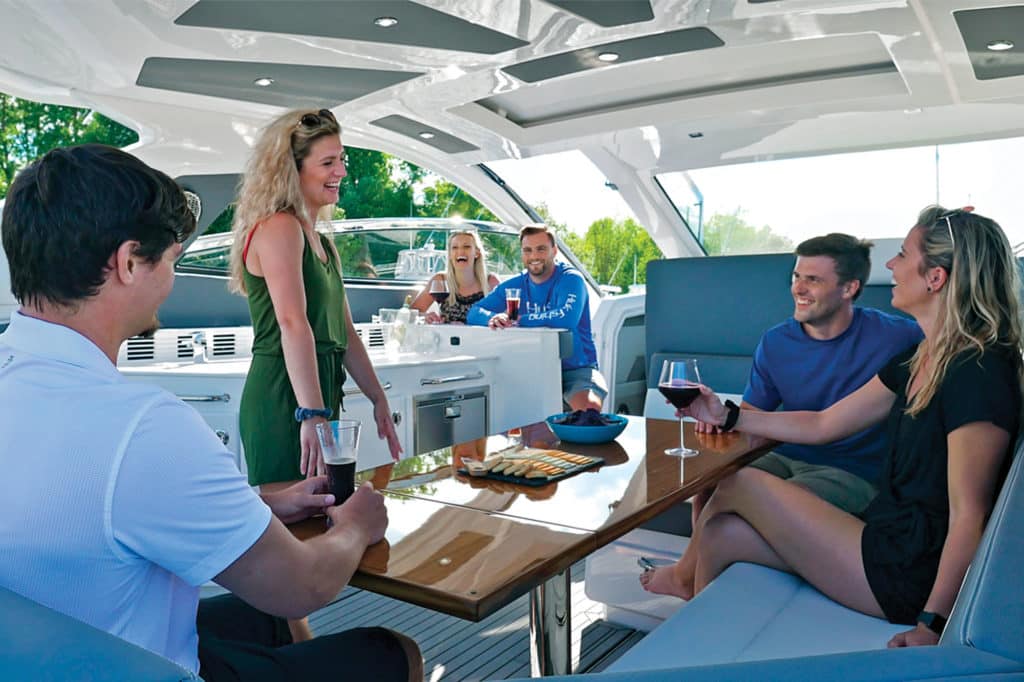
The skipper has the best seat in the house: a bolstered double-wide helm chair overlooking an impeccably arranged dash with twin Simrad monitors and clearly labeled buttons for systems. The joystick for the triple outboards is exactly where I wanted it, just in front of the throttle and shifters. The skipper gets air-conditioning vents, and with the addition of a zippered back door to the cockpit, this entertaining area can be cooled or heated for all-season comfort just like the cabin.
Safe access to the bow is through a clever windshield door that flips away. There’s also a recessed gate for spray or breeze protection, and parents will delight in the high coamings forward for kid security.
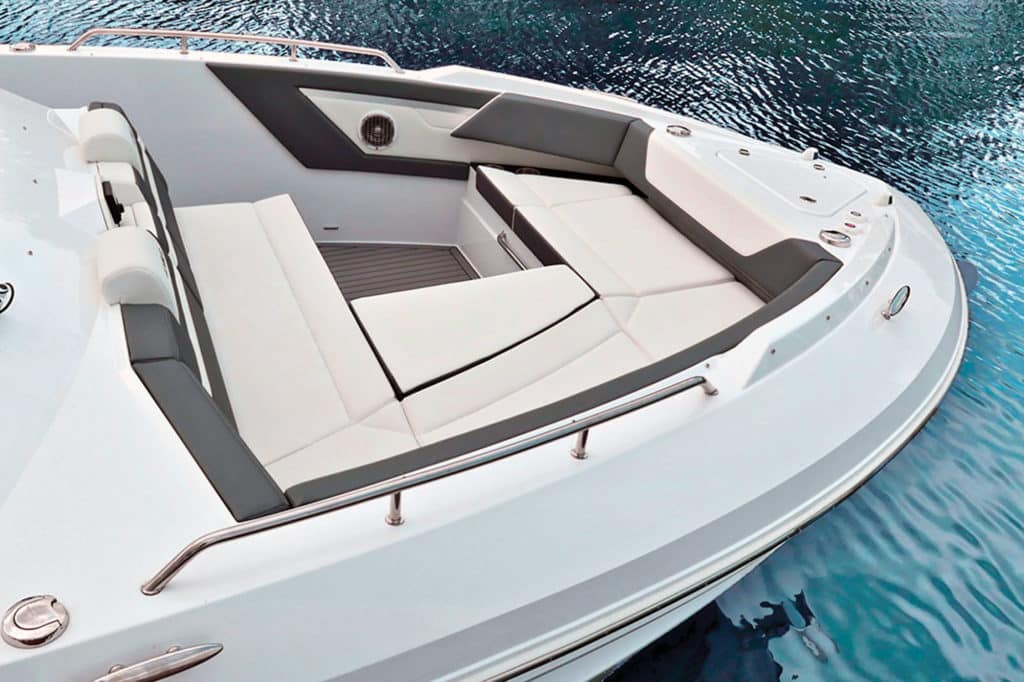
There’s nothing unusual about the wraparound seating in the bow until you lift a cushion, where you’ll find nicely finished storage bins. In fact, Cruisers has gone to lengths to make every possible dead space into a stowage nook, cranny or locker. The bow seating has a table that converts to a sun pad, multiple cup holders (even in the fold-down armrest), and an optional sunshade. A Genius anchor windlass is hidden out of sight under a foredeck hatch, with controls by foot buttons or at the helm.
This hull is a development of the well-proven 38GLS, and we had a chance to give the 42GLS a serious test in some square-edged Atlantic seas. On a couple of waves, we got to play astronaut—you know, we went weightless. But the hull, with its 21-degree transom deadrise, brought us down softly.
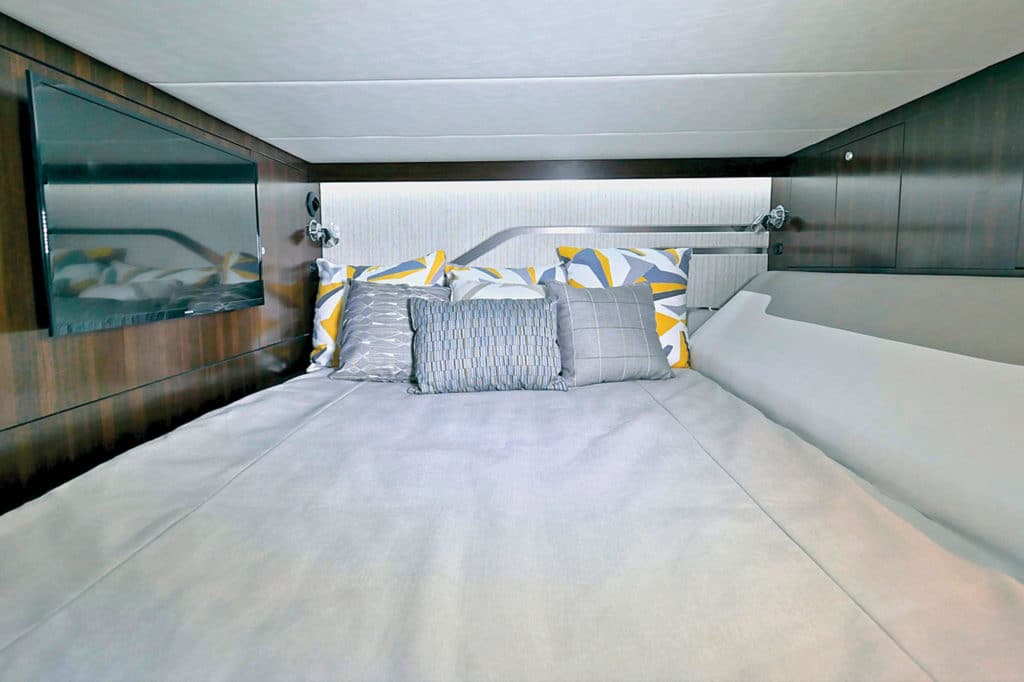
Cruisers does an excellent job with construction, using a mix of infused resin and hand-laid glass (but no wood) to create a tough hull and superstructure. I was impressed that the builder makes all its own wiring harnesses in-house, with every wire labeled for future tracing, and it does its own woodwork and upholstery to a luxurious level. The weld work on stanchions and rails is polished and jewellike.
I also liked the outstanding access to the various underdeck systems, with filters, batteries and seacocks in well-finished bilges and compartments. Our test boat had the optional 5.5 kW diesel genset to keep the margaritas flowing and the air conditioner blowing, and it was readily accessible along with its separate 20-gallon fuel tank. A Seakeeper gyrostabilizer is an option, and Cruisers has allotted ample room for it in the machinery area aft.
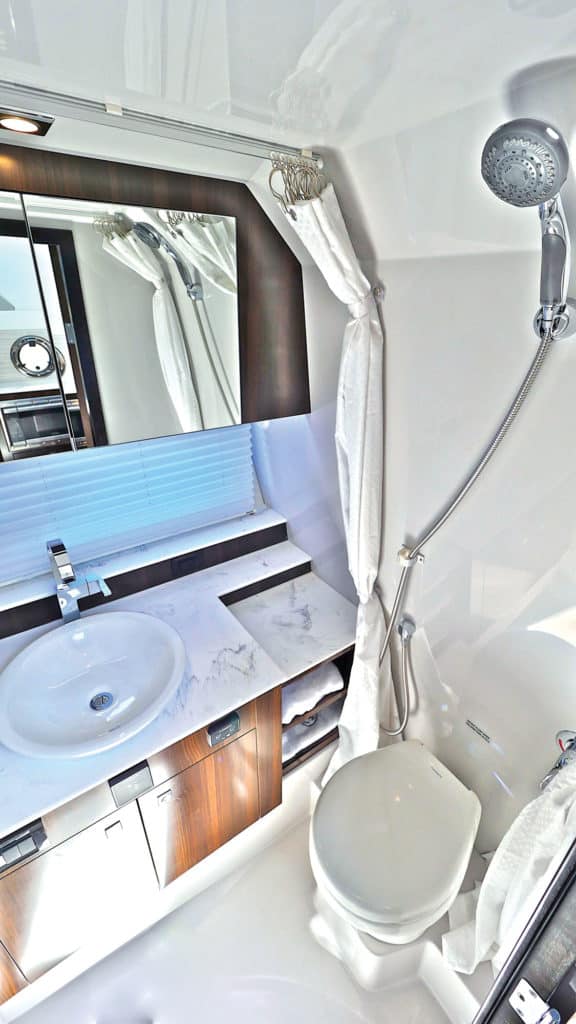
Shopping around? Check out the Sea Ray 400 SLX ($718,078), which is a bit shorter, and comes with a T-top and no beaches.
So, what’ll the 42 do? Our test boat had a trio of 400 hp Mercury Verados, giving us a solid 52 mph in the smooth spots. You can opt for 350 or 450 hp Verados, but I thought this triple outboard package was perfect.
I loved the 42GLS for its flexibility, fun, performance, and solid design and construction. Small enough and fast enough for water toys, elegant enough for cocktail cruises, and comfortable enough that overnighting will be a plan, not an afterthought. What’s not to like with this cannonball into the deep end?
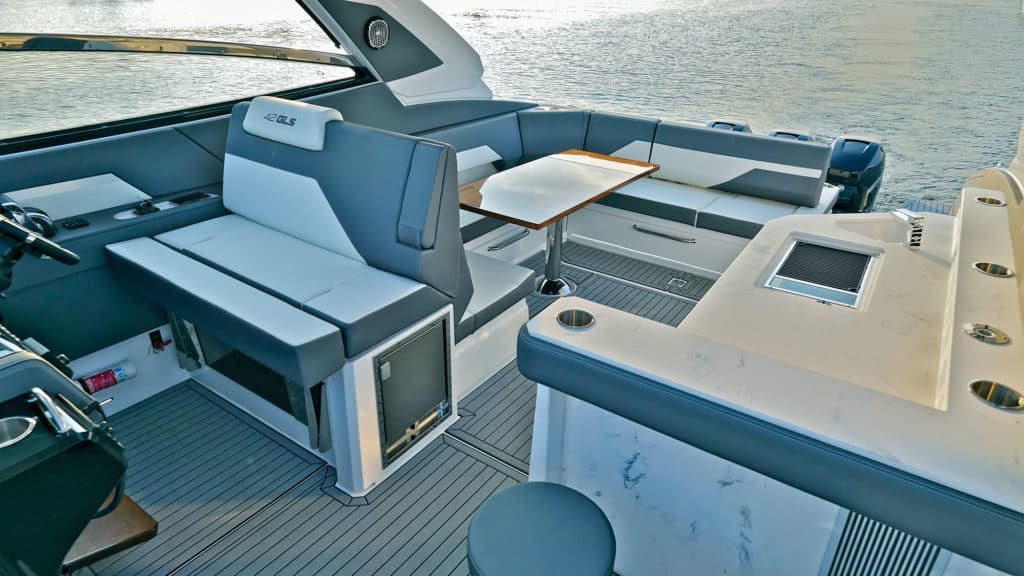
How We Tested
- Engine: Triple 400 hp Mercury Verado
- Drive/Prop: Outboard/14.5″ x 15″ Merc 4-blade XP
- Gear Ratio: 1.75:1 Fuel Load: 350 gal. Water On Board: 0 gal. Crew Weight: 600 lb.
High Points
- No-wood construction uses fiberglass infusion and hand layup for strength and durability.
- Deep gutters on deck hatches prevent water intrusion.
- Oversize and sturdy hinges on all lockers and hatches.
- Not enough handrails or sissy bars.
- Bar stools might not be a suitable substitute for a companion seat.

Pricing and Specs
Speed, operation, efficiency.
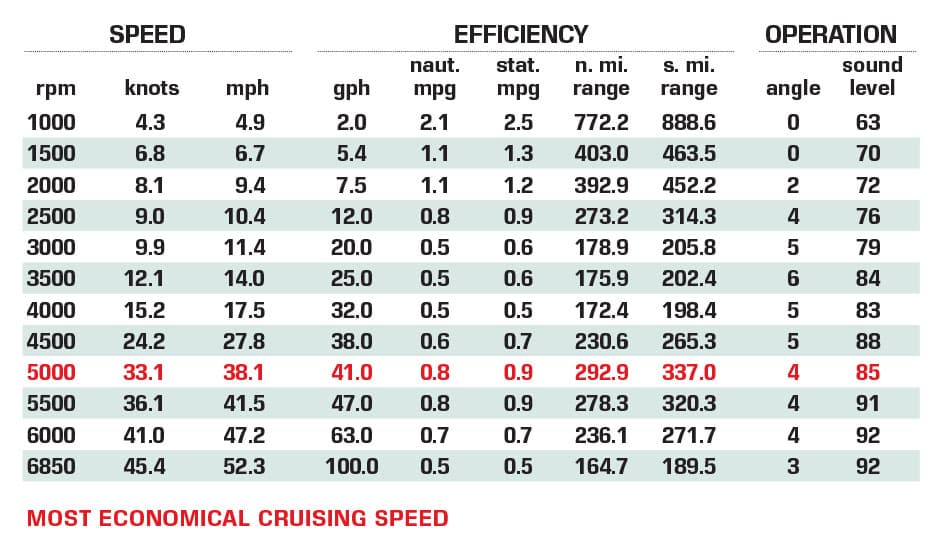
Cruisers Yachts – Oconto, Wisconsin; 800-743-3478; cruisersyachts.com
- More: 2022 , 40-50ft , boat tests , Boats , Cruisers Yachts , March 2022 , outboards , Runabouts
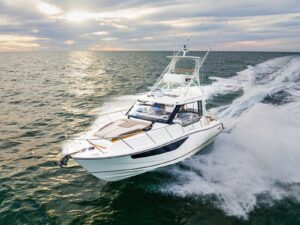
Boating On Board: Boston Whaler 365 Conquest
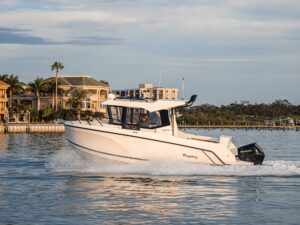
Boat Test: 2024 Bayliner Trophy T23 Pilothouse
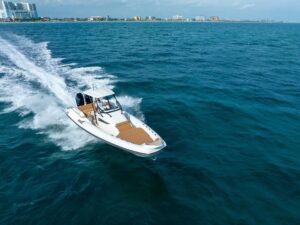
Boat Test: 2024 Nuova Jolly Prince 33 CC
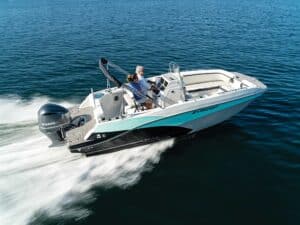
Boat Test: 2024 Starcraft SVX 231 OB CC
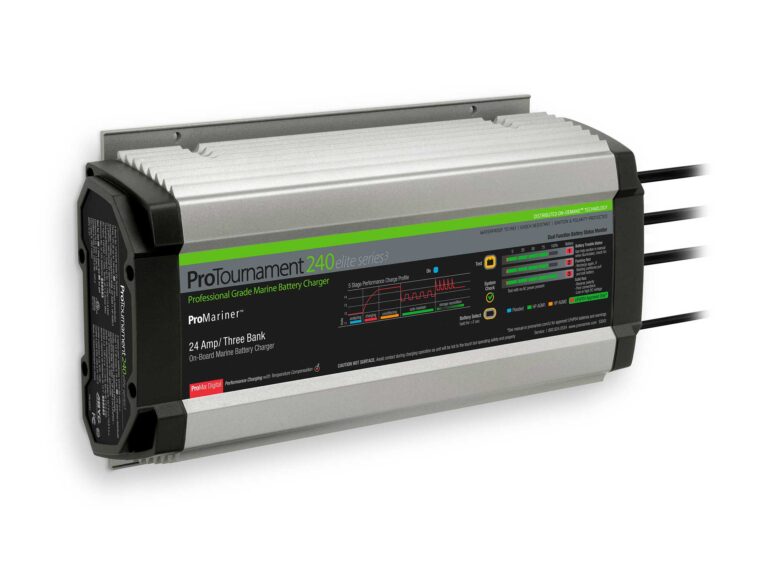
ProTournament Elite Gen 3 Chargers
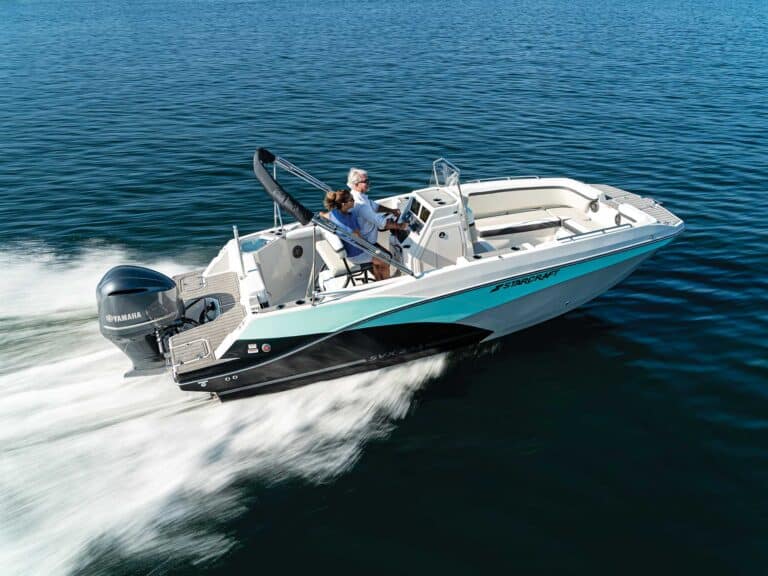
Boat Test: 2024 Bass Cat Caracal STS

I Learned About Boating From This: Capsize, Rescue and Lessons Learned

- Digital Edition
- Customer Service
- Privacy Policy
- Cruising World
- Sailing World
- Salt Water Sportsman
- Sport Fishing
- Wakeboarding
Many products featured on this site were editorially chosen. Boating may receive financial compensation for products purchased through this site.
Copyright © 2024 Boating Firecrown . All rights reserved. Reproduction in whole or in part without permission is prohibited.
- Pontoon Boats
- Personal Watercraft
- nauticalknowhow
- Nautical Knots
- Tools and Calculators
Best Outboard Motors in 2024
It’s no secret that outboard motors are evolving at the pace of the Nile crocodile , not only dating back to the early Pleistocene but also minimal updates for the 2019 model year. However, lately, there’s been immense action from nearly all major manufacturers, ranging from Suzuki, Mercury, and Evinrude, to Yamaha.
With a multitude of customers taking reliability for granted and warranties at times stretching up to 6 years depending on promotions, the new engines are pushing progress on two fronts: efficiency and horsepower . With outboards powering an increasing number of large boats, new options are cropping up for buyers on the quest for 350 horsepower and above.
Moreover, with the fuel economy and range constantly being an issue, it’s no surprise that new designs are aiming to hit their torque and horsepower numbers while squeezing every ounce of fuel as far as it’ll go.
When it comes to low-horsepower outboards, in particular, electric power is not only becoming the go-to option but also viable. Therefore, if you don’t need to push a 30-footer or cover 40mph, small electric models will get the job done. They are portable, self-contained, and quiet, rolled into one.
Keeping that in mind, we’ll explore the best outboard motor options that will give you a reason to repower your boat with something new, quiet, and clean. Read on!
Mercury Racing 450R
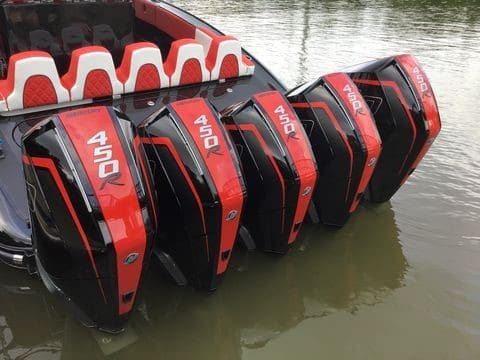
After Mercury launched its new V8 4.6-liter Verado, it was only a matter of time before they stepped up the horsepower by a few notches. They did so with the 450R that ushers in a 2.4-liter double-screw supercharger coupled with a Sport Master Gearcase that is readily available.
You’ll be impressed by how light the Mercury Racing 450R is, weighing 702lbs. Furthermore, it comes in a shaft that is 20 inches long and has remarkably top-speed connotations for bass boats.
Backed by a 3-year warranty, you can rest easy knowing that the Mercury Racing 450R is not unduly stressed, regardless of its amazing power rating. Additionally, the high horsepower rating is courtesy of the 89-octane gas pump.
Therefore, this saves you the hassle of trailing your bowrider over to the nearest drag strip to fill up on 100-octane racing gas. For outboards, the total horsepower is restricted by what you can physically fit at the back of your boat. For instance, if your boat has a quad that ranks in the 350s, repowering it with the Mercury Racing 450R is closely similar to adding an entire engine.
Mercury Racing →
G2 Evinrude 150 E-TEC
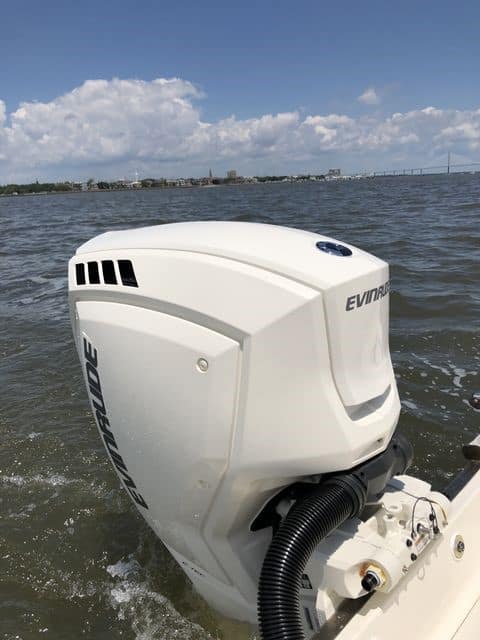
Although there’s no denying that 4-cylinder and 4-strokes have become the industry standard in the power category, Evinrude takes an entirely different route with the G2 150 E-TEC.
With a 3-cylinder, 1.9-liter directly-injected 2-stroke, the G2 Evinrude 150 E-TEC forgoes the V6 G1’s architecture for improved efficiency. As a result, you can delight in a 12mpg at a faster-trolling speed on a boat that is 20-feet long.
The best outboard motor with a horsepower of 150 can be deployed on a broad range of boats. The G2 is regulated by an external hydraulic, tiller, mechanical steering cable, and integrated power steering.
According to Evinrude, the onboard oil tank below the cowling should get the job done with utmost efficiency for up to 60 hours, which is the duration of a regular boating session. Moreover, the maintenance interval for G2 150 E-TEC is about 500 hours or five years.
Evinrude →
Torqueedo Travel 1103 CS
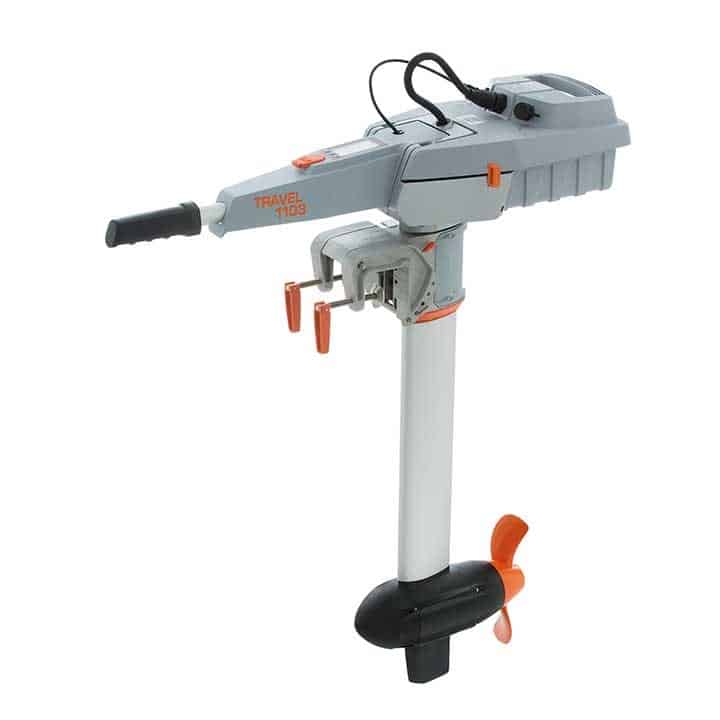
While this brand churns out large outboards with the equivalent of 80 horsepower, it’s no secret that a Deep Blue motor solely targets the affluent folks for their yacht tenders and deep-pocketed people in the import industry that may require a silent Zodiac.
Although one of these motors with an 80 horsepower coupled with their BMW-developed battery packs will set you back over tens of thousands of dollars, the Torqueedo Travel 1103 CS will help you cut down on costs. Starting at about $2700, it’s the best outboard motor that weighs under 3300lbs and cab find a home on any boat.
Powered by a 915WH lithium battery, this unit can comfortably operate for up to 6 hours at half-throttle, which indicates a range of 18 miles, depending on your boat. Aside from sailboats and dingies, the 1103 CS makes an amazing kicker or trolling motor on a compact powerboat.
After all, it weighs below 40lbs and makes 33dB of noise. Additionally, you’ll be impressed to discover that you can prolong your range with solar power charging while underway.
Torqeedo →
Yamaha Offshore XTO
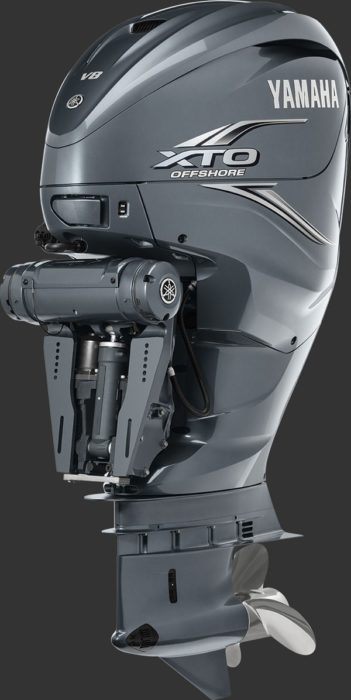
In recent years, center consoles have stretched past 50 feet with battle-wagon express boats progressing from diesel-powered to outboards. Therefore, it’s no surprise that Yamaha constructed an engine geared for boats that are more than 50 feet long.
An example is the Offshore XTO, with a whopping horsepower of 425. As a V8 with a capacity of 5.6 liters, this unit is truly a beast with its integrated power steering and can weigh up to 999lbs.
Nonetheless, this doesn’t deter builders from hanging up to 5 of them on the stern, as displayed on a Scout at the latest Miami show.
Yamaha’s performance report states that the quad Offshore XTOs will stretch a 41-feet Regulator center consoles to 63.7mph. Additionally, you have free rein to run a 200 horsepower twin on one 25-foot XTO Sportsman at up to 55mph and 2.83mpg on a cruise of 29mph.
Yamaha →
Suzuki DF350A
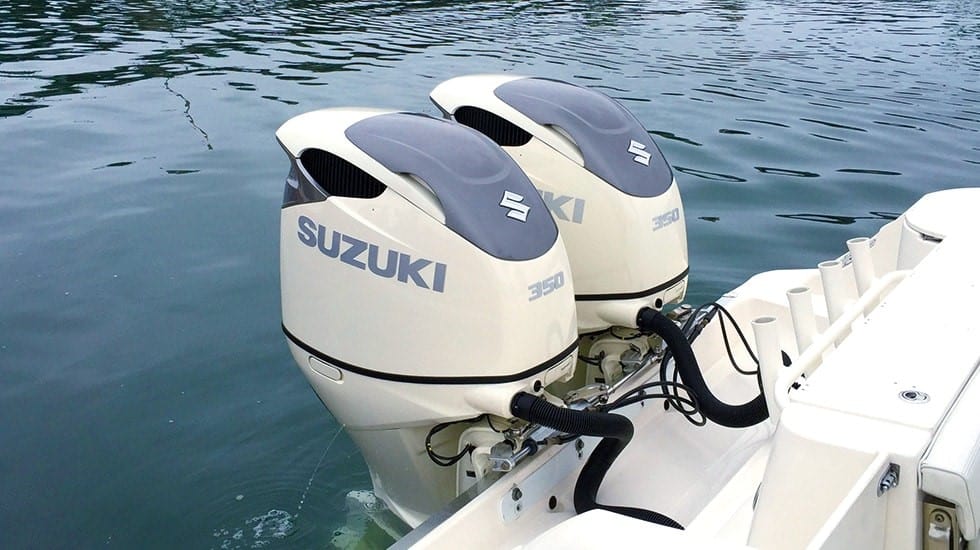
Although Suzuki is solely known as a mainstream value brand, models such as the DF350A prove their intent on competing in the top range horsepower (hp) game.
As a large 4.4-liter V6 that is aspirated naturally, the Suzuki DF350A utilizes double counter-rotating propellers to elevate hookup while negating the impact of torque. The latter point is more applicable to one-engine boats, where this outboard motor is an economical option in terms of fiscally and efficiency.
For instance, on a Sea Pro 239, this outboard motor pushed it to 54.2mph and achieved 3.35mpg at cruise speeds that fall in the 20s bracket.
Suzuki →
Buyer’s Guide: How to Choose the Best Outboard Motor
Selecting the ideal outboard motor for your boat revolves around determining the intended purpose behind your purchase. Therefore, we’ve rounded up a few considerations to keep in mind when taking your pick from the wealth of options.
Two-Stroke or Four-Stroke
For casual anglers or anyone learning how to fish , a two-stroke motor will get the job done. Not only is it more affordable but also easier and cheaper to repair. Contrarily, the four-stroke counterparts deliver impressive fuel efficiency and are an ideal alternative for boaters that need a powerful motor capable of covering longer distances.
It’s worth noting that the better-skilled manufacturing coupled with the availability of better quality materials have successfully eradicated the old size along with noise variations between four-stroke and two-stroke engines.
Horsepower (HP)
Engines ranging from 50hp to 300hp can excellently power the best outboard motor. The key to choosing the most ideal option for you is factoring in the type of horsepower that perfectly fulfills your desires. An incredible way to do so is by computing your boat’s expected total weight, which includes accessories, gear, passengers, and fuel. It’s only after doing this that you’ll gain clarity on your desired cruise speed and the distance you plan to cover on a regular day. You can then determine the ideal horsepower range for you.
The size of your boat is an essential aspect to consider when choosing an outboard motor. Putting a motor that’s too small on a big boat can cause the engine to wear out prematurely or usher in issues with safety and your boat’s plane. Contrarily, putting a large motor on a small boat can cause overheating issues and burnt spark plugs.
Shaft Length
Given that small boats feature small transoms, you’ll need a short shaft length. Although some small boats come with bigger transoms, they require outboard motors with long shafts. Nonetheless, most small boats won’t call for this.
To determine the ideal shaft length for your boat, measure the height of your boat’s back-end from bottom to top and right at the center of the stern. Your shaft length should tally with this measurement. If you’re one or two inches off, there’s nothing to worry about.
However, if you’re five or more inches off, then there’s a problem, so match your transom height as closely as possible to the motor shaft.
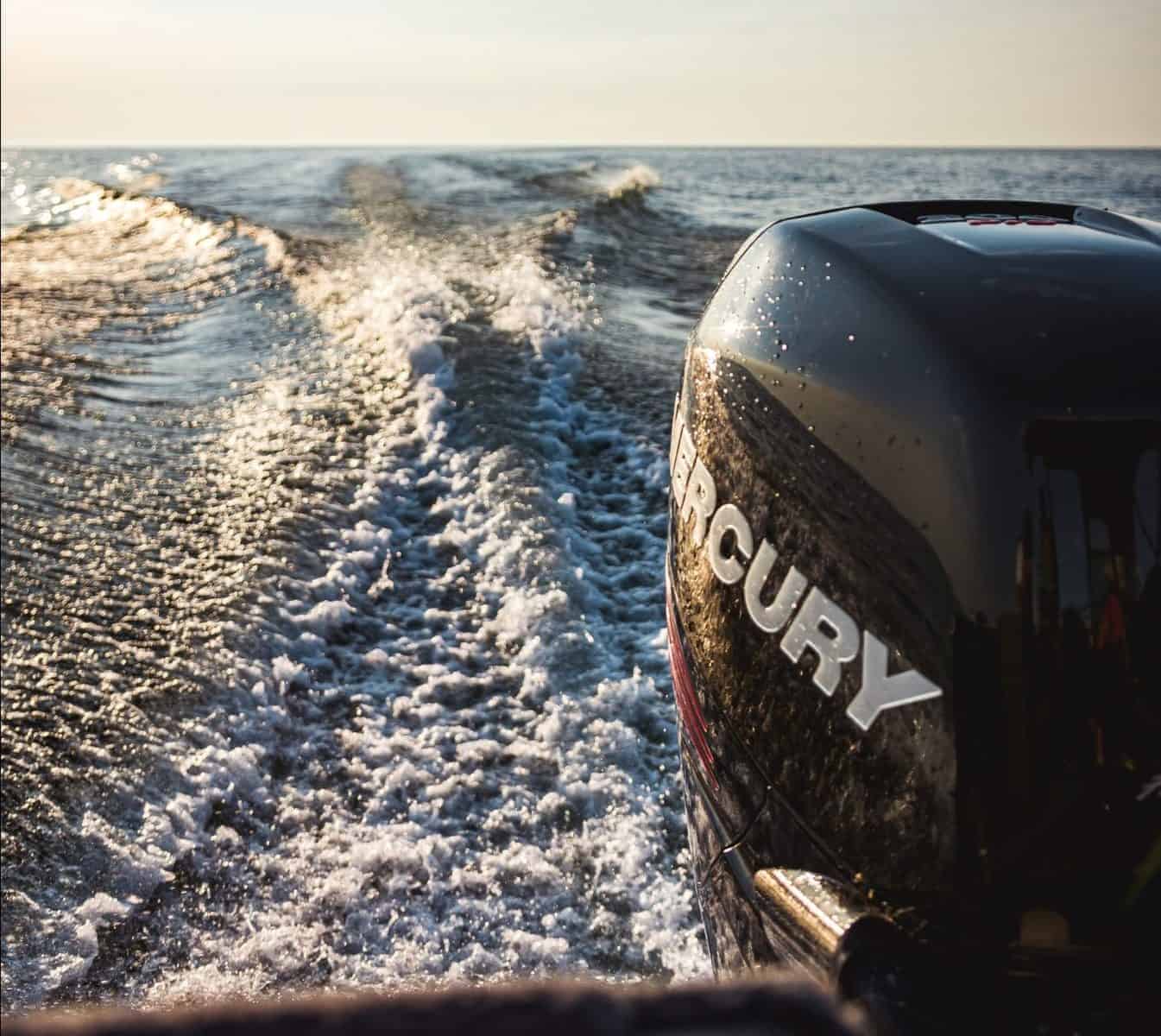
Choosing the best outboard motor goes beyond the power and torque. One of the most crucial factors when selecting between a six and a four-cylinder motor is your boat’s weight. A lighter boat is more compatible with a 4-cylinder counterpart.
Therefore, with a bay or center console boat of fewer than 22ft, a 4-cylinder would be a great fit. Additionally, a lightweight console with double engines is compatible with a four-cylinder motor.
On the other hand, if your boat is bigger, consider a motor with a wider arc for the torque curve. As a result, the engines don’t become overtaxed when your boat is at planing speeds.
Regardless of the aquatic adventures, you embark on using your boat, the best outboard motor such as the ones discussed will usher in more efficient, smoother, and quieter rides.
Furthermore, by considering the ideal size, shaft length, type of engine, and other aspects, you’ll be satisfied for years down the road.
About Chris
Outdoors, I’m in my element, especially in the water. I know the importance of being geared up for anything. I do the deep digital dive, researching gear, boats and knowhow and love keeping my readership at the helm of their passions.
Categories : Boats
Jesse A. Rieber on March 26, 2022
I’m still stuck in decision land. I have a 2007 Guardian (Whaler) 19′. It has a 150 Johnson Fitch. While I will do some fishing, mostly I’m going from one location to another. It will be used in saltwater Nantucket Sound. I am lookoing for direction in terms of repower.
mark hawkins on February 6, 2023
Thank you Chris …..great information. I have a 1994 Whaler Outrage 17, and looking for the best fit.
Leave a Reply Cancel reply
Your email address will not be published. Required fields are marked *
Save my name, email, and website in this browser for the next time I comment.
More in Boats

What Is A Gunwale?

131 of the Best Hawaiian Boat Names

167 Patriotic Boat Names

The 138 Best Boat Names for Dog Lovers

The People’s Poncho Review and Ratings

Oru Lake Kayak Review

About Boatsafe
Established in 1998, BoatSafe is your independent guide into the world of boating, fishing, and watersports. We provide expert insights and detailed guides to help you find products tailored to your needs and budget.
Contact Boatsafe
- Address: 4021 West Walnut Street. Rogers, AR 72756
- Phone: (479)339-4795
- Email: [email protected]
Site Navigation
- How We Test
- Corrections Policy
- Privacy Policy
- Terms & Conditions
- Editorial Policy
- Affiliate Disclosure
Our Reviews

All content is © Copyright 2024. All rights reserved.
- Articles and Guides
Best Outboard Motor Brands for Your Boat
14th jul 2023 by lenny rudow.

Which is the best outboard motor brand? Ask that question at your local marina and you’d better be ready for some serious fireworks—everyone has their opinions on this topic, and they tend to be strong opinions. Truth be told, however, in this day and age on the whole it’s tough to go wrong with any of the major outboard engine brands. Years ago many outboards were dirty, smelly, finicky, and unreliable, but modern four-stroke engine technology has made them far more pleasant to run and vastly more dependable.

Of course, four-stroke gasoline engines aren’t the only type of outboard on the market today. And that begs the question, which is the best outboard motor for the money? For most of us it will be that four-stroke, but there are some exceptions. And while most people tend to paint outboard motor brands with a broad brush, there are plenty of examples of specific models, horsepower ranges, or platforms where one manufacturer in particular shines the brightest.
Types of Outboard Motors
At the most basic level, an outboard engine is any boat motor that can be clamped or bolted onto the transom of a boat to provide propulsion. Most will have a powerhead under a cowl at the top, a midsection where the motor attaches to the boat and that contains a driveshaft running to the lower unit, and a lower section where gears transfer power from the shaft to the propeller. But, as we’ll soon see, there are some exceptions.
Four-stroke gasoline outboard engines
With the retirement of Evinrude, the last manufacturer focused on two-stroke gasoline outboard engines, the vast majority of the gasoline-fueled outboards on the water today are four-strokes. The smallest you’ll commonly see in today’s market are single-cylinder 2.3- to 2.5-horsepower models, and they range all the way up to massive V-12 600-hp models.
Modern four-strokes dominate the market for two very simple reasons: they’re a pleasure to run, and they’re shockingly reliable. Noise and vibration levels are a fraction of what many boaters were accustomed to compared to historic two-strokes. In many cases, they’re so smooth and quiet you don’t even realize the four-stroke is running until you shift it into gear. That makes the boating experience a lot more pleasurable. But what’s even better is knowing that when you turn the key, the engine is going to start. Decades ago, outboards were notoriously unreliable, but today they rival most modern automobiles. Ask a marine industry professional “What is the best outboard motor?” and many would simply answer “a four-stroke,” rather than calling out any one specific brand.

Photo credit: Mercury Marine
Electric outboard engines
Just a few years ago, electric outboards would have been relegated to the bottom of this list, as only a few makes and models were available and it was generally left up to the buyer to figure out how to power them with off-the-shelf batteries. Today, however, it’s a different story. Modern electric outboards are available from under one horsepower all the way up to 300-hp with one manufacturer, Evoy, planning to introduce a 400-hp model in 2024.
Critically, electric outboard manufacturers have begun to offer complete power packages including the highly specialized batteries needed along with the motor itself. In some cases the batteries clip directly on top of the motor’s midsection and the unit looks so similar to a gasoline outboard that it’s tough to tell the difference—other than the complete absence of the sounds, vibrations, and exhaust of internal combustion. And in others, big battery packs are integrated into the boat. Either way, the consumer gets a complete package that’s purpose-designed and ready for use.
Diesel outboard engines
There are only a handful of diesel outboard manufacturers, ranging from 150- to 300-hp. Diesel outboards tend to be quite large and heavy, so they aren’t ideal for most applications. However, the fact that they run on diesel as opposed to gasoline makes them an attractive option for yacht tenders, since they can be refueled by the yacht itself without having to carry more volatile gasoline aboard. For the same reason, diesel outboards are sometimes used by the military. Diesels also tend to offer more range per gallon of fuel, making them an attractive option for some commercial fleets, and in some cases, they can replace inboard engines where previously outboards weren’t an option. (See Outboard Vs Inboard: Which Engine is Best for You , to learn why you might prefer one over the other).
Propane outboard engines
Propane outboards grew quickly in popularity about a decade ago, but quickly crashed when many made by the largest manufacturer (which is today out of business) turned out to be plagued by substandard parts and poor reliability. Better models survived, however, and today there are two 5-hp propane outboards (made by Mercury and Tohatsu) on the market. Many people like them for their quiet, fume-free operation and the ability to fuel them with a convenient propane canister.
Most Powerful Outboard Motor Brands
Mercury Marine undisputedly builds the most powerful outboard engine being manufactured today. Their 600-hp Verado is the world’s first V-12 outboard engine, producing a full 100 horses more than the next closest option. This engine is a 1,260-pound beast, displaces a whopping 7.6 liters, and is available in shaft lengths to 35 inches.
The V-12 Verado has a lot more to it than sheer power. It’s also the first outboard with a two-speed transmission, which shifts so smoothly it’s more or less imperceptible. And in another first, the engine boasts a steerable gearcase. Turn the steering wheel and the cowl remains static, while the lower unit swivels and turns. Additional highlights include twin contra-rotating propellers, integrated electro-hydraulic steering, and a top hatch that allows maintenance access without having to remove the cowl.
Next in line in the power parade is another Mercury, the 500R from Mercury Racing. To create it, Mercury Racing took Mercury’s 4.6-liter V-8 platform, added a supercharger, and then increased supercharger boost while also upgrading some components to accommodate for the additional stresses. Weighing only 720 pounds, it sets a new bar for power density.
The third heavyweight contender is the Yamaha F450. This engine was recently upgraded from the F425 after Yamaha improved exhaust and intake flow, and tweaked the cams and valves. The F450 is the only direct-injection four-stroke outboard in existence, which means that fuel hits 2900 psi at the injection nozzle and is atomized for more complete burning. The F450 also has a unique phased-angle-control charging system which puts out a rather shocking 96 amps at idle. The output is “stackable,” so multiple engine rigs derive the entire benefit of each engine’s charging capacity. That means a twin-engine setup can put out so much juice it’s possible to eliminate the need for a generator to power large energy-sucking appliances like gyroscopic stabilizers and air-conditioning systems.

Photo credit: Yamaha Motor
Best Small Outboard Motor Brands
In the small engine department, Suzuki Marine definitely warrants a call-out. With the DF15A and DF20A, Suzuki created the world’s first battery-less EFI outboards. EFI not only delivers better fuel economy and easy one-tug starting, but by eliminating the carburetor and closing the fuel system, it also turns most ethanol problems into ancient history. Considering how troublesome ethanol proved to be with small carbureted engines, this was a major milestone. Since its initial introduction Suzuki has brought battery-less EFI down to its 9.9-hp model and up through the powerband to eliminate carburetors on all of its outboards above that mark.
Additionally, many of Suzuki’s small outboards boast features like offset crankshafts, oil-bathed timing chains, and “troll mode” systems that allow the fine-tuning of RPM to increments of 50 rpm. While many manufacturers invest all of their time, energy, and tech into developing larger (and thus more profitable) powerplants, Suzuki has proved a leader in the best small outboard motor department.
Best Electric Outboard Motor Brands
A lot of electric outboard manufacturer startups have appeared recently, and many of these motors simply don’t have enough time under the belt yet to prove their longevity nor their ability to survive in the marketplace. So at this point in time, it would be dicey to try to claim which is the best electric outboard motor on the water today.
Torqeedo electric outboards have been around much longer than most. Their lineup of one- to 80-hp outboards has certainly done better than any others on the market, and they’ve proven themselves reliable over the long term. Torqeedo also has integrated battery systems ranging from 500 Wh clip-ons, to a next-generation 79.2 kWh lithium iron phosphate powerhouse that’s rated for 4,000 cycles and is backed by a 10-year capacity warranty. As to whether or when one of the newcomers may unseat Torqeedo from the best electric outboard motor throne, we can’t say.
Evoy also gets a mention here, since they’re building an entirely different class of motor with 120- and 300-hp ratings. The same goes for Vision Marine, which is building a 180-hp powertrain fueled by a 70 kWh power bank. Time will tell how these do in the real world, but we note that Four Winns thought enough of the Vision system to team up with the company and build the H2e, an all-electric bowrider model.
Finally, we need to point out that by the time you read these words there’s a good chance a new electric outboard builder has popped up, and/or that one of the major companies has new offerings to consider. Yamaha now has its Harmo electric package (being sold to boatbuilders as opposed on the open market) and just this year Mercury introduced its first Avator model, a 3.5-hp electric with a drop-in battery that Mercury says is just the first of many electric models to come.

Top Outboard Motor Brands
The number of outboard motor manufacturers is really quite small considering how many outboard engines get sold every year, and the top three hold the lion’s share of the marketplace. Listed in alphabetical order they include:
Mercury Marine
Mercury is one of the largest manufacturers in existence, and you’ve already seen the name pop up as the builder of the top two most powerful outboard engines. In business since 1939, Mercury is based in Fond du Lac, Wisconsin, has manufacturing locations worldwide, and is owned by the Brunswick Corporation.
Suzuki Marine
By volume, Suzuki marine is the smallest of these top three, but has been gaining market share for many years. With a reputation for excellent reliability throughout their lineup from the smallest engine to their largest, Suzuki has won nine National Marine Manufacturers Association Innovation Awards.
Yamaha Outboards
In production since 1960, Yamaha outboards are known for reliability especially in their epically popular V-6 4.2-liter platform. The company has also proved a pioneer in developing complete power and control systems, as opposed to just engines, with products like their Helm Master joystick.
Written By: Lenny Rudow
With over three decades of experience in marine journalism, Lenny Rudow has contributed to dozens of boating and fishing publications and websites. Rudow lives in Annapolis, Maryland, and is currently Angler in Chief at Rudow’s FishTalk ; he is a past president of Boating Writers International (BWI), a graduate of the Westlawn School of Yacht Design, and has won numerous BWI and OWAA writing awards.
More from: Lenny Rudow
Related Articles and Guides
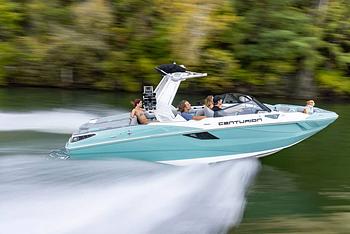
20th Mar 2024
Best Wakesurf Boat Brands
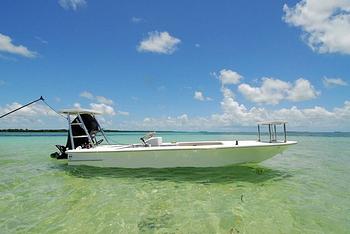
4th Mar 2024
The Best Flats Boats Brands, Special Boats for Skinny Waters
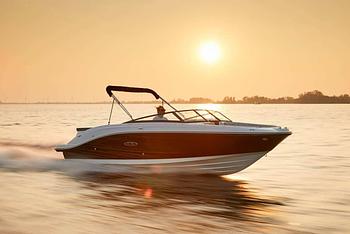
21st Feb 2024
Best Lake Boat Brands for Fishing, Cruising, and Watersports

15th Feb 2024
Best Aluminum Fishing Boat Brands: Tougher, Lighter and More Affordable
- Explore Rightboat
- Boats for Sale
- Boating Articles
- Buyers Guide
- About RightBoat
- Sell Your Boat
- Boat Selling Advice
Enter your email to keep up to date with the latest news
Join for free
Sign up now for free and discover how easy it is to keep up to date with THE latest boats for sale. Find your right boat, and tailor your voyage to finding your next boat.
Benefits of becoming a member:
- Set up tailored alerts
- Personalise your experience
- Download full specifications and broker details
- Keep tabs on your favourite boats
Are you a broker? Join as a Broker
Rightboat - join for free.
Do you have an account already? Login
Save this search
Save your search and receive new boats in your email..
You can unsubscribe from your alerts whenever you like. By pressing the button you accept the Legal Terms and conditions
- 2024 BOAT BUYERS GUIDE
- SHALLOW WATER FISHING
- Email Newsletters
- Boating Tips
- Boating Safety
- Electronics
- Best Marine Electronics & Technology
- Baits & Lures
- Fishing Tackle
- Fishing Travel
- Conservation
- Fishing Knots
- Women in Fishing

Selecting the Best Outboard Motor
- By Jim Hendricks
- Updated: July 15, 2019
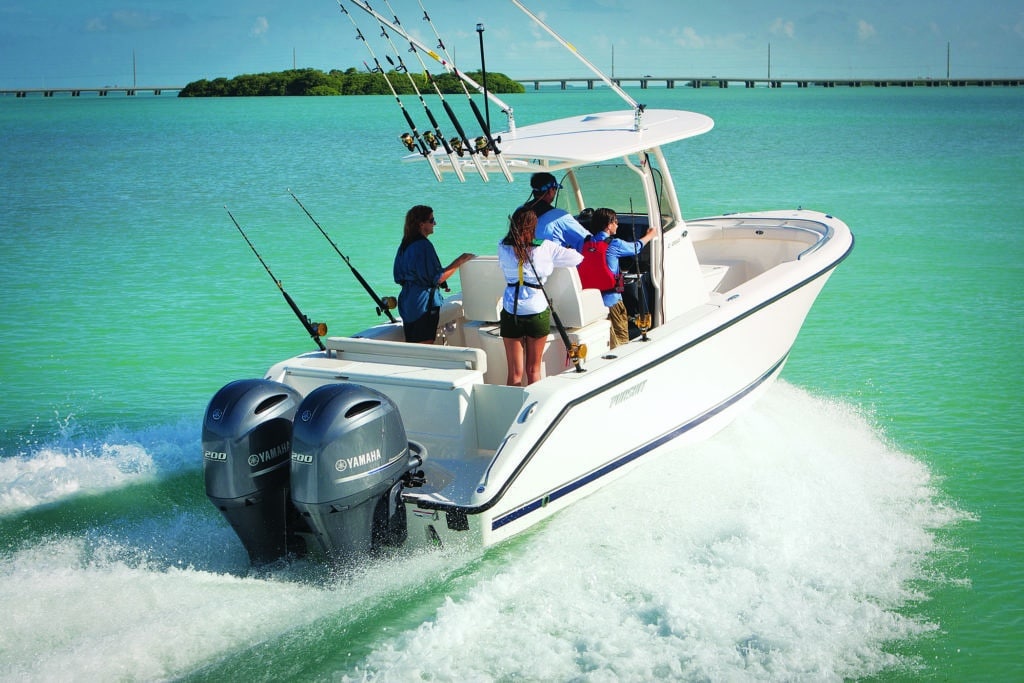
Choosing the Right Outboard Motor for Your Needs
Boating anglers face intriguing choices today when it comes to the popular 200 hp four-stroke outboard motor category. In the past, all 200 hp four-strokes used six-cylinder powerheads. Now, however, Mercury, Suzuki and Yamaha offer four-cylinder 200s, while keeping similarly rated six-cylinder motors in their lineups. (Honda offers just one 200, a V-6.)
This creates a perplexing question for boating anglers shopping for the best outboard motor in this power range, be it for a new boat or for re-powering an older one: Which should you choose, the four- or six‑cylinder model? And what’s the best outboard motor for the money?
Outboard industry experts say the answer depends on a number of major factors related to the type of boat, its usage and the angler’s expectations.
“You need to look at the application demands,” says Lawrence Teeling, product category manager for Mercury Marine’s 75 to 350 hp outboards. “What does the user want? In terms of torque, what does the vessel need? And how much weight can it handle?”
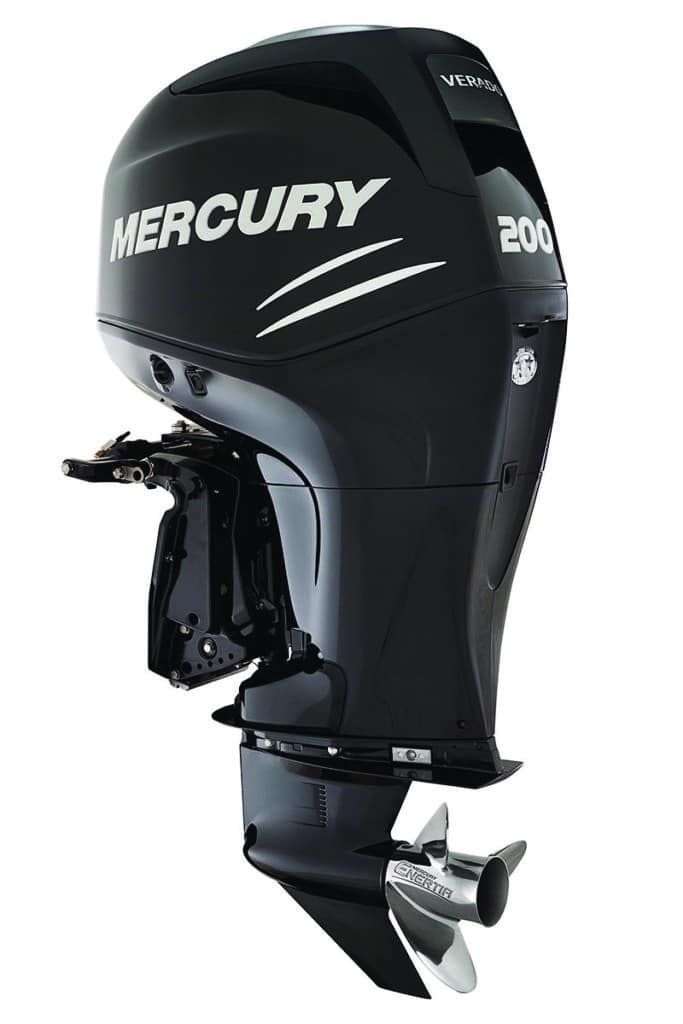
Mercury 200 Verado I-4
Torque differences in outboard motors.
Today’s six-cylinder 200 possesses greater displacement, largely because it has two more cylinders than does an in-line four-cylinder (I-4) of identical horsepower. As a result, six-cylinder versions develop their torque more quickly and over a broader range of revolutions per minute than do I-4 outboards, says David Meeler, marine product planning and information manager for Yamaha Marine.
The Yamaha F200 V-6, one of the best 200 hp outboard motors, features 3.3 liters of displacement. That’s 17.8 percent more than the Yamaha F200 I-4, with 2.8 liters, and that can make a big difference in acceleration. “With our F200 V-6, the torque comes on early,” Meeler explains. “All things being equal, including optimum propeller choices, the V-6 will blast out of the hole quicker than the F200 four-cylinder.”
So if your preference is to jump on plane as quickly as possible, you should look to six-cylinder outboards, whether in a single- or twin-engine application.
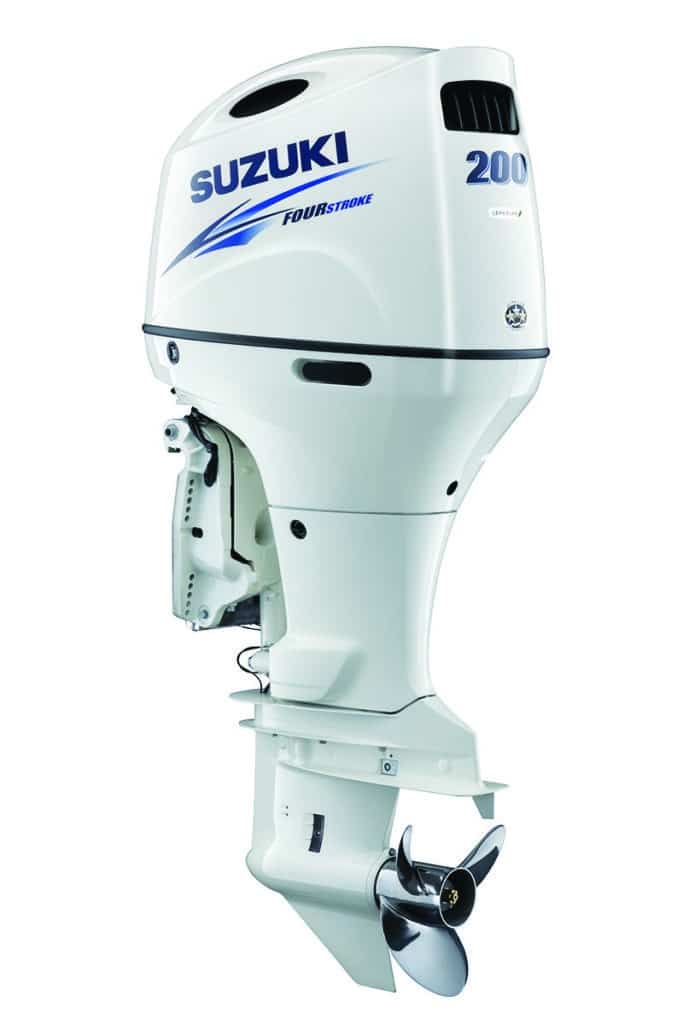
Suzuki’s DF200A I-4
Boat weight.
The weight of the boat ranks as one of the most critical factors in deciding between a four- and six-cylinder outboard, says Meeler. “Lightweight boats such as bay boats and center-consoles under 22 feet usually perform well with a single four-cylinder outboard,” he explains.
A larger, twin-engine center-console that is relatively light for its size might also perform nicely with twin I-4 outboards. Heavier boats, on the other hand, might need the broader torque curve provided by a six-cylinder outboard for adequate acceleration and to plane without struggling or overtaxing the engine(s).
“Because of the longer piston stroke, our [DT225] V-6 has more torque throughout its rpm range,” says David Greenwood, product planning manager for Suzuki Marine. “If a guy has a big, heavy twin-engine boat, he probably wants a pair of V-6s rather than I-4 outboards.”
Meeler concurs. “There really is no replacement for displacement when it comes to providing a fuller torque curve to power a heavy boat,” he says. “That’s why the F200 V-6 outboard is in the Yamaha line. It gives you six cylinders to spread out the load.”
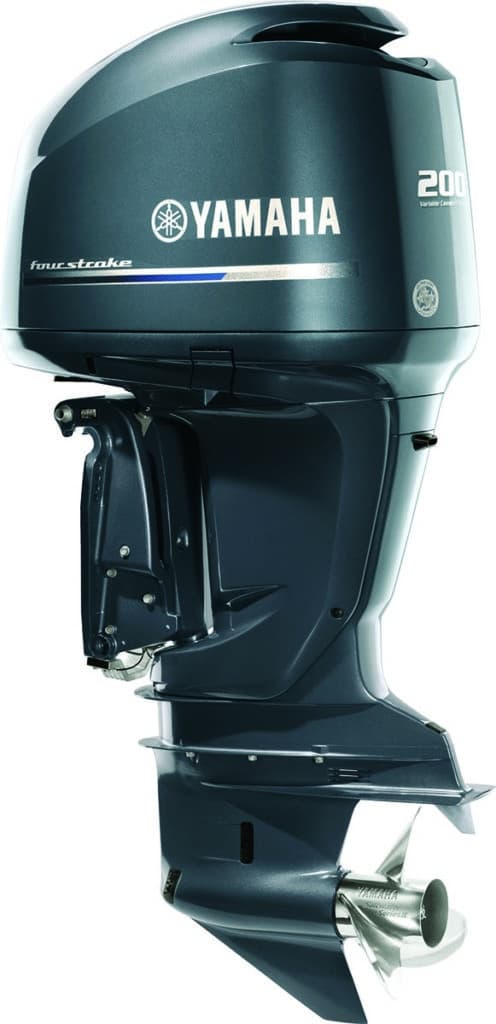
Yamaha Marine’s F200 V-6 Outboard
Hull capacity.
The ability of a boat’s hull to handle the weight of an outboard also plays into the equation when searching for the best outboard motor, particularly when re-powering boats that were originally designed for the older two-stroke engines, says Teeling.
“The older two-strokes were relatively light,” he points out. “But you can replace them with a newer four-stroke engine as long as you’re within 20 to 40 pounds [of the original two-stroke weight].”
That’s where the I-4 outboards come in. They can weigh substantially less than their six-cylinder counterparts, making them more on par with old two-strokes in terms of weight.
Mercury’s 200 Verado I-4, for instance, tips the scales at 510 pounds (with a 20-inch shaft). That’s 19.6 percent lighter than the 635-pound six-cylinder (Mercury uses an in-line six-block) 200 Verado Pro four-stroke with a 20-inch shaft.
“If a guy wants maximum horsepower but not the extra weight, the four-cylinder Verado 200 gives it to him,” says Teeling. Less weight can also translate to less draft, and that’s important to anglers who fish shallow water in craft such as bay boats. You can get into skinnier water and possibly catch more fish with a lighter outboard.
In addition, boating anglers who have always wanted twin engines, but whose boats are incapable of handling the weight of two six-cylinder outboards on the transom, can now opt to re-power with a pair of lighter I-4s.
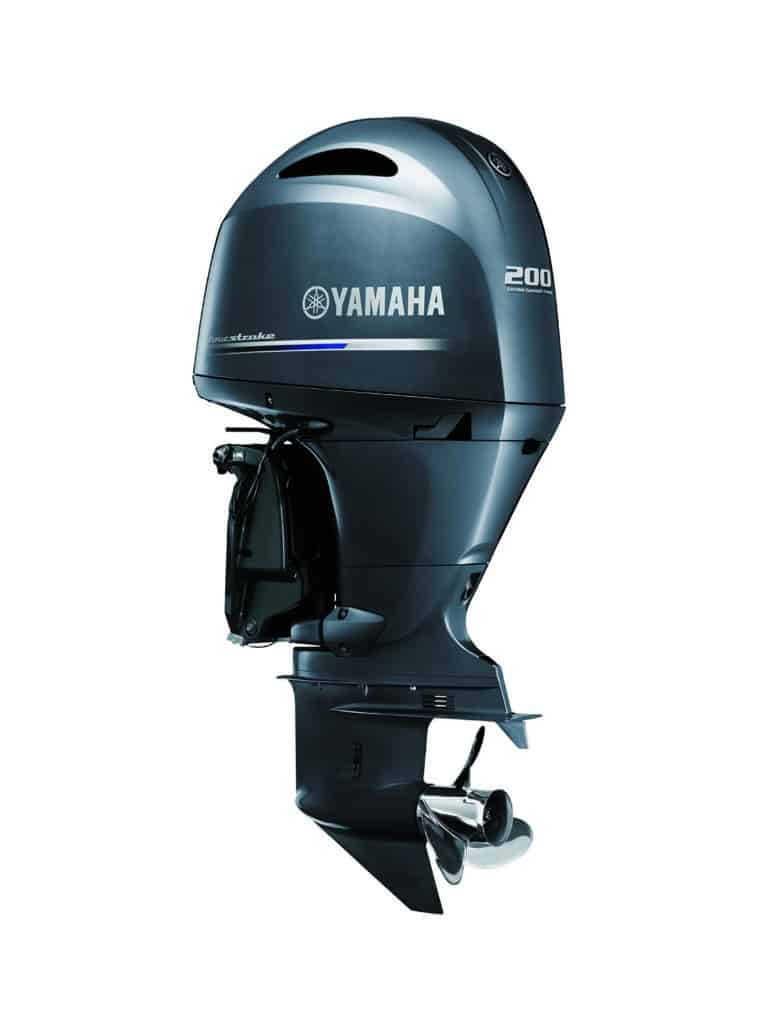
Yamaha Marine’s F200 I-4 Outboard
Fuel efficiency in outboard motors.
“All things the same, a four-cylinder burns less fuel [at cruising speed] versus a six-cylinder, largely because you are feeding 33 percent fewer cylinders,” says Greenwood. The boat is also carrying less weight with a four-cylinder, and that can contribute to better fuel efficiency, he points out.
To gain perspective, I looked at performance bulletins from Yamaha for the 3.3-liter 200 V-6 and 2.8-liter 200 I-4 run on the same model boat, a NauticStar 2200XS center-console.
In both tests (run on separate occasions), the boat achieved optimum fuel efficiency at 3,500 rpm and roughly the same speed (24.3 and 24.4 mph, respectively). The V-6 achieved 4.12 mpg, while the I-4 got 4.44 mpg. That’s 7.7 percent better fuel economy for the I-4, the result of burning less fuel — 5.5 gph versus 5.9 gph for the V-6.
On a heavier craft, the savings could dissipate because an I-4 might need to work harder and/or rev higher than a V-6 to keep the boat on plane. As indicated earlier, a six-cylinder with a broader torque range could be a better choice in such applications. In addition, an engine that does not work as hard will tend to last longer.
A captain who likes to run at wide-open throttle might experience worse fuel efficiency with an I-4. In the case of the NauticStar 2200XS, the Yamaha 200 V-6 achieved 2.64 mpg at wide-open throttle, while the 200 I-4 posted 2.23 mpg with the throttle pinned.
After a cursory review of 200 hp four-stroke outboard prices on the Internet, I found that an I-4 costs about $1,000 to $2,000 less than its six-cylinder counterparts, but I would not let the difference in price sway a decision. Rather, as the experts point out, your selection should hinge on the type of fishing boat , how you plan to run it, and the goals you set for performance and fuel efficiency.
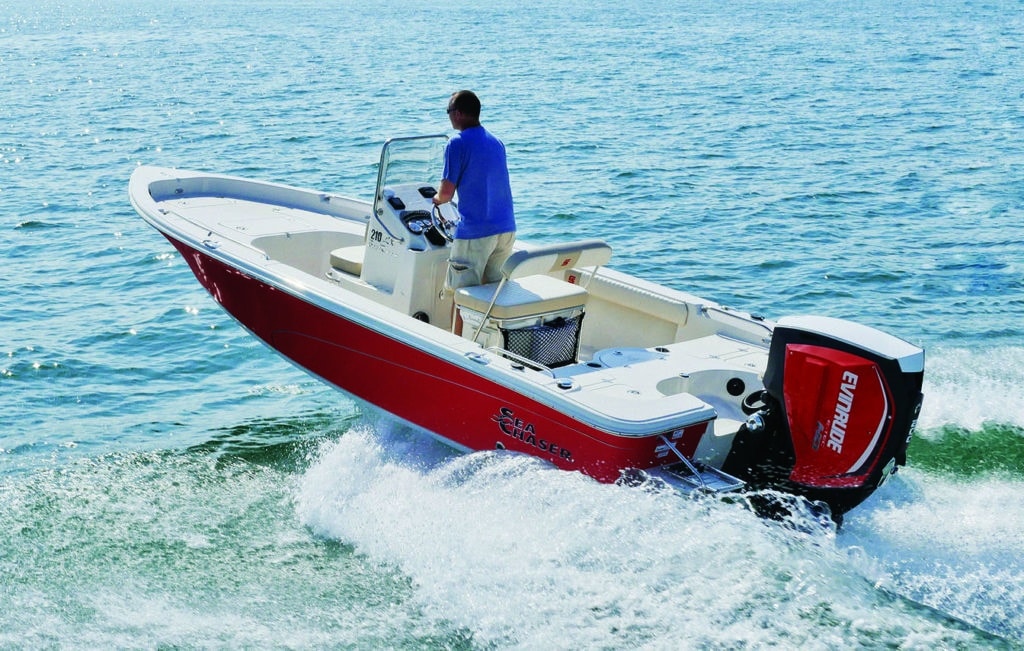
Evinrude 200 hp Outboards
Boating anglers considering a two-stroke Evinrude 200 might also become confused by their choices. The company offers more than one direct-fuel-injected two‑stroke V-6 outboards.
The new E-Tec G2 200 features 2.7 liters of cylinder displacement, while the heavier E-Tec G2 200 H.O. boasts a displacement of 3.44 liters. You can apply the same principles I outlined for four-cylinder four-strokes to the E-Tec G2 200, and use the six-cylinder principles for the G2 200 H.O.
We’ve learned that selecting the best outboard motor for your boat will depend on a number of factors. Who makes the best outboard motor is still up for debate, but we have listed several manufacturers in this article that should be in contention.
- More: Boat Engines , fishing boats

What’s Good Fuel Economy for a Fishing Boat?

Yamaha Releases New 350 Horsepower Outboard
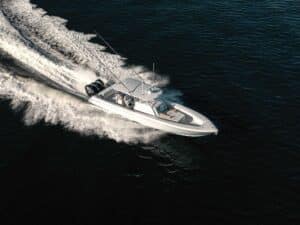
Supersize Center-Consoles Expand Angling Horizons
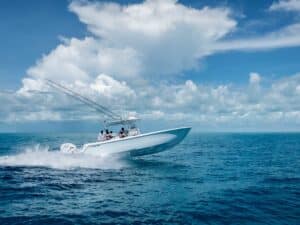
Things To Look For in a Jig-and-Pop Boat
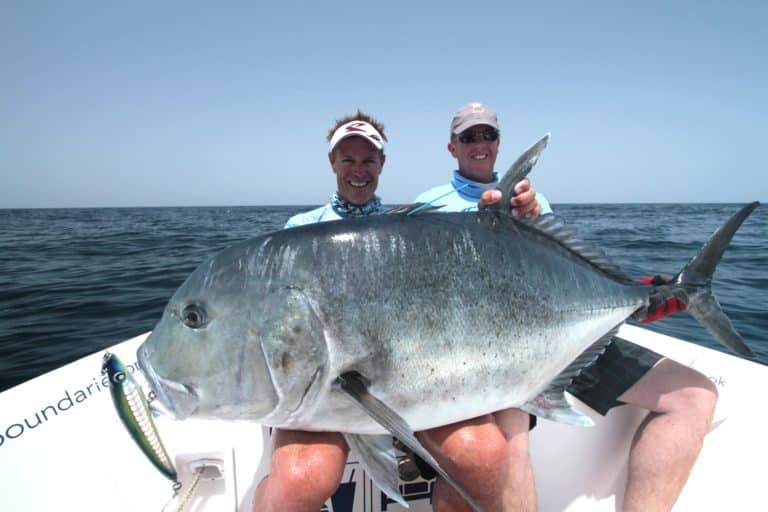
Toughest Nearshore Game Fish

New Gear: The Siren Connected Boat App
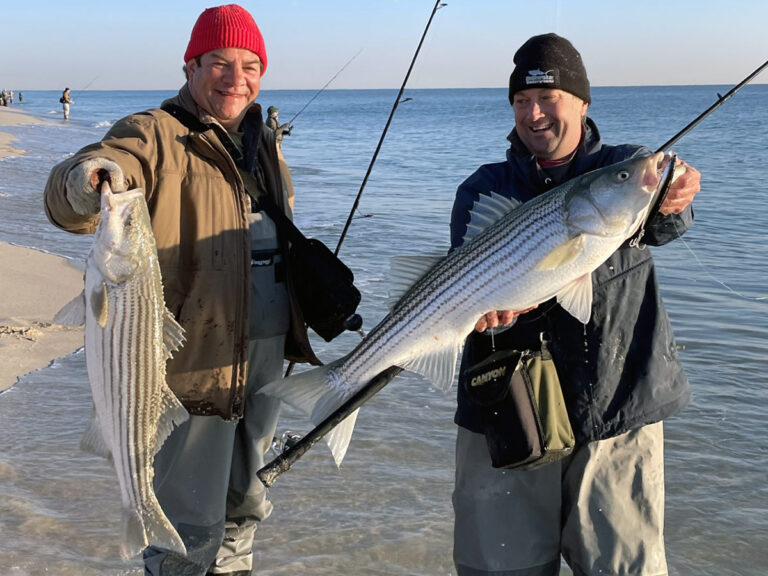
QUICK GUIDE: Surf Fishing Etiquette
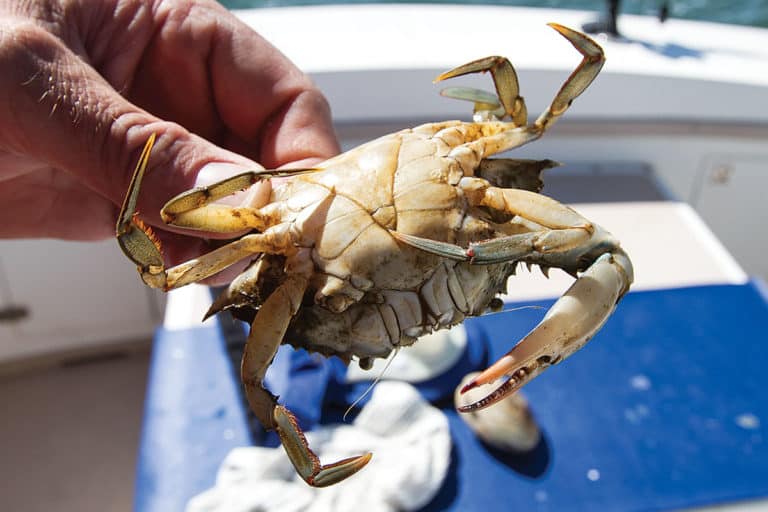
Fishing With Crabs as Bait
- Privacy Policy
- Cruising World
- Sailing World
- Salt Water Sportsman
- Sport Fishing
- Wakeboarding
Many products featured on this site were editorially chosen. Sport Fishing may receive financial compensation for products purchased through this site.
Copyright © 2024 Sport Fishing Firecrown . All rights reserved. Reproduction in whole or in part without permission is prohibited.
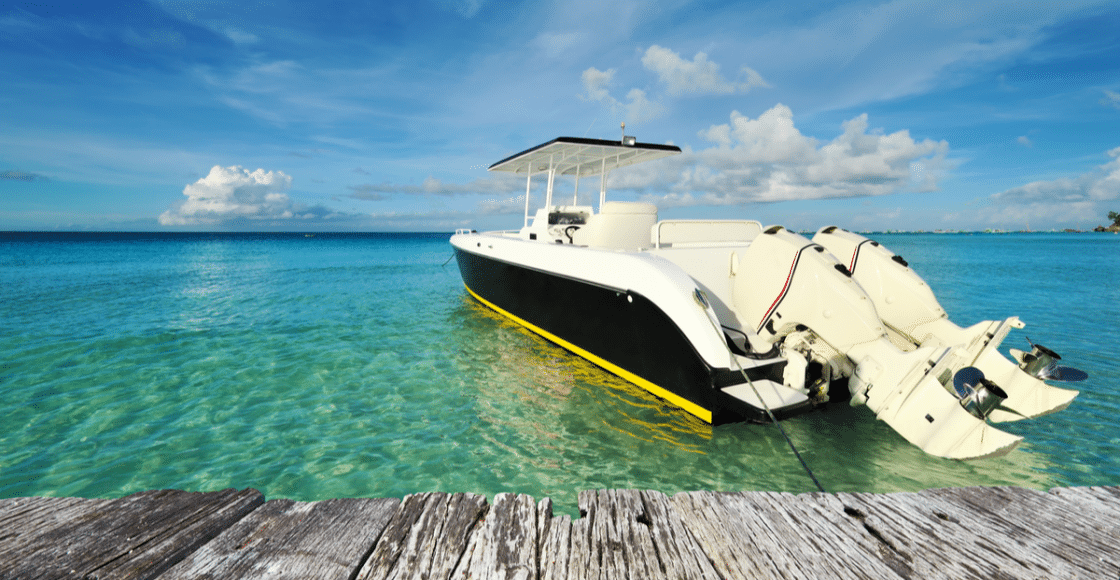
Inboard vs. Outboard Motors

Table of Contents
Inboard vs outboard motors, which is better? Although a divisive one, this discussion is as important as it is overdue. Boat owners, be they rough and ready fishermen or pleasure sailing dandies, usually fall into two camps: those who sing the praises of inboard motors and those dedicated to all things outboard.
The first thing to notice is that over the last decade (or two), there has been a growing trend of new boats coming equipped with outboard motors. According to survey data by the NADA , the boating industry sold more outboard motor-powered crafts over the last few years than ever before. In fact, more than 165,500 outboard motors were sold in 2016. Some pundits have argued that this is due to consumer preferences, while others have said it is more cost-effective to install for manufacturers.
However, does this mean that this variety of motor trumps the inboard? After all, why would outboard motors become the standard for boating power if they were not the best?
Not so fast.
Every experienced owner of a boat has a preference. This is even more true of manufacturers. Ask anyone in the boating game what type of motor they prefer, and you will get a different answer. You are likely to start up a fierce debate – be warned! Whatever you might have heard at the port , it is vital that before you attempt to choose your ideal style of motor, you must set aside any preconceived notions you may have.
The truth is: neither motor wins outright in the perennial inboard vs. outboard debate. Like your own kids or car collection, each one has its own merits and quirks. Nevertheless, the motors do outclass one another in specific categories and areas. As such, must depends on what you plan to do with your boat and your personal preferences. Freshwater or saltwater? Manoeuvrability or stability? Speed or stamina? All of these questions, alongside a million more, ought to be considered.
Inboard Motors
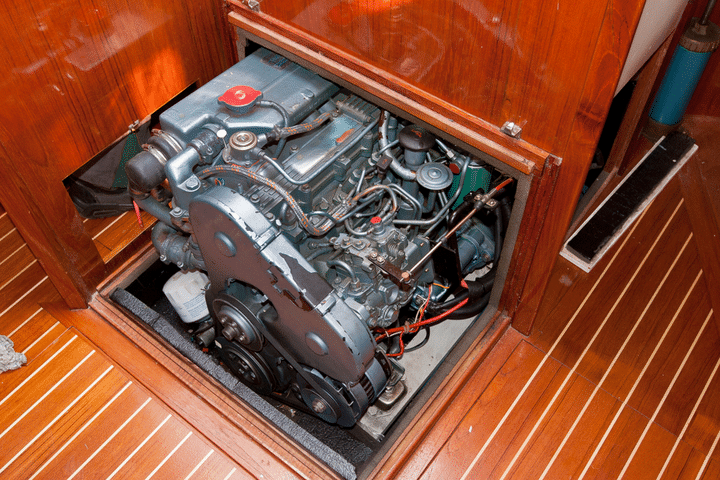
True to its namesake, an inboard motor is fixed inside the boat, typically at the hull . Petrol and gas versions have combustion engines with firing cylinders, whereas electric models differ. Inboard motors are often housed in a large box in the middle of the vessel. This center of gravity is a huge benefit to a drifting experience.
You can spot an inboard at the port by the distinct rudder used to steer the ship. Fishing trawlers on the high seas rely on these of their lower center of gravity. At the same time, slalom skiers enjoy their smaller wake . Larger vessels, like yachts, also use inboard motors but require bigger models, which cannot be placed on the rear of the hull.
Making a judgment on the merits and drawbacks of the inboard is tricky as those who prefer them have their own set of valid reasons. While they need a large box in the middle of the ship to hold the engine – something that can reduce much-needed deck space – they are quieter than their outboard counterparts. This renders them more suitable to the socialites out there who love entertaining. And let us not forget those fishing folks. A quieter boat is less likely to disturb your prey, ensuring a bigger and better catch is had by all.
Albeit ever so slightly more expensive than their outboard counterparts, inboard motors have a penchant for fuel-efficiency. This is because they are modeled on car engines. Moreover, this means that they boast better torque and horsepower for some hair-raising water antics.
A major – and potentially dangerous – downside to the inboard is that it can be a fire hazard. Unfortunately, countless vessels have been damaged and destroyed by fires that began in the inboard motor. Yet fear not. Running a bilge blower can solve that issue.
Check out this post for more tips on how to look after your pride and joy .
Outboard Motors
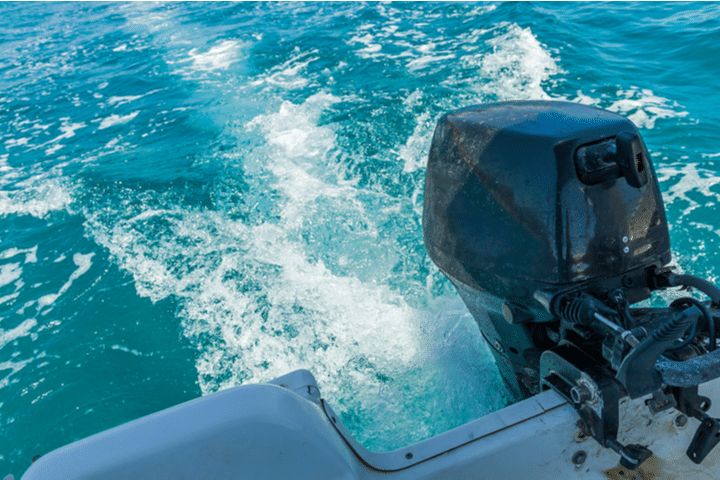
With sales figures as high as those quoted earlier, it is little wonder that the market for outboard motors is huge. No, gigantic. What this means for consumers is that there is ample choice out there. There is an outboard motor to suit any and every function for fishing, recreational boating, or small commercial outfits.
The engine of an outboard is rear mounted on the boat and is commanded by a handle for steering and titling. The propellers can be lifted out of the water completely, which means that transporting and storing them when not in use is a breeze. More so, this feature means that the propellers avoid sitting in the water for prolonged periods, protecting them from erosion and the growth of organic matter. This maximizes durability, of course.
Another notable advantage of the outboard is that its position on the boat makes replacing the motor a simpler process than the inboard. Indeed, replacing an inboard is often an expensive and time-consuming task. This capability means that you can easily upgrade to a new, more powerful motor should you wish to – all without the need for specialist tools or professional expertise. This same simplicity also carries over to repairing and maintaining an outboard. That is if you need to do so. Outboard motors are famous for their dependability.
Yet, outboards are not impervious to faults. A significant drawback of this style of motor is that its power can often leave much to be desired. The bottom line is: outboard motors are insufficient for large vessels. Well, unless you want to spend your life savings on fuel. Finally, outboards take up space. And lots of it. If you wish to entertain on your boat, which is your primary purpose, you might want to consider the inboard. Again, much depends on your needs.
But before we move on to cost, maintenance, and power comparisons, let us talk hybrids. Oh yes, that is right, here it is, the curveball: the happy medium, the center-ground. Although the hybrid resembles more the outboard with the motor mounted at the rear of the hull, the propeller shaft passes through the boat’s hull. Sharing most of the pros and cons of the outboard, the hybrid also comes with the challenges of the inboard’s positioning.
Want to read more about all things hybrid? Check out this 2020 Guide to hybrid and electric boats .
Cost Comparisons
Of course, the larger the engine, the more expensive it will be to purchase. But you may want to also consider maintenance and replacement costs, along with the life expectancy of the motor design.
For instance, inboard motors typically have a longer life expectancy than outboards. Meanwhile, maintenance requirements, based on hours of use, tend to favor the inboards. To be clear, inboards, on average, can run for near two thousand hours before they might require attention, whereas outboards usually run for around 750 hours before a service is needed.
Yet pay attention : purchasing an inboard motor will be heavier on the purse strings and can entail insurance coverage with more expensive premiums.
Sounds confusing, doesn’t it? Never fear. This boat payment calculator can assist you with the difficulties of working out finances by working out the running costs of your chosen engine. It is where boating veterans of all stripes get their knowledge.
Maintenance Costs
It can be a boring topic. However, you ignore it at your peril: maintenance. As touched upon earlier, outboard motors are used praised for their low, no-nonsense maintenance requirements. Situated at the rear of the hull, their housing protects the inner workings of the motor from the environment.
Hybrids and inboard alike share the same issue: positioning. At the boat’s bilge, steam, damp, and good old H20 can wreak havoc inside the motor when you need to open it for maintenance, potentially causing you a pain in the behind (and wallet). Compounding matters, accessing them is also tricky. This is primarily caused by the petite hatch in their housing, giving you less wriggle room than an outboard.
When you wish to place your boat on land, outboard motors also do not have a drain due to their placement on the boat. This means that excess water can sit around, again creating trouble if you decide to take your boat out of the water. Conversely, inboard varieties avoid this design, which protects them from possible damages caused by moisture.
Power Comparison
POWER. It is a topic you cannot avoid considering. The directional thrust and integral skeg of the outboard mean that a boat equipped with one of these bad boys is nimble on the water, especially at low power and speed. The benefits of this are countless. However, an outboard motor mostly enables you to navigate shallower waters better and park your boat up neatly.
Although there is one thing to bear in mind: despite having a superior power to weight ratio than inboards, outboards lack the total torque to drive big, beefy vessels. However, enthusiasts generally circumvent this issue by adding a second motor. Nowadays, it is not uncommon to see three or four motors adorning their transoms.
Moving on to the inboard, describing them is easy: they are the complete opposite of the outboard in this regard. The fixed position of the propellers under the middle of the boat reduces maneuverability, particularly at lower speeds. This is not to imply the inboard is a slug, however. They are adored by water sports enthusiasts worldwide as they have better wake control, major towing power, and a clear transom for tow ropes. If you are into wakeboarding and water skiing, then an inboard is for you. Besides, a lower center of gravity also helps cut through heavy ocean waves.
So, Which One is Best?
There you have it: a complete guide to outboard vs. inboard motors.
To recap, the advantages of an inboard motor are that they have brilliant fuel efficiency, superior torque and power, and increased life expectancy, and quiet operation. Whereas its downsides are that there is reduced interior space, higher purchasing costs, labor-intensive maintenance, more complex repairs, and full boat winterization is required.
Outboard motors, on the other hand, have a myriad of sought-after traits. Their full portability, easy maintenance, space-saving storage, and simple winterizing procedures, significantly lower price tag, extra interior space, and higher potential top speed. Still, do not forget the challenges. Some of them might break your choice. Most notable of which include low power and torque, which limits their suitability for vessels of certain sizes.
While there are many pros and cons to inboard and outboard motors, it is important to bear in mind that making the right choice is completely up to you and your needs. You may find a better outboard, despite setting out to buy an inboard and vice-versa. The size of your boat, desired maneuverability, boating frequency, local climate, and favorite water activity are essential factors to consider.
Good luck, and remember to do your research. The right decision will enrich your boating experiences to no end and might even prove gentler on the bank balance.

Boatsetter empowers people to explore with confidence by showing them a world of possibility on the water. Rent a boat, list your boat, or become a Boatsetter captain today.
Browse by experience

Explore articles
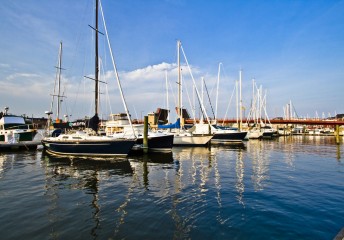
5 Reasons to Visit the Sailing Capital of the US: Annapolis
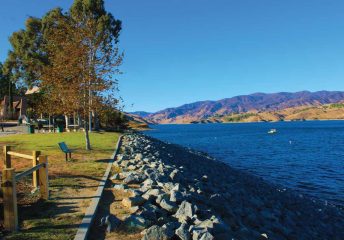
5 Best Lake Near Los Angeles, CA
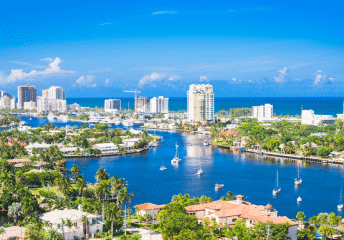
Fort Lauderdale Boating Guide
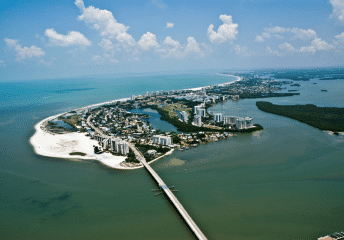
Fort Myers Fishing Guide
- Privacy Policy

8 Best Outboard Motors In 2023
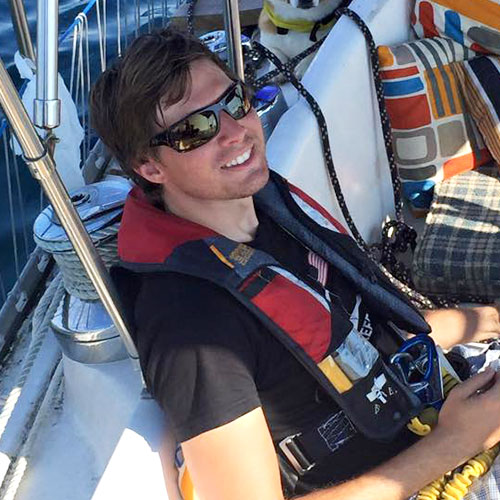
Reviewed By Herb Benavent / Boating Editor
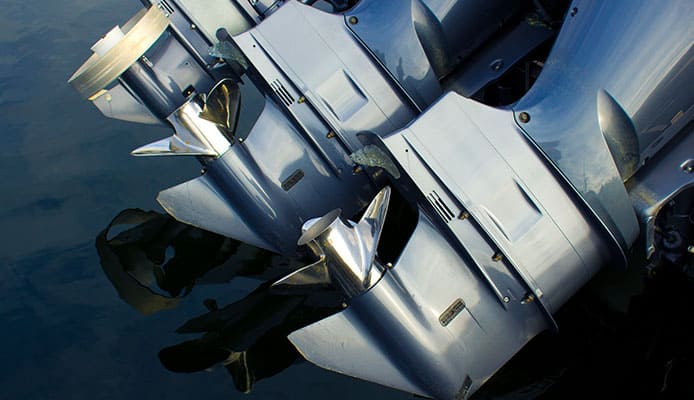
OUR TOP PICK
Coleman Powersports 2.6HP
Editors choice.
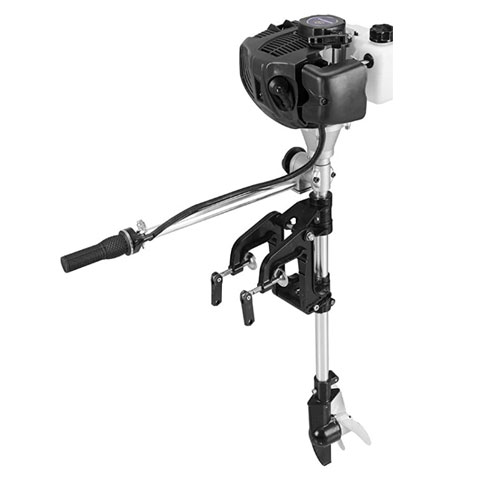
Sea Dog Water Sports 2.5HP
Watersnake ASP Saltwater Transom Mount
The top 8 outboard motors in 2023.
- 1. Coleman Powersports 2.6HP
- 2. Sea Dog Water Sports 2.5HP
- 3. Watersnake ASP Saltwater Transom Mount
- 4. Sea Dog Water Sports 6HP 2 Stroke
- 5. Cozyel 3.5HP Heavy Duty
- 6. HANGKAI 3.5-18HP 2-4 Stroke
- 7. Sky Superior Engine 4-stroke 1.4HP Small
- 8. Sky 3.5 Hp Superior Engine
If you’re after a faster and more reliable way to move across the water, perhaps it’s time you upgraded the outboard motor on your boat. Modern small boats are hard to imagine without a good outboard motor, as they are now more efficient and affordable than ever.
With so many sizes and types available, choosing a small outboard might seem a bit complicated. But, with proper information, you’ll be able to equip your boat with just the right amount of power. In this article, you’ll learn all about the best outboard motor s on the market and how you can benefit from them.
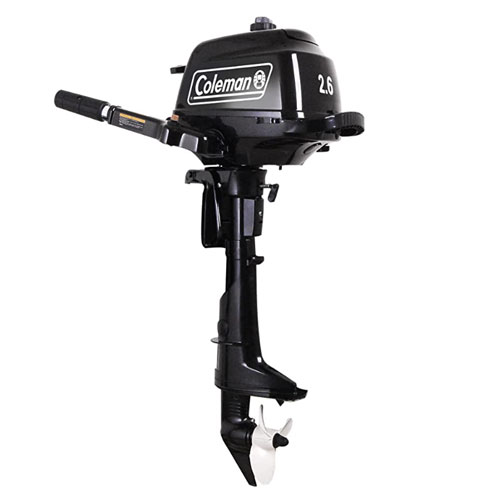
Coleman Powersports engine is lightweight and economic, but still has an impressive amount of thrust. Because of this, it makes an ideal small boat motor. The engine produces 2.6 horsepower, which will easily propel even a loaded boat. By construction, it’s a 4-stroke motor, meaning that it offers a smooth operation while not burning oil and good fuel efficiency. This is great for the environment as compared to a 2-stroke motor which is designed to burn oil in the gasoline and creates a lot of pollution as a result.
The shaft is relatively short, which is good for boats that have a lower transom (like inflatables for example). A detail we really like is that the tiller handle allows 360° rotation, so the boat can go both forward and reverse. Last but not least, the Coleman outboard is an eco-friendly motor that complies with CE and EPA regulations.
- Stand Out Features - Why We Love It
- Incredibly lightweight considering the engine power
- TCI ignition system makes starting easy
- CE and EPA approved (eco-friendly)
- Reliable, smooth and quiet operation
Type: 4 stroke Power Output: 2.6 horsepower Fuel Tank: 1.2 liters Shaft Length: 20 inches Weight: 37.5 pounds

If you want an efficient outboard engine that won’t overburden your boat, Sea Dog Water Sports 2.5hp motor is a good choice. Compared to other petrol engines, this one is significantly lighter. At only 21 pounds, it won’t make a huge weight impact on your boat once you mount it and will be easy to carry onto the boat to mount it.
As for the performance, it’s good relative to size. The power output of 2.5 horsepower is plenty for most smaller boats, while the air cooling system maintains the temperature and prevents it from overheating. Despite being a single-cylinder 2-stroke motor, it’s fairly fuel-efficient too. Finally, the entire construction is corrosion-resistant for safe marine use.
- Anti-corrosive construction for saltwater use
- Air cooling system maintains engine temperature
- CDI ignition system with a recoil (manual) start
- Ideal option for inflatables and other small boats
Type: 2 stroke Power Output: 2.5 horsepower Fuel Tank: 1.2 liters Weight: 21 pounds
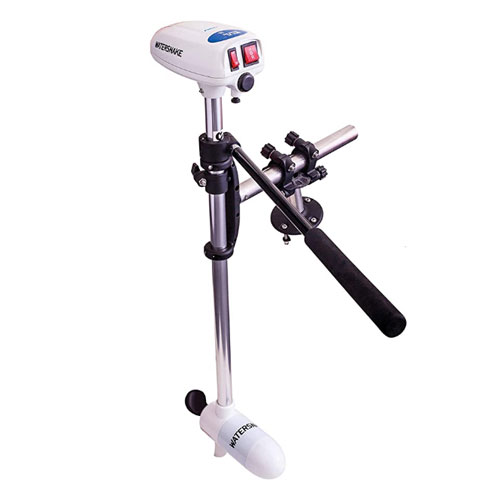
Instead of using gasoline, the Watersnake motor is powered by electricity. It doesn’t require a fuel tank, and the only thing you need to do is connect it to a 12-volt power source (a marine battery). As a cherry on top, it’s also the most affordable model in our reviews.
Weighing less than 5 pounds, the Watersnake transom motor is significantly lighter than any petrol-based engine. Still, both the 18 and the 24-pound-thrust versions offer plenty of push to move you around. While the shaft isn’t short (24 inches), it comes with an anti-impact clip to prevent damage if you scrape the bottom. And, for your comfort, the steering handle is extendable and adjustable.
- Electric-powered (requires a 12V marine battery)
- Efficient two-blade propeller with weedless design
- Anti-impact clip system on the shaft mount
- One of the lightest options on the market
Type: Electric Voltage: 12V Thrust: 18 and 24 pounds Shaft Length: 24 inches Weight: 4.85 pounds
Sea Dog Water Sports 6HP 2 Stroke
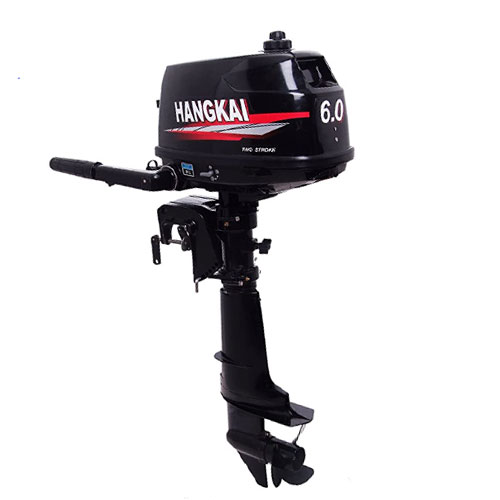
For those of you who prefer a more traditional engine, Sea Dog Water Sports 2 stroke motor has plenty to offer. The single-cylinder engine delivers up to 6 horsepower, allowing you to mount it on any small boat. While it doesn’t have direct fuel injection (DFI), the engine is still very efficient and doesn’t waste too much fuel.
This top-rated marine motor comes with a 2.5L fuel tank and works best with 92-octane lead-free gasoline. The twist-grip throttle makes accelerating easy, and the 360-degree rotation of the handle enables you to reverse without changing gear. Lastly, the shaft is 26” long, so you will be able to sit more in the middle of your boat and still reach the tiller to steer and control your speed.
- User-friendly tiller control for 360° steering
- Able to go in reverse without changing gear
- Non-corrosive hardware is safe to use in saltwater
- Covered by a 1-year warranty (with free replacement parts)
Type: 2 Stroke Power Output: 6 horsepower Fuel Tank: 2.5 liters Shaft Length: 26 inches Weight: 56.9 pounds
Cozyel 3.5HP Heavy Duty
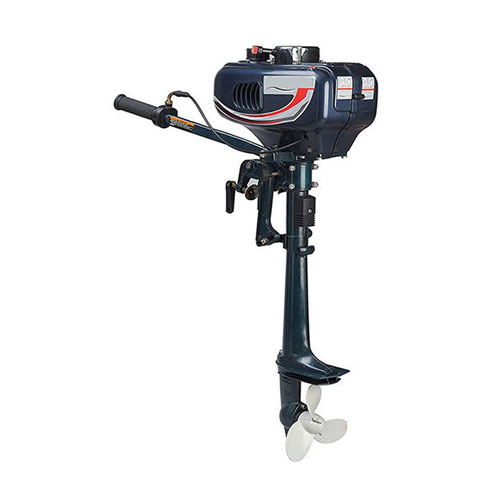
The most interesting thing about the Cozyel motor is its construction. Made of high-quality cast aluminum, it’s completely resistant to corrosion. By design, it’s a 2 stroke engine with a 1.3-liter integrated fuel tank. It’s capable of producing 3.5 horsepower at its peak, which makes it the most excellent outboard motor if you need something mid-sized but reliable.
With four people on board, the engine can propel your boat up to 20 kilometers per hour. As you can see, it’s a manual start system, with a CDI ignition that makes the process smooth. One more detail we like is the Start-In-Gear protection feature that prevents the propeller from rotating when the engine is idling.
- Start-In-Gear protection prevents prop rotation when idling
- 360-degree steering allows going in reverse without changing gear
- Works best with regular unleaded gasoline in 30:1 fuel-to-oil ratio
Type: 2 Stroke Power Output: 3.5 horsepower Fuel Tank: 1.3 liters Shaft Length: 16 inches Weight: 27 pounds
HANGKAI 3.5-18HP 2-4 Stroke
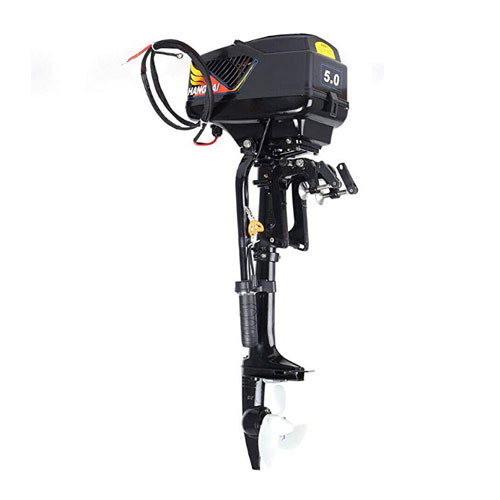
Hangkai motors are the most versatile products on the market, with engines available in all different sizes and types. Our review will focus on the 6hp 2-stroke engine, as this one is the most popular model of the bunch. However, you can get both 2-stroke and 4-stroke models, with power output ranging from 3.5 to 18 horsepower.
The engine design is very modern, with impressive performance for its size. Much of this is thanks to the water cooling technology that keeps it from overheating while in use. Unlike most other models, this one also includes a true reverse gear that makes it easier to navigate in tight spaces. Finally, each motor comes with a nice 3-year warranty.
- Water cooling technology improves engine performance
- Emissions from the motor meet the CE requirements
- Several different types and power outputs available
- Covered by a 3-year manufacturer’s warranty
Type: 2 Stroke Power Output: 6 horsepower Shaft Length: 16 inches Weight: 55.1 pounds
Sky Superior Engine 4-stroke 1.4HP Small
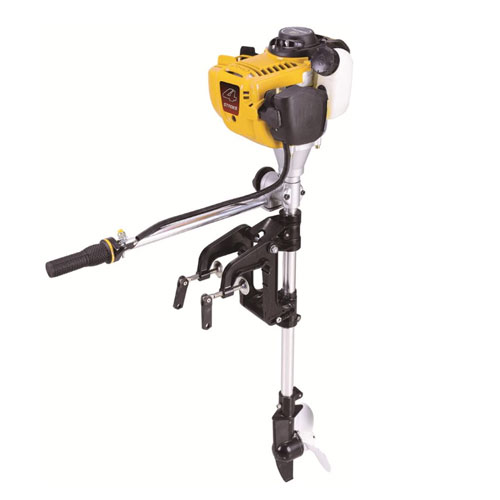
Even though Sky Superior isn’t the most powerful model, it’s incredibly reliable and quiet in use. For a reasonable price, you’ll get a well-designed 4-stroke engine that produces 1.4hp. It’s certified for both fresh and saltwater, giving you some versatility. All this makes it one of the most excellent outboard motors for fishing boats.
The whole engine is very compact – the fuel tank has 0.65l capacity, while the oil capacity is 90ml. On a full tank, the motor will run for 1 hour and 16 minutes and give you enough range to set out to sea. It is equipped with a safe-grip twist throttle, and it can run an inflatable boat up to 5 miles per hour.
- Quiet operation makes it perfect for fishing
- Comfortable and safe twist grip throttle control
- Very good fuel economy and range relative to the size
- User-friendly instructions for optimal operation
Type: 4 Stroke Power Output: 1.4 horsepower Fuel Tank: 650 milliliters Shaft Length: 34.25 inches Weight: 21.9 pounds
Sky 3.5 Hp Superior Engine
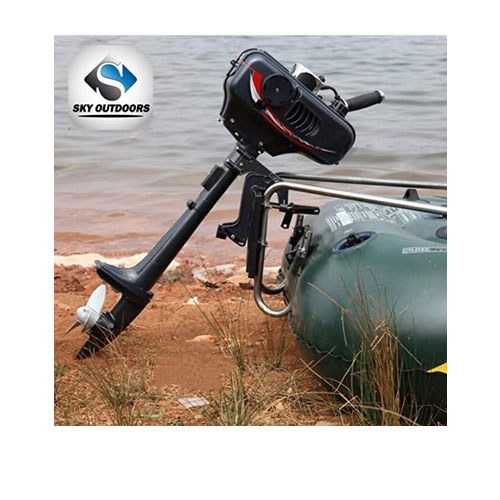
Thanks to its 3.5 horsepower, Sky 3.5 Hp Superior outboard engine delivers a very good thrust. On the other hand, the price is still very good for an engine of this size. It’s a 2-stroke model with great reliability on the water, but the petrol efficiency could be a little better.
Recommended gas is 93 lead-free petrol, and you should mix it with professional gear oil. The motor has a manual start and tiller steering, but it’s very easy to control and performs well. Finally, if you take care of it and follow the instructions, this product can last for a long time.
- Two-stroke motor with very good power output for its size
- Side air vents efficiently cool the motor and prevent overheating
- Lightweight body with excellent protection against corrosion
- Well-designed recoil handle makes starting the engine easy
Type: 2 Stroke Power Output: 3.5 horsepower Shaft Length: 26 inches Weight: 21 pounds
How To Choose An Outboard Motor – Buying Guide
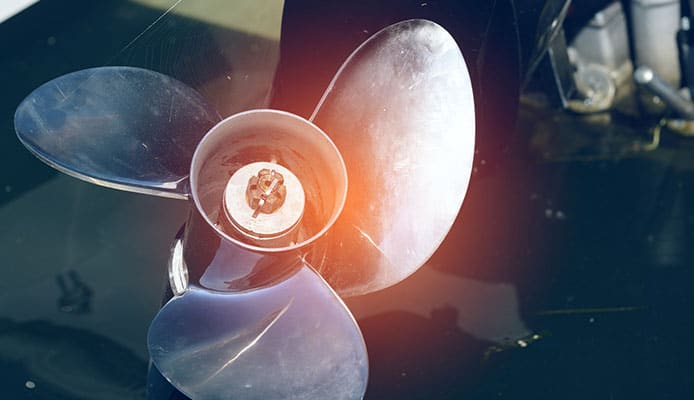
As you’ve had the chance to see, the main options you have are a two-stroke and a four-stroke engine. Traditional two-stroke outboard motors are slowly being taken out of the equation, and soon enough they won’t be available in stores.
The reason for this is that they are not as energy-efficient as their alternative, and they have a larger negative effect on the marine environment. On the other hand, four-stroke outboard engines are cleaner, more reliable, and in most cases last longer.
Some manufacturers made design changes on the two-stroke, creating DFI (direct fuel injection) system. This allows the fuel mixture to be injected in precise time intervals (when the exhaust valve is closed), so all of the fuel can be burned. In turn, this increases efficiency and reduces harmful effects.
In addition to this, most small outboard motors have a manual (pull) start. Some products have an electric start as an alternative that provides more comfort. However, you would need to install a marine battery for this too, and the cost may run a bit higher.
Torque Differences
Due to their design, the 4-stroke outboard motors produce greater torque with higher efficiency. The torque curve isn’t as sharp as in two-stroke engines, which gives you a smoother experience while riding.
Even though 4-strokes are known to be heavier, this weight gap is slowly being reduced, making the difference in speed between 2 types almost non-existent.
Boat Weight
Boat weight is a factor that influences the outboard motor size. It makes sense that a larger, heavier boat requires a more powerful motor. The general rule is that you need a 5hp outboard motor per tonne. This is usually the minimum to keep you moving steadily.
If you want more speed, go with a larger motor. This also goes if you have additional people or gear aboard. On top of this, the boat propeller should be properly matched too. Keep in mind that a stronger motor weighs more, which may be a problem if you need to carry it.
Hull Capacity
When you mount the engine on the transom, your boat needs to be able to handle the weight. This (and power) is the reason manufacturers specify the largest motor you are allowed to install. This info should be pointed out in every boat manual, so be sure to look it up.
A large number of older boats were designed for lighter 2-stroke outboard engines, but 4-strokes can also be successfully installed as long as you follow the guidelines. If you overload it, you will reduce the speed and efficiency, and it can even be dangerous if the boat tips to the back too much. If the boat’s trim is too far off, water can pour in over the transom and the boat can be swamped. This is all easily avoidable by simply selecting a motor that fits your size of boat.
You might also like: Top Boat Carpets
Fuel Efficiency
Possibly the biggest downside of a 2-stroke engine is the lower efficiency. At one point during the cycle, both the intake and the exhaust port are open at the same time, allowing some of the fresh air/gasoline/oil mixes to leave the engine without being burned. This increases gas consumption, as well as hydrocarbon emissions.
On the other hand, the 4-stroke and DFI 2-stroke have the exhaust valve closed while burning the petrol, allowing them to use all the gas with increased efficiency. In addition, in a two-stroke, you need to mix fuel and oil and pour it in the tank together, while four-stroke outboards have a separate oil system for lubricating the motor.
Long Shaft or Short Shaft
Shaft length can greatly influence the ability of your outboard motor to move the boat. Shorter shafts (around 15in) are better for boats with a lower transom, inflatables for example. On the other hand, a longer shaft (20in or longer) is a better choice for many types of fishing boats.
Before getting an outboard motor, make sure to measure the transom height. Start from where the motor sits (top of the transom) vertically down until you’re in level with the hull bottom. This is the level where the cavitation plate on the shaft should be located.
If the shaft is too short, it won’t be submerged enough to work properly or it may not even reach the water. However, if it’s too long, it will add draft to the boat unnecessarily and restrict your ability to navigate in shallow waters.
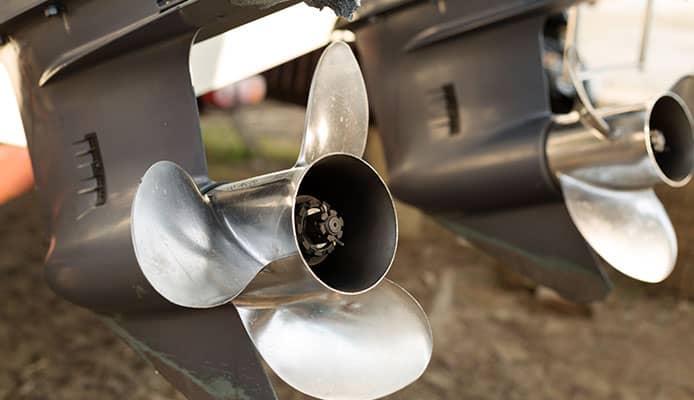
Q: Are Four Strokes Always Better Than Two Strokes?
It depends on what your needs are, but they are usually better. Despite 4 strokes being larger and heavier, they allow better speed control and have a nicer power curve. And, besides the fuel efficiency we’ve already mentioned, they are also quieter in operation.
On the other hand, a 2 stroke engine has some pluses too. It’s generally lighter (when comparing motors with the same power), and has a quicker throttle response for getting out of a risky situation fast. However, it produces more vibration, noise, and pollution.
Q: Are Two Motors Better Than One?
As we’ve mentioned, the manufacturer will specify the strongest motor you can put on your boat. If the motors combined have the same power output as a single motor, then there is no true difference between having one or two (other than price).
However, to boost safety on the water, some people like having two (with separate fuel/power sources) in case one fails and leaves them stranded, they can still safely get back to shore on the other functioning motor.
Q: Is High-Octane Gas Best?
This is not necessarily true, and you should always use the fuel mix recommended by the manufacturer. Going for higher octane fuel won’t increase efficiency, but it will increase the running cost.
Generally speaking, petrol with a high octane rating has better detonation resistance to higher compression motors. However, sometimes this won’t be necessary for your boat.
Q: Should I Rig With The Biggest Motor Allowed?
You don’t have to, but it can certainly feel great on the water. Doing this will allow you to move at a higher speed while simultaneously improving the maneuverability of your boat.
Of course, smaller motors can be satisfactory for users that aren’t very demanding, and they can be budget-friendly too. But, if your motor needs to perform, be sure not to undersize it and always take into consideration the boat size, weight, and conditions on the water.
Q: Are Outboards Maintenance-Free?
As with any engine, some maintenance is required. Doing this is important for the motor to work properly, and also helps increase its lifespan.
Every owner's manual will have detailed instructions about cleaning, flushing, checking for damage, and other tasks. Take care of your motor between seasons, clean it properly, and get a good outboard motor cover.
Q: What Speed Can You Get With Small Outboards?
This depends on the motor power as well as the boat’s weight. Most small outboards will deliver between 5 and 10mph. Larger motors rely on getting you on the plane (lifting the boat so it glides on the surface of the water, which greatly reduces drag and increases the speed.
Globo Surf Overview
A powerful outboard motor can really bring new life into your boat. The best outboard motors are available for very affordable sums nowadays, and the fact that they last a very long time makes them an even better investment.
Hopefully, you’ve found the information in the reviews and guide helpful so you can fit the best portable outboard motor on your boat and make the time on the water even more exciting.
More Boating Parts Reviews:
- Boat Seats
- Marine Radars
- Boat Fuel Stabilizers
- Boat Fuel Tanks
- Marine Toilets
- Marine Power Inverters
- Boat Steering Wheels
- Marine Battery Boxes
- Marine Battery Chargers
Boat Switch Panels
More Motor Reviews:
- Kayak Trolling Motor
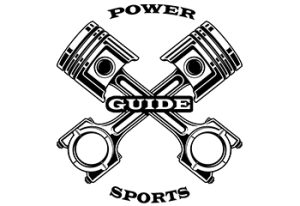
8 Of the Best Outboard Motors in 2023 [Video]
Based on our research, 8 of the best outboard motors to buy in 2023 are as follows:
- Tohatsu MFS5D-LPG
- Suzuki DF2.5
- Suzuki DF100B
- Suzuki DF350A
- Yamaha XTO Offshore F450
- Mercury Racing 450R
- Mercury Verado 600
If you want to find out more about these outboards, this post is for you.
We at PowerSportsGuide have compiled the key specs and info of these motors under one roof!
8 Of the Best Outboard Motors in 2023
1. tohatsu mfs5d-lpg.
The innovative Tohatsu MFS5D-LPG is arguably one of the best outboard motors to buy in 2023.
It can be fueled with Propane or Liquefied Petroleum Gas (LPG), which can be a game changer for sailors who won’t have to carry gasoline on their boats any longer.
What’s more, this motor is reportedly cleaner and more fuel efficient than its gas-powered counterparts.
Key specifications:
- Engine: 4-stroke, 1 cylinder
- Displacement: 123cc
- Bore x stroke: 59 x 45 mm
- Power: 5 HP
- Starting: Manual
- Control: Tiller
- Gear ratio: 2.15:1
- Shaft: 15”, 20”, 25”
- Weight: 59.5 lbs.
2. Suzuki DF2.5
If you are looking for a lightweight portable outboard, the Suzuki DF2.5 is for you.
This model is reportedly the lightest portable outboard available in the 2.3-3.5 HP class.
You can expect the dry weight of this motor to be as low as 29-30 pounds. In contrast, competitor models can weigh anywhere from 37 to 61 pounds.
- Engine: 4-stroke, 1-cylinder, OHV
- Displacement: 68cc
- Bore x stroke: 48 x 38 mm
- Power: 2.5 HP
- Fuel delivery system: Carburetor
- Weight: 29-30 lbs.
3. Yamaha F25
The Yamaha F25 is claimed to be the most powerful portable outboard motor available.
While major competitors offer power heads with a maximum power of 20 HP, the Yamaha F25 delivers a remarkable 25 HP.
It shares its 432cc twin engine and lower unit with its 15 and 20-HP siblings.
- Engine: 4-stroke, 2 cylinders
- Displacement: 432cc
- Bore x stroke: 65 x 65.1 mm
- Power: 25 HP
- Fuel delivery system: EFI
- Lubrication: Wet Sump
- Ignition: CDI Microcomputer
- Starting: Electric & Manual
- Control: Remote Mechanical or Tiller
- Gear ratio: 2.00:1
- Weight: 126-143 lbs.
4. Suzuki DF100B
The Suzuki DF100B is the lightest 100 HP outboard in the marketplace.
This model is designed with a 1502cc, inline-4 power head, which is pretty much the same as the one found in 70-90 HP models.
Unlike its 2.1L predecessor, it comes with lower displacement, a smaller gearbox, and the innovative “lean burn” technology, which ensures outstanding fuel consumption.
- Engine: 4-stroke, Inline-4, DOHC, 16-valve
- Displacement: 1502cc
- Bore x stroke: 75 x 85 mm
- Fuel delivery system: Multi-Point Sequential Electronic Fuel Injection
- Starting: Electric
- Control: Remote
- Gear ratio: 2.59:1
- Weight: 346-355 lbs.
5. Suzuki DF350A
The popular Suzuki DF350A was released in 2017 as the flagship Suzuki outboard motor.
It comes with a massive 4390cc, V6 engine featuring 24 chain-driven valves, dual fuel injectors per cylinder, and dual overhead camshafts. It shares its power head and gearbox with the DF325A and DF300B.
The DF350A has built its reputation on providing great fuel economy, a smooth performance, and an affordable price tag.
On top of that, it comes standard with an innovative dual-prop drive system.
- Engine: 4-stroke, V6, DOHC, 24-valve
- Displacement: 4390cc
- Bore x stroke: 98 x 97 mm
- Power: 350 HP
- Trim Type: Power Trim and Tilt
- Gear ratio: 2.29:1
- Weight: 727-745 lbs.
6. Yamaha XTO Offshore F450
The award-winning Yamaha XTO Offshore F450 represents the flagship motor in the Yamaha outboard lineup. (Hence, it is also the most expensive! )
Originally released as a 425 HP model, the 5559cc, V8 engine of the XTO Offshore F450 produces a whopping 450 HP.
- Engine: 4-stroke, V8, DOHC, 32 valves
- Displacement: 5558cc
- Bore x stroke: 96 x 96 mm
- Power: 450 HP
- Fuel Induction System: Direct Injection / Up to 2900 PSI
- Gear ratio: 1.79:1
- Shaft Length: 25″ – 30″ – 35″
- Weight: 963-1010 lbs.
7. Mercury Racing 450R
As the name suggests, the powerful Mercury Racing 450R is designed for racing purposes, but it’s also commonly used on high-performance recreational boats.
This motor enjoys a 4.6L, V8 engine option featuring a water-cooled, 2.4L, belt-driven, twin-screw supercharger that ensures an amazing hole-shot acceleration.
- Engine: 4-stroke, V8, DOHC
- Displacement: 4572cc
- Bore x stroke: 92 x 86 mm
- Fuel System: EFI
- Lubrication: Integrated wet sump with oil cooler
- Gear ratio: 1.60:1
- Trim System: Power Trim and Tilt
- Shaft Length: 20″ – 25″ – 30″
- Weight: 689 lbs.
8. Mercury Verado 600
Mercury’s Verado 600 is the most powerful model in the lineup, powered by a naturally aspirated, 7554cc, V12 engine rated at 600 HP.
It shares its power head and gearbox with its 500 HP sibling.
- Engine: 4-stroke, V12, DOHC
- Displacement: 7554cc
- Power: 600 HP
- Starting: Electric Start with SmartStart Protection
- Control: Integrated Electro-Hydraulic Power-Steering
- Gear ratio: 1.50:1
- Shaft Length: 20″ – 25″ – 30″ -35”
- Weight: 1260 lbs.
Conclusion – Which are the Best Outboard Motors to Buy in 2023?
There are many great outboard motors in the marketplace, but our picks for 2023 are as follows:
- Tohatsu MFS5D-LPG : Propane/LPG powered, 5 HP portable outboard
- Suzuki DF2.5 : The lightest portable outboard with a 2.5 HP gasoline engine
- Yamaha F25 : The most powerful portable outboard utilizing a 25 HP engine
- Suzuki DF100B : Marketed as the lightest 100 HP outboard
- Suzuki DF350A : The flagship Suzuki outboard motor, equipped with a 350 HP, 4.4L V6 power head, and a dual-prop drive
- Yamaha XTO Offshore F450: High-end Yamaha outboard with a 450 HP, 5.6L, V8 engine
- Mercury Racing 450R : Race-intended Mercury outboard designed with a 450 HP, 4.6L, V8, supercharged engine
- Mercury Verado 600: The most powerful Mercury outboard in the marketplace, utilizing a naturally-aspirated, 7.6L, V12 engine rated at 600 HP
References :
tohatsu , mercurymarine , yamahaoutboards , suzukimarine
Related Articles
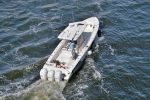
The prices of Mercury outboard motors start at $1,000 and climb up to a whopping…

The prices of Suzuki outboards start at $800 and climb up to a whopping $35,000.…

The prices of Yamaha outboard motors start at $1,000 and climb up to a whopping…
Recent Content
Ski-Doo MXZ 700 Specs and Review [Video]
The MXZ 700 was a very popular high-performance trail snowmobile manufactured in the early 2000s. It was built on the innovative ZX chassis, which housed the extremely reliable 698cc...
‘99-‘02 Ski-Doo MXZ 600 Specs and Review [Video]
The ’99-’02 MXZ 600 was a high-performance trail Ski-Doo marketed around the Millennium. It was built on the ZX chassis, which featured different rear suspensions depending on the year...

IMAGES
VIDEO
COMMENTS
Yamaha's F70 outboard motor is perfect for family fishing and fun. Weighing 253 pounds, it's the lightest in class and delivers quick starts, high performance and efficiency for aluminum fishing boats, pontoons and fiberglass boats. This 1.0-liter engine also boasts the best horsepower-per-liter ratio in its class.
Motor yachts come in different sizes, catering to every desire. From compact and maneuverable models around 33 feet (10 meters) to sprawling luxury palaces exceeding 131 feet (40 meters), there's a perfect fit for every dream. Pricing Considerations: Smaller motor yachts (33ft - 50ft) typically range from $500,000 to $3 million.
Newest 2023 Outboard Motors. In 2023, the big news is still Mercury's introduction of the V-10 350- and 400-hp Verados. Filling the gap between their existing V-8 ad the big V-12, the V-10s are naturally aspirated, and replace the supercharged V-6 Verados in this horsepower range.
These remarkable 330-pound outboard motors work in tandem with the company's 160-watt-hours per kg batteries. Evoy says the motor is best suited for boats 18-25 feet long for single installments, and 25-35 feet long for dual outboards.
Motor weight: 10.5kg. Battery weight: 9kg. Battery capacity: 1276Wh. Top speed RIB: 4.5mph. Top speed skiff: 6.0mph. Thrust: 31kg/68lbs. The Chinese firm ePropulsion has been developing its electric outboard motor range and lithium batteries for some time. We tested the Spirit 1.0 Plus and Evo, both 1kW motors with integral batteries.
Headliners will include the likes of the 295-foot Corsair Nero, the 278-foot Victorious by AKYacht, the 230-foot Turquoise-built Talisman C, and 213-foot Benetti Triumph among brokerage yachts ...
Which 150-hp Engine is Best For You? The 150-hp outboard engine is a workhorse for bowriders and center consoles/dual consoles in the 18' to 22' (5.48 to 6.7 m) range, depending on the application. ... lots of attention from the coastal and inshore cruising crowd that has to contend with low bridges but still wants a yacht built to high ...
Anbull 2-stroke. While the Coleman was the best overall outboard engine, the Anbull 2-stroke boat motor is by far the best value. Boasting advanced cooling technology, this motor has a horsepower of around 3.6. Because it uses cool air, it can run in shallow waters, especially in comparison to other motors out there.
4-18 HP for boats between 20-30' (approximately 2,000-10,000lbs) 18-34 HP for boats between 30-40' (10,000lbs or more) There are some things to consider when deciding how much horsepower you need or want. Location and the type of conditions you expect you'll be sailing in is one of the biggest factors.
The best part is that once you find an appropriate outboard motor, we'll even help you find a dealer with just one click. Most Popular Outboard Motors MERCURY 600HP Verado, YAMAHA 425HP XTO, SUZUKI 350HP, MERCURY 350HP Verado, YAMAHA 300HP, MERCURY 300HP FourStroke, YAMAHA 250HP VMAX, HONDA 250HP, MERCURY 250HP FourStroke, MERCURY 250HP Pro XS ...
Galeon Yachts 375 GTO. Even the remnants of Hurricane Ian, couldn't dissuade the Galeon Yacht 375 GTO from its cruising mission. The small yacht's wave-splitting hull form is paired to torque-filled 600 hp Mercury Verado outboards, giving this fun-in-the-sun boat a 47-knot top hop.. The 375 GTO is a speedster, to be sure, but it's also so much more.
See for yourself - here are five of the best outboard cruisers you'll see on the water this year. Boston Whaler 420 Outrage. Boston Whaler 420 Outrage. Center consoles are popular because they do so many things really, really well. Bowriders are popular because of their versatile seating and family-friendly layouts.
Weight: 27.1kg Power: 750W / 1hp Battery: 1kWh Range: 34nm Price: $1,500. Announced in early 2022 and launched less than a year later, the Mercury Avator 7.5e is the first electric unit from the world's biggest builder of outboard engines.. The whole top plate hinges up to reveal the battery, which can be quickly removed from your electric boat or replaced for convenient charging.
Sounds good. But the truth is high-octane fuel — usually 92 or 93 octane — is a waste of money for the majority of outboards. Most are built to run happily on 87 octane. Some manufacturers — such as Tohatsu — do recommend midrange fuel, usually 89 octane. Check your owner's manual, and fuel up with what it prescribes.
5.0 (34) Mercury Marine. 2.7 (140) Volvo Penta. 1.3 (24) Written by. ConsumerAffairs Research Team. Updated: 02/13/2020. Outboard motors are mounted over the rear of the boat and use submerged ...
On a Sea Pro 239, the DFA350A pushed the boat to 54.2 mph and got 3.35 mpg at a cruise speed in the high 20s. Quad 350s pushed an aluminum Gaudet 38 to 65.8 mph. Per Suzuki MO, the DF350A offers a ...
The 42GLS Outboard serves up a fun ride and numerous amenities. Courtesy Cruisers Yachts Overview. Some builders enter the outboard market timidly, with one toe in the water at a time. Cruisers, however, jumped into the deep end with a full cannonball, first with its 38GLS and now with the triple-engine 42GLS.
With a 3-cylinder, 1.9-liter directly-injected 2-stroke, the G2 Evinrude 150 E-TEC forgoes the V6 G1's architecture for improved efficiency. As a result, you can delight in a 12mpg at a faster-trolling speed on a boat that is 20-feet long. The best outboard motor with a horsepower of 150 can be deployed on a broad range of boats.
Mercury Marine undisputedly builds the most powerful outboard engine being manufactured today. Their 600-hp Verado is the world's first V-12 outboard engine, producing a full 100 horses more than the next closest option. This engine is a 1,260-pound beast, displaces a whopping 7.6 liters, and is available in shaft lengths to 35 inches.
This boat has one cabin as well as a galley and lounge area (living room) with large windows that bring in lots of natural light and air. The twin outboard engines can transport your home to new surroundings in the blink of an eye. Best of all, boats under 40 feet may save you a million dollars (literally) over large motor yachts and provide ...
The Yamaha F200 V-6, one of the best 200 hp outboard motors, features 3.3 liters of displacement. That's 17.8 percent more than the Yamaha F200 I-4, with 2.8 liters, and that can make a big difference in acceleration. "With our F200 V-6, the torque comes on early," Meeler explains. "All things being equal, including optimum propeller ...
The first thing to notice is that over the last decade (or two), there has been a growing trend of new boats coming equipped with outboard motors. According to survey data by the NADA, the boating industry sold more outboard motor-powered crafts over the last few years than ever before. In fact, more than 165,500 outboard motors were sold in 2016.
5. Cozyel 3.5HP Heavy Duty. 6. HANGKAI 3.5-18HP 2-4 Stroke. 7. Sky Superior Engine 4-stroke 1.4HP Small. 8. Sky 3.5 Hp Superior Engine. If you're after a faster and more reliable way to move across the water, perhaps it's time you upgraded the outboard motor on your boat.
3. Yamaha F25. The Yamaha F25 is claimed to be the most powerful portable outboard motor available. While major competitors offer power heads with a maximum power of 20 HP, the Yamaha F25 delivers a remarkable 25 HP. It shares its 432cc twin engine and lower unit with its 15 and 20-HP siblings.